It seems we can’t find what you’re looking for. Perhaps searching can help.


Tag: shopify plus




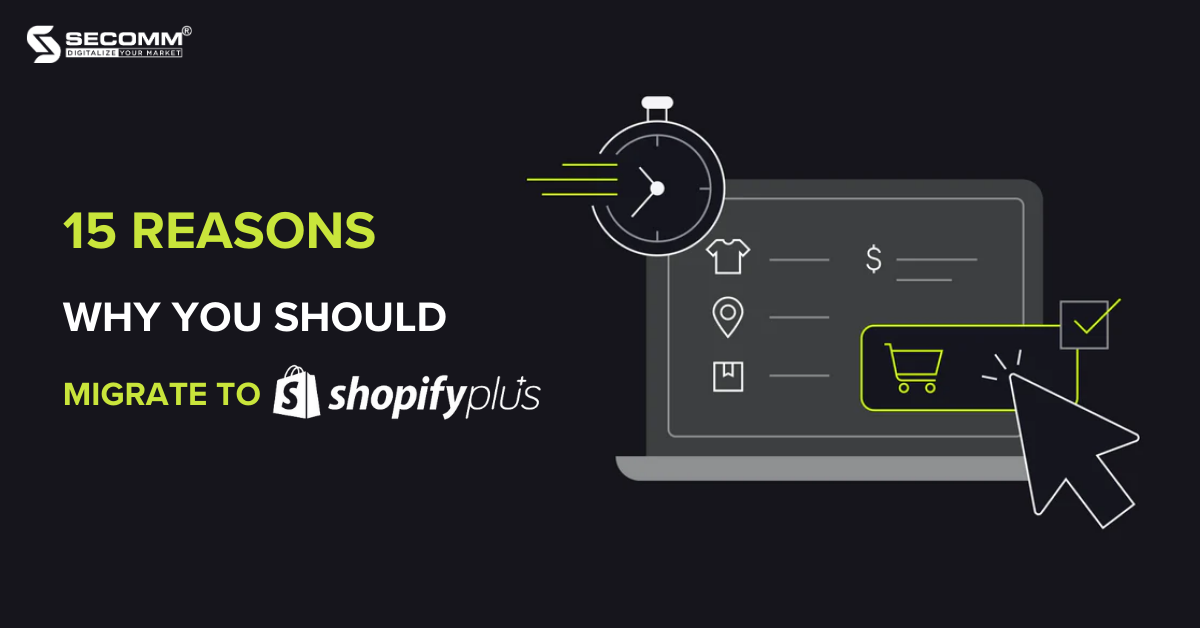
15 REASONS WHY YOU SHOULD MIGRATE TO SHOPIFY PLUS
According to the Deloitte 2022 Retail Industry Outlook, up to 67% of businesses acknowledge that the eCommerce platform is their top investment priority due to issues they face with deploying outdated platforms.
Plus, a survey by Digital Commerce 360 revealed that about 27% of businesses are trying to switch their eCommerce platforms despite the associated costs.
Among the myriad of leading platforms today, Shopify Plus stands out as a perfect choice for businesses when deciding to re-platform.
This article will show you 15 reasons why you should migrate to Shopify Plus. Why the platform gains the attention of business leaders and how it can be the key to your development and success in today’s eCommerce landscape.
What is Shopify Plus?
It is a premium solution of the popular eCommerce platform – Shopify. This version is specifically designed to meet the needs of large businesses with a high investment budget for eCommerce.
It offers flexibility, scalability, and integration, not only helping efficiently build and run an eCommerce website but also providing advanced tools and features to optimize the customer shopping experience.
Why Re-platforming to Shopify Plus?
Here are 15 notable advantages that the platform offers for your business growth, laying the groundwork for you to consider migrating to Shopify Plus.
Intuitive Interface
The dashboard interface is designed to be intuitive and user-friendly, catering to end-users and administrators who directly manage the Shopify store. The intuitive interface allows you to concentrate on developing business strategies and enhancing the customer experience, minimizing the learning curve on how to use the system.
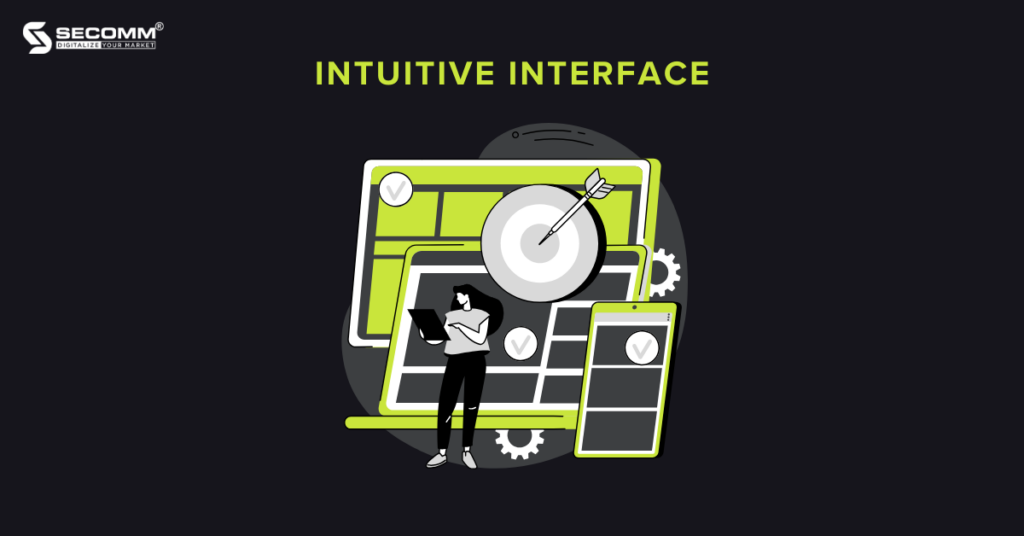
Easy-to-Estimate Costs
The second reason to migrate to Shopify Plus is the transparency in estimating and managing deployment costs. Typically, when using this platform, you may consider platform fees, transaction fees, app and add-on fees.
- Platform fee: Starting at $2000/month and increasing based on revenue
- Transaction fee: 0.15% when employing third-party payment gateways, with no charge when using Shopify Payments.
- App and add-on fee: These vary depending on the number of apps and extensions you use, ranging from a few dollars to several hundred dollars per month.
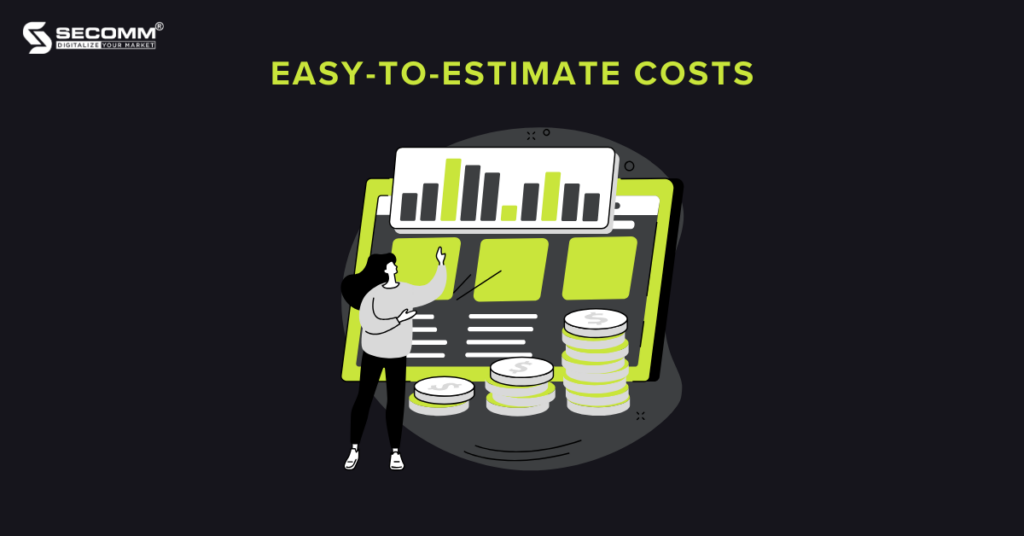
The Shopify Plus pricing system is clear and understandable, helping you know all the fees you need to pay monthly. This helps financial planning, avoiding unexpected fees during the deployment process.
Plus, if you partner with highly specialized technical development teams like SECOMM, we’ll conduct a detailed analysis and propose a phased deployment plan for the Shopify Plus eCommerce website. This approach allows you to gain clarity on how your system will be deployed at each stage, facilitating easy adjustments and flexible optimization of financial resources.
Automation
Another advantage of Shopify Plus is the automation feature. The platform provides two exclusive tools to help you facilitate this process: Shopify Flow and LaunchPad.
- Shopify Flow: A comprehensive automation tool that addresses various aspects of the Shopify Plus store. You can create automated rules to handle tasks such as automatic order identification and categorization, automated email sending, and automatic inventory updates.
- Shopify Launchpad: A tool for managing and coordinating significant events, from product launches to major promotional campaigns. You can automate tasks such as changing product prices, managing website content, and even opening/closing the Shopify Plus store based on preset schedules.
These automation tools help enhance efficiency and save time by streamlining various processes, allowing you to focus on strategic aspects of your operations.
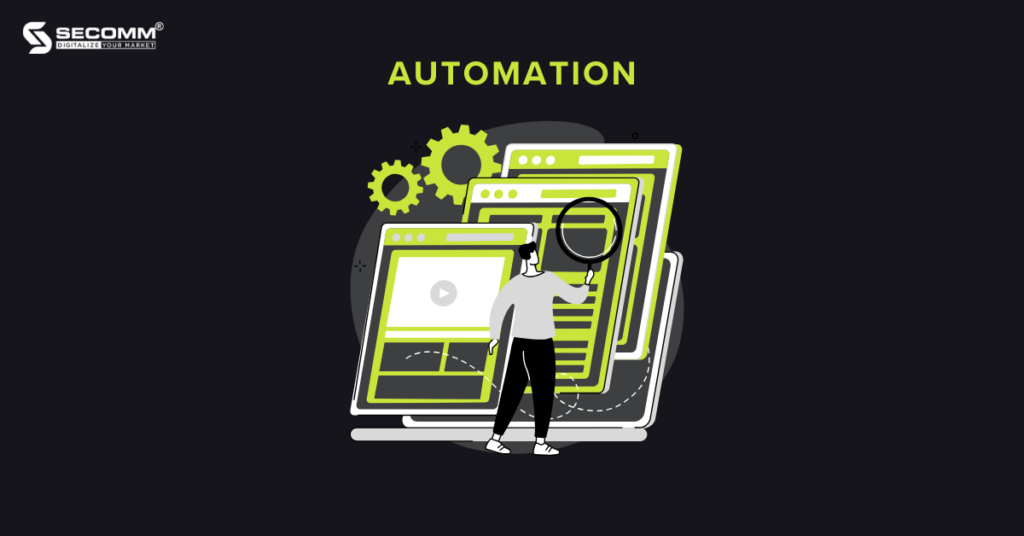
Omnichannel
Shopify Plus allows you to reach a broader audience through various sales channels, spanning from offline to online, including leveraging social media for sales and implementing B2B business models.
Plus, you can integrate the Shopify POS solution into their offline stores to offer services such as BOPIS (Buy Online, Pick Up In-Store) and BORIS (Buy Online, Return In-Store). This allows customers to shop in the manner that suits them, combining both online and in-store shopping experiences.
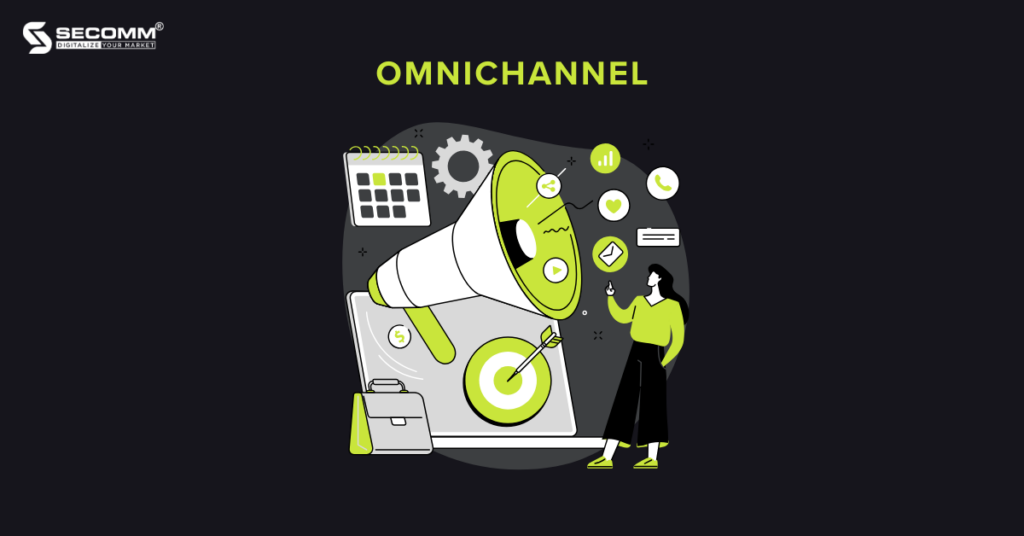
Global Selling
In 2021, Shopify introduced a comprehensive cross-border selling solution called Shopify Markets. With Shopify Markets, you can easily customize their stores for each specific target market. This includes setting prices, languages, payment methods, and delivery options to align with the preferences of local customers.
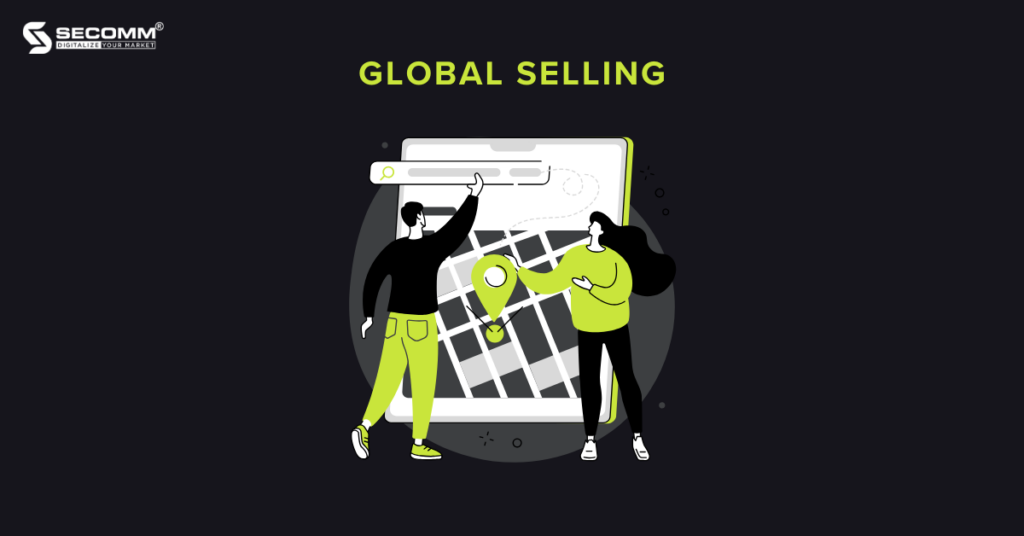
Flexible Customization
The robust customization is another reason for businesses to switch to Shopify Plus. This platform allows you to freely customize from the frontend to the backend without being constrained by any limits. In particular, you can easily customize the backend with Shopify Functions and Function APIs. Some use cases for Shopify Functions include:
- Customizing discounts
- Customizing the shopping cart and checkout
- Customizing payment options
- Customizing order fulfillment and delivery
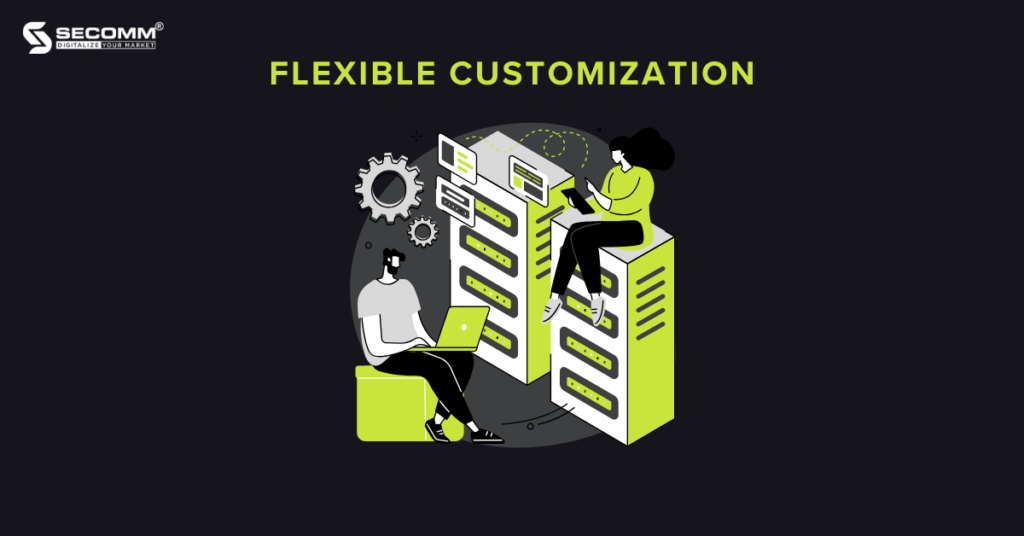
Extensive App Store
With the popularity of Shopify and Shopify Plus globally, it’s not surprising that Shopify owns a host of useful applications, some of which are specifically developed for businesses deploying Shopify Plus. Moreover, the ‘Plus’ provides diverse documentation and resources (Shopify Plus Certified App Program) for developers to create applications and extensions, contributing to the vast ecosystem of Shopify applications.
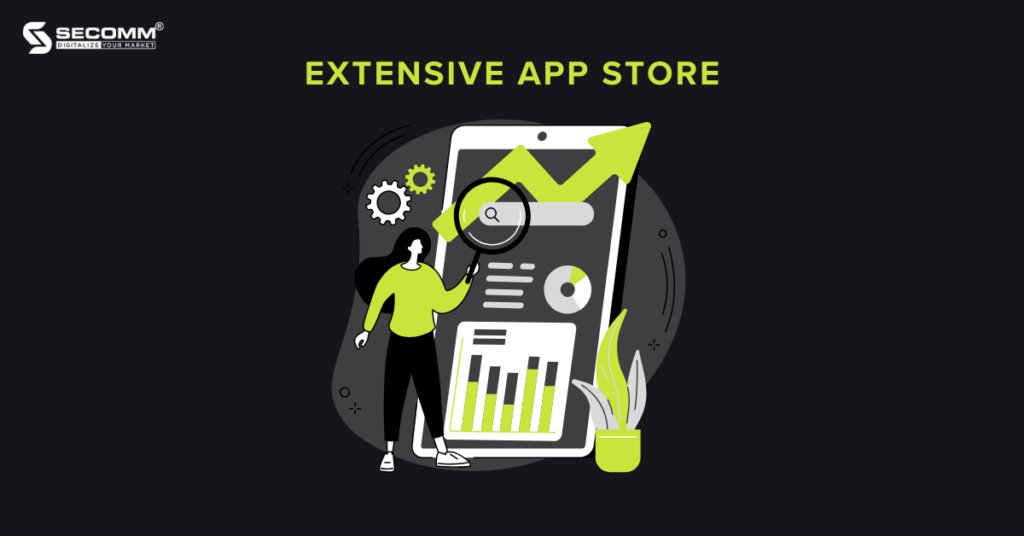
Rich Integration with Third Parties
Beyond integrating with solutions within Shopify, you can also integrate with third-party systems such as:
- Management software: ERP, CRM, PIM
- Social media platforms: Facebook, Instagram, Snapchat, Twitter, Pinterest
- Online marketplace: Amazon, Walmart, Ebay, Etsy
- Payment systems: Apple Pay, PayPal, Google Pay
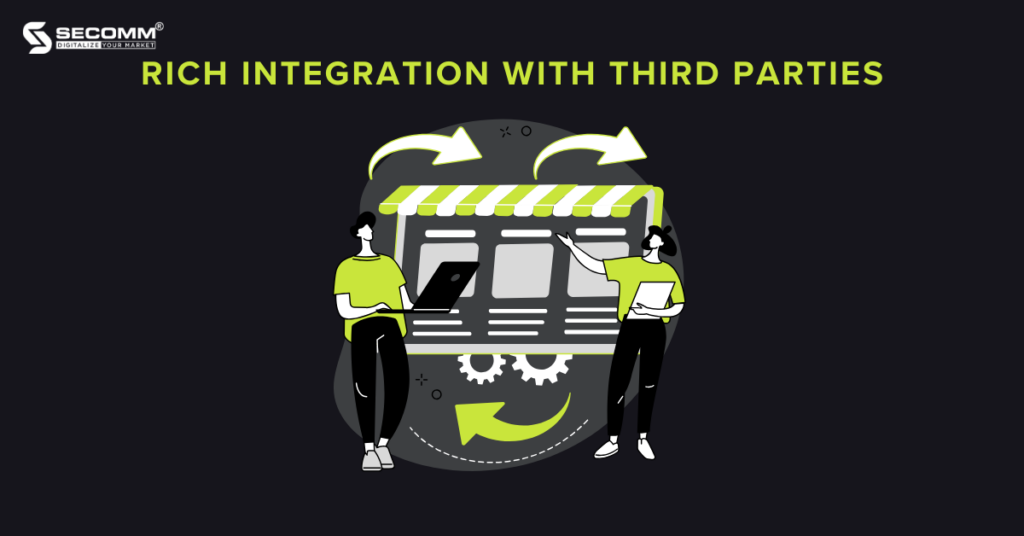
High Performance and stability
Shopify’s cloud infrastructure can cater to over 600,000 merchants and process speeds of up to 80,000 requests per second during peak periods. This system is built on a dedicated server cluster running Docker and utilizes Rails applications, alongside integrated additional features based on the AWS platform.
Therefore, Shopify Plus can provide powerful processing speed not only for the website but also during the checkout process. It can handle a massive number of visits while maintaining speed and ensuring a positive customer experience, processing over 10,000 orders per minute.
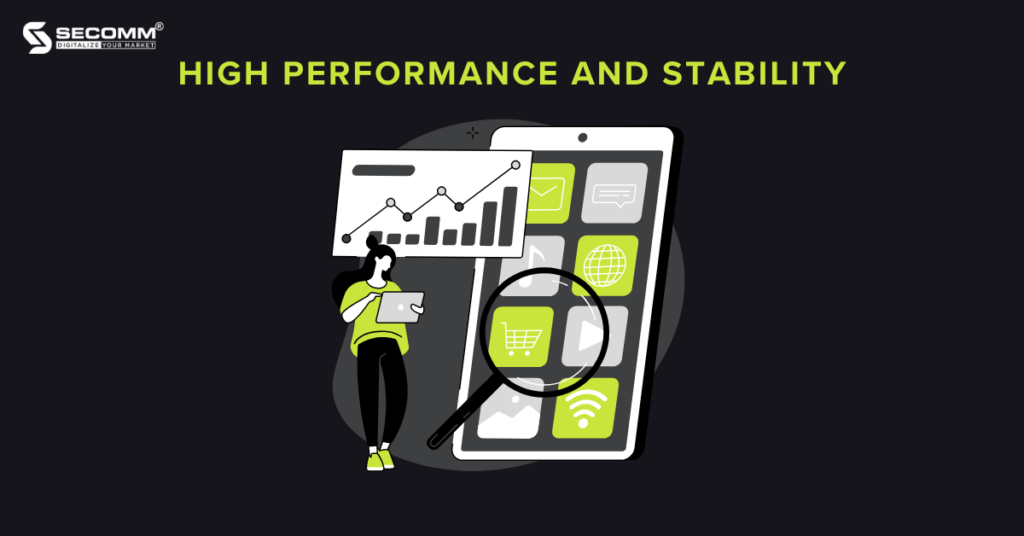
With unlimited bandwidth and flexible infrastructure, Shopify Plus can effortlessly scale to manage increased traffic during peak shopping seasons such as Black Friday, Cyber Monday, and Christmas. This enables you to handle high volumes of customers during peak times without concerns about technical issues or website disruptions.
Deploy Headless Commerce
The flexible customization of Shopify Plus also extends to providing maximum support for deploying Headless Commerce. Moreover, in 2021, the platform introduced the Hydrogen solution – an outstanding tech stack that can meet the highest requirements for building a Headless Commerce system.
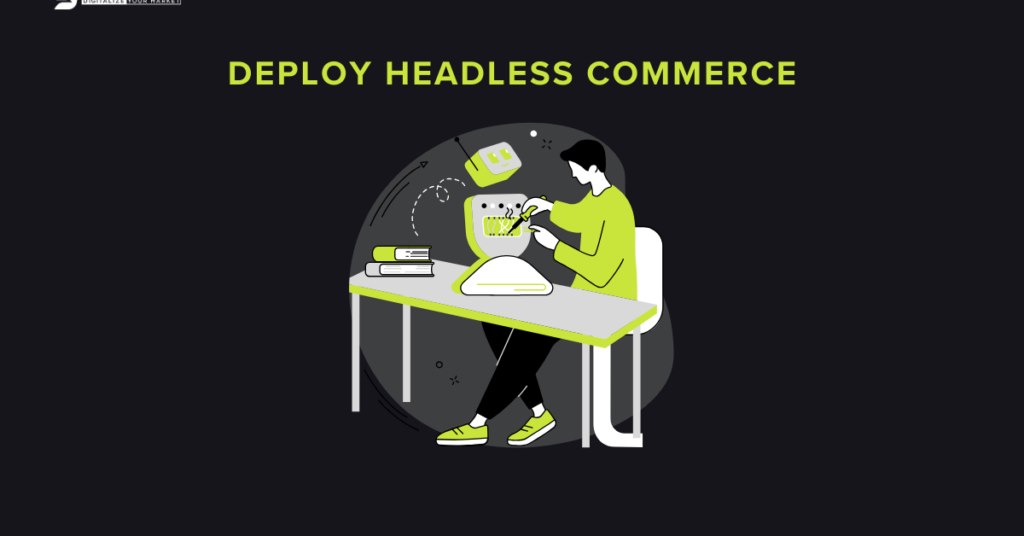
Deploy Composable Commerce
As the demand for flexibility and scalability continues to rise, alongside Headless Commerce, large businesses worldwide are increasingly focusing on the Composable Commerce model. Fortunately, Shopify is keenly attuned to customer needs and has recently introduced the Commerce Components by Shopify solution in early 2023.
As of the time of writing, Shopify stands as the first SaaS platform to provide a tech stack that can address nearly all the development needs of Composable Commerce.
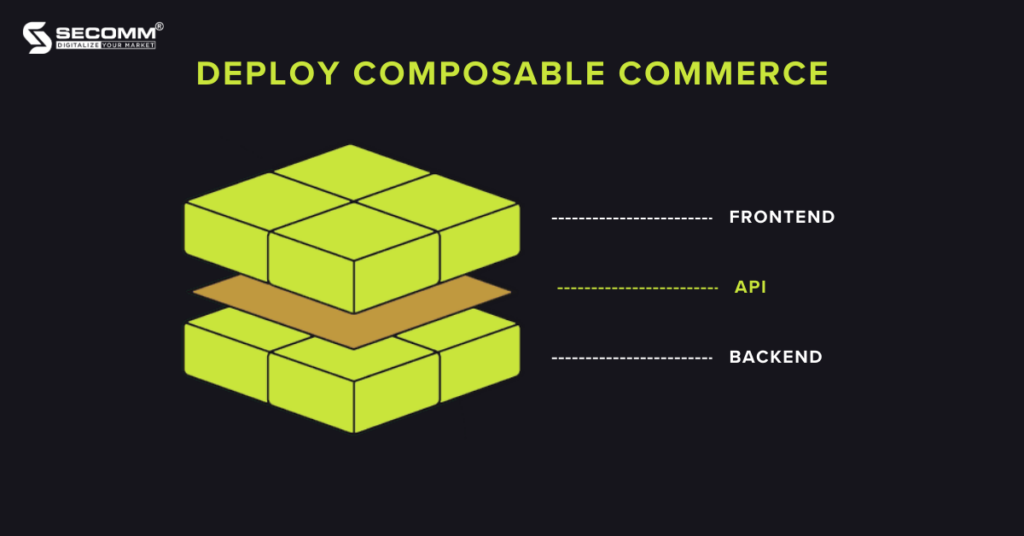
Quick to Go-live Process
While you may require considerable time to tailor your Shopify Plus store to your specific needs, the nature of SaaS ensures that the go-live process for Shopify Plus remains quicker compared to open-source platforms like Magento.
On average, the deployment and go-live time for the Shopify Plus platform is around 2-5 months, whereas with Magento, businesses take from 6-12 months to deploy and go live.
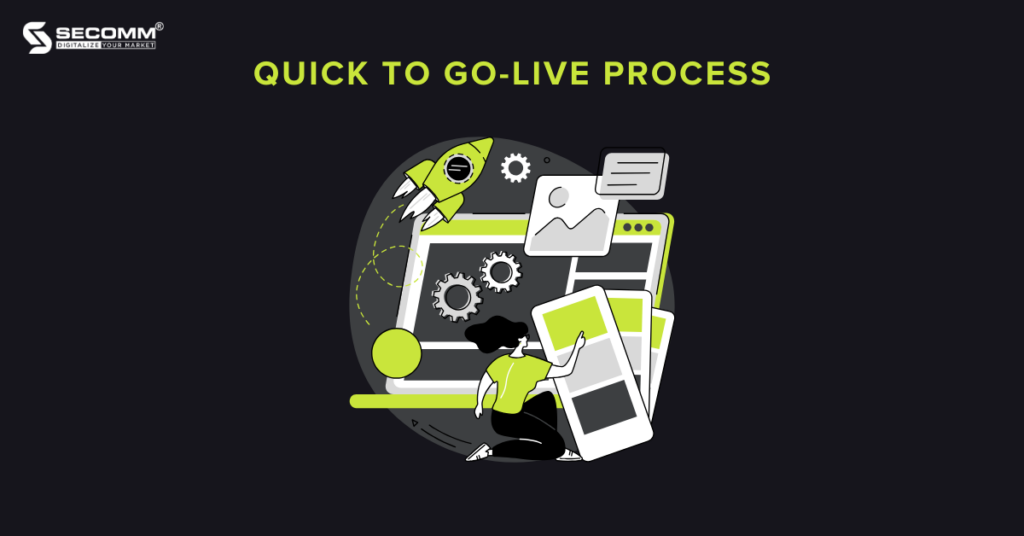
High Security
Shopify Plus provides a range of security measures and features to ensure that business data, customer information, and payment transactions are safeguarded to the highest extent possible. This includes:
- Compliance with 6 types of PCI standards (Payment Card Industry).
- Implementation of the highest level of data encryption.
- Provision of tools to detect potentially fraudulent transactions.
- Automated verification and adjustment of payment information to ensure actual transactions match payment profiles.
- Automatic data backups.
- Protection against Bot and DDoS attacks.
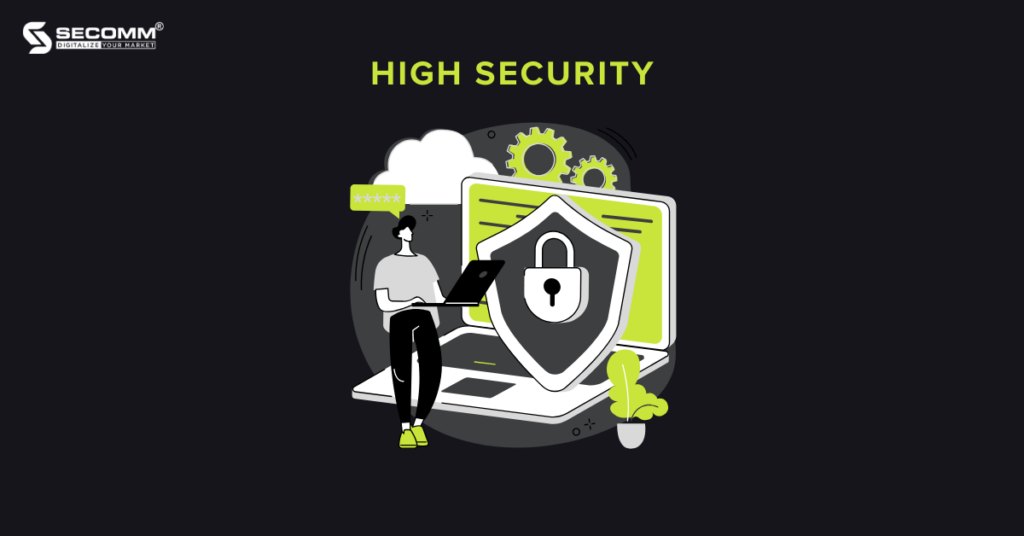
24/7 Customer Support
Similar to other eCommerce platforms, Shopify Plus provides businesses with 24/7 support through hotlines, emails, and video calls in various languages. Additionally, this platform offers instructional materials, API documentation, and the Shopify Plus Merchant Success program where businesses can access:
- Shopify Plus Academy
- Exclusive events and workshops
- Shopify Experts & Shopify Plus Partners
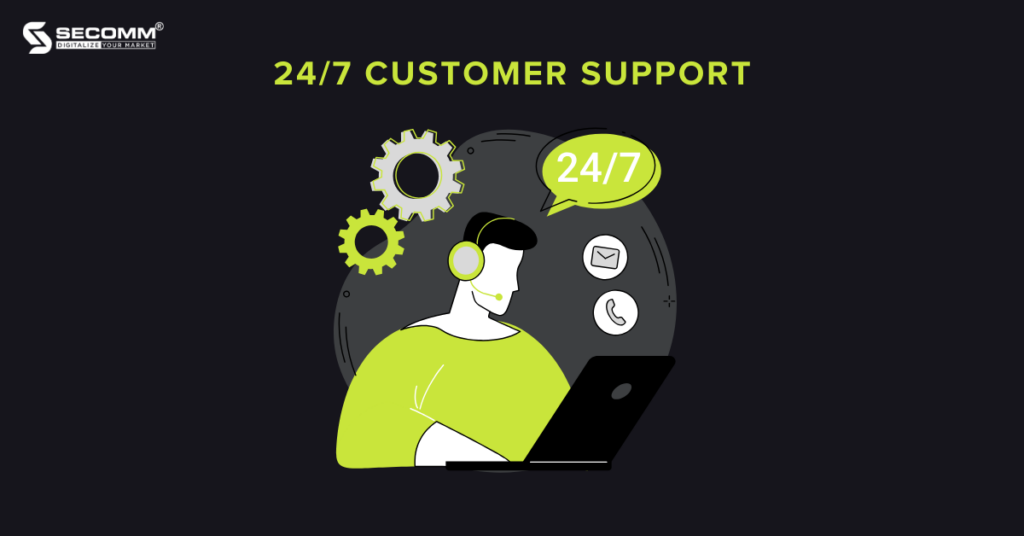
User-friendly ecosystem
Shopify Plus has a vast and diverse user ecosystem, including businesses, developers, and marketing experts. With numerous leading global businesses choosing Shopify Plus as a key tool to drive their growth and success, it is undoubtedly a testament to the excellence of this platform.
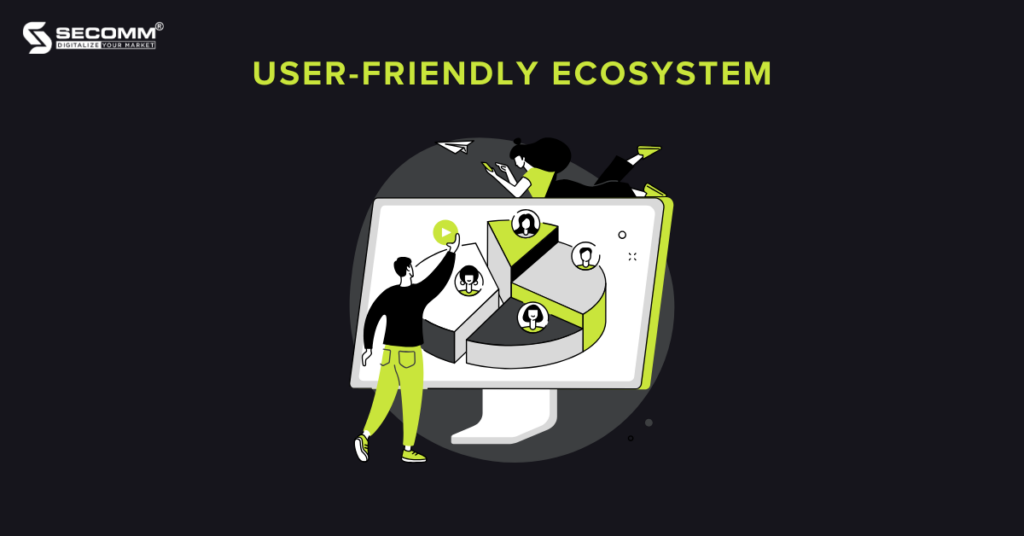
Renowned names such as Gymshark, Glossier, MZ Wallace, and Emma Bridgewater have leveraged the power of Shopify Plus to create customized shopping experiences, expand sales volumes, and reach a broader customer base. Their presence has added another reason encouraging you to switch to Shopify Plus.
Ready to migrate to Shopify Plus?
With flexible customization, scalability, and support from a reliable team of experts, the decision to deploy eCommerce with Shopify Plus or migrate from another platform to Shopify Plus has been right for sustained and competitive growth in the eCommerce landscape.
Contact SECOMM or call the hotline at 028 7108 9908 for advice and support to swiftly and effectively switch to Shopify Plus.
 2
2

 3,933
3,933

 0
0

 1
1
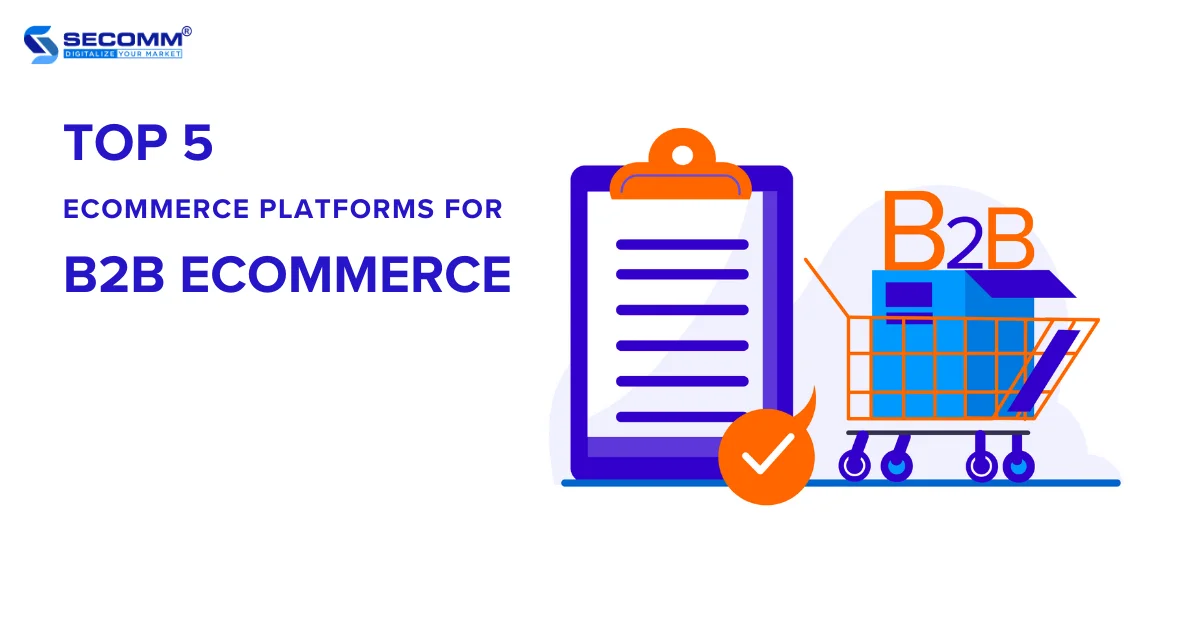
TOP 5 ECOMMERCE PLATFORMS FOR B2B ECOMMERCE
The global B2B eCommerce market is expected to reach $18.771.4 trillion by 2027.
According to McKinsey & Company, B2B enterprises are expanding their touchpoints in eCommerce, with 80% making online channels perform better than offline channels.
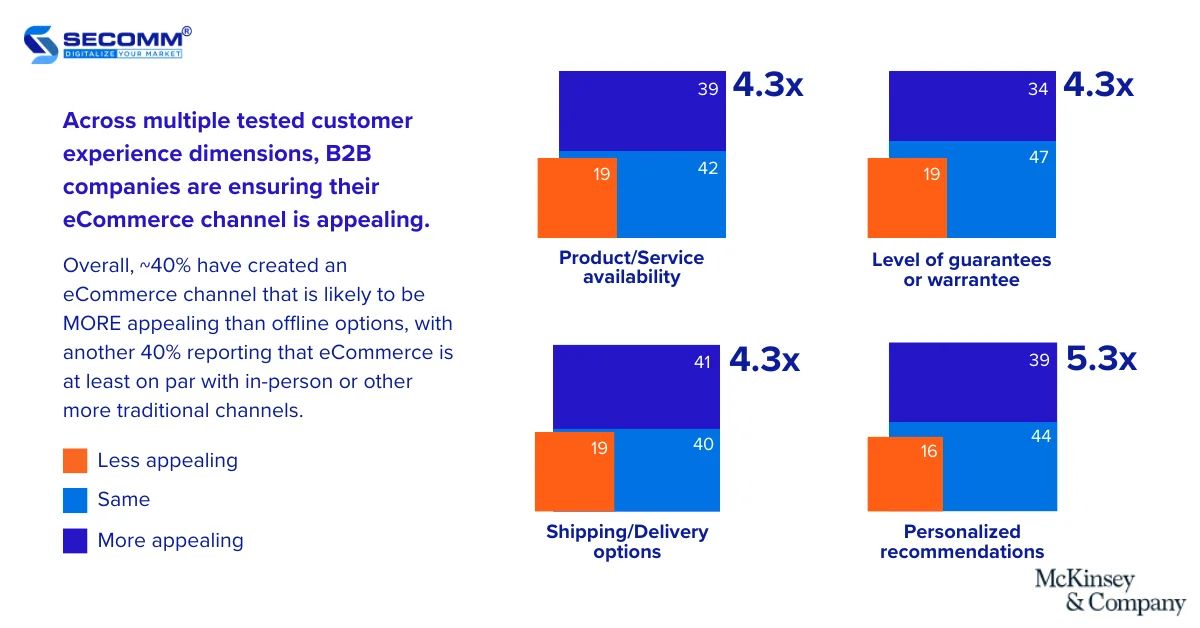
Therefore, B2B eCommerce is a rapidly growing market, with projected sales expected to reach 12.2 trillion USD by 2023. To succeed in this market, businesses always need a robust eCommerce platform.
What to Consider When Building a B2B eCommerce Website?
It is crucial for businesses to clearly define the specificities and considerations of B2B eCommerce before deciding on which eCommerce platform to implement.
Specifically, Business-to-Business (B2B) eCommerce involves commercial transactions between businesses. As a result, B2B eCommerce has distinct characteristics compared to Business-to-Consumer (B2C) eCommerce, namely:
- Target customers are businesses and organizations with the need for bulk purchasing and wholesale prices.
- Transactions are more complex, often requiring negotiations and contract agreements.
- High competitive, as numerous businesses offer similar products and services.
To succeed in B2B eCommerce, businesses need to take note of the following considerations:
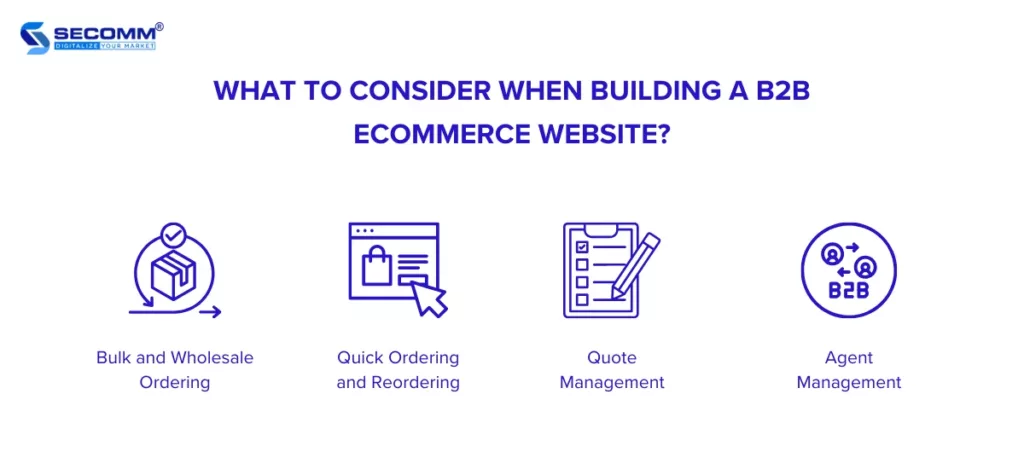
Bulk and Wholesale Ordering
Bulk and wholesale ordering are crucial factors in the revenue of B2B businesses. The quantity and pricing can vary for each business depending on the customer group and the purchased product categories.
To efficiently handle these orders in B2B eCommerce, businesses need to use order management systems and establish clear, detailed, and appropriate order processing workflows.
Quick Ordering and Reordering
The feature of quick ordering is often provided by B2B eCommerce platforms, allowing customers to create and place orders with just a few clicks. Quick ordering can be implemented through various methods, such as:
- Automating the ordering process: Using automation solutions enables customers to place orders without manually entering information.
- Integration with ERP systems: Integrating with ERP systems allows customers to place orders directly from the ERP system.
- Integration with mobile apps: Integrating with mobile apps allows customers to place orders from their mobile devices.
Unlike individual customers, B2B customers often repeat purchases of specific product categories in seasonal quantities. Therefore, B2B businesses should also incorporate a feature to remember previous orders for quick reordering.
Quote Management
Quote management in B2B eCommerce is a crucial process that helps businesses provide accurate and timely pricing information to customers, ultimately increasing sales and improving profits.
Specifically, in quote management, negotiating prices with multiple quote versions or from different suppliers is an important part of many B2B eCommerce models, allowing businesses to negotiate prices for large or complex transactions.
Agent Management
Managing information about agents, such as agent details, agent approval processes, agent hierarchies, credit limits, stock management for each agent, and managing discounts/commissions for agents, is essential.
Additionally, for B2B models involving multiple manufacturers and distributors, there may be a need for additional management of relationships between these entities and agents.
Therefore, depending on the current offline business model and the B2B eCommerce business model that the business aims to establish the most effective agent management process should be detailed.
Top 5 eCommerce Platforms for B2B Businesses
Below are the top 5 eCommerce platforms for B2B businesses, capable of addressing the specificities of B2B eCommerce.
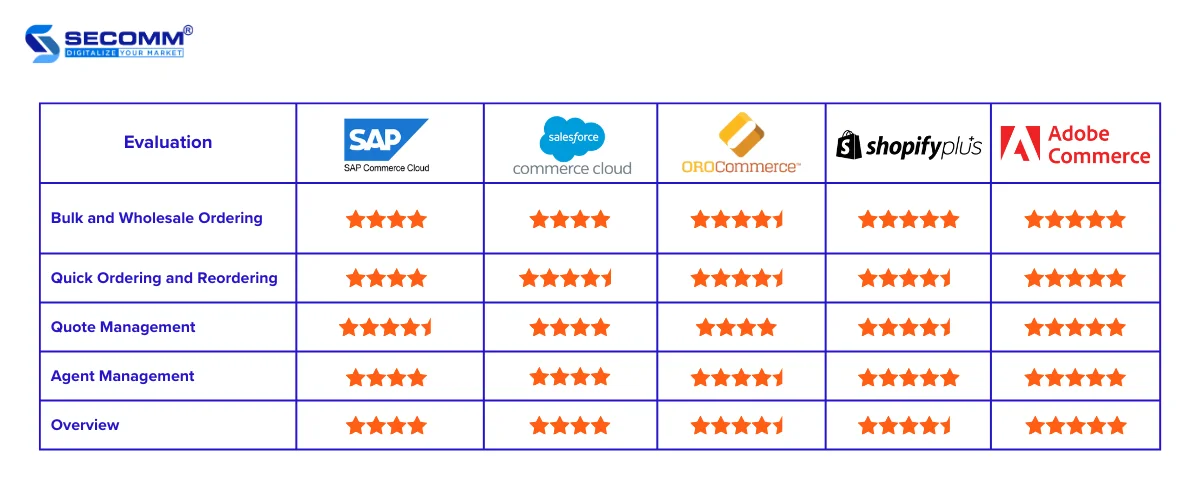
SAP Commerce Cloud
SAP Commerce Cloud is a powerful eCommerce platform suitable for B2B eCommerce businesses.
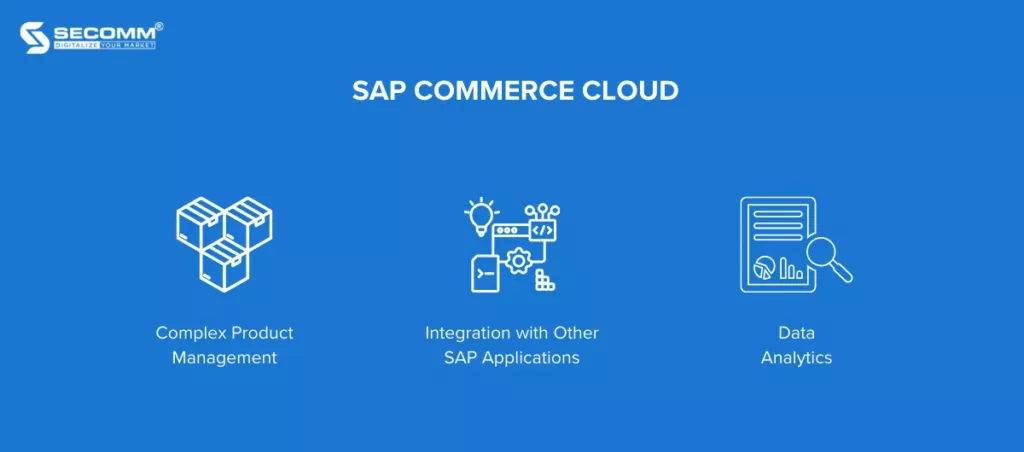
Here are some ways in which SAP Commerce Cloud can cater to B2B eCommerce:
- Complex Product Management: Allows the management of a range of complex products and services, including custom products and product categorizations. This is particularly useful for B2B businesses with a wide range of products and variations.
- Integration with Other SAP Applications: SAP Commerce Cloud can integrate with other SAP applications, such as SAP Sales Cloud and SAP Service Cloud, creating a comprehensive business system.
- Data Analytics: Provides data analytics tools to help B2B businesses track business performance, understand customer behaviour, and make data-driven decisions.
Therefore, SAP Commerce Cloud can align with B2B eCommerce by offering features and customization capabilities to meet the specific requirements of businesses in the B2B industry.
Salesforce B2B Commerce
Salesforce B2B Commerce is an eCommerce platform designed for large enterprises, including B2B businesses.
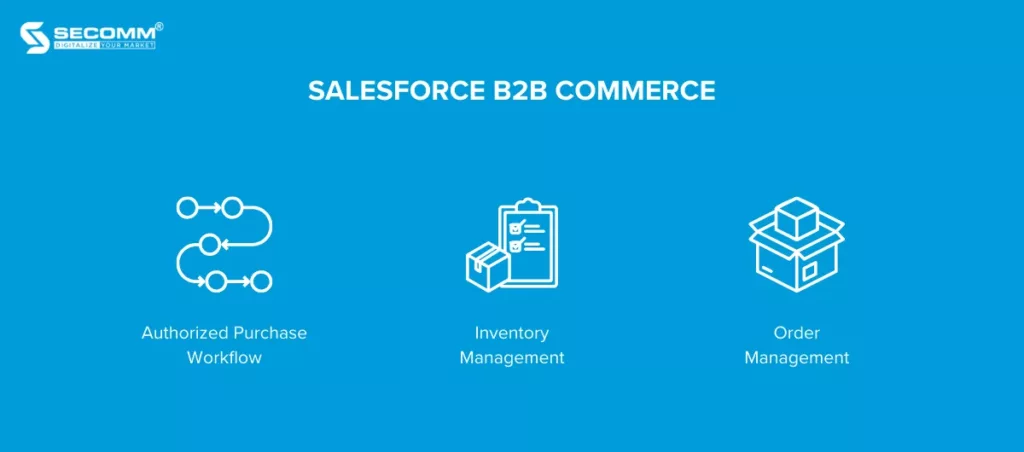
Here are some specific features and functionalities of Salesforce B2B Commerce that are suitable for B2B eCommerce:
- Authorized Purchase Workflow: Allows B2B businesses to have full control over purchasing transactions, enabling the modification of certain details from previous orders before reordering.
- Inventory Management: Streamlines the order fulfilment process and provides a clear and consistent view of inventory for both the eCommerce website and offline channels.
- Order Management: Provides robust features for order management, including the ability to automate processes, track order progress, and integrate with shipping services.
In summary, the B2B functionalities of Salesforce B2B Commerce help B2B businesses enhance sales and customer service effectiveness.
OroCommerce
OroCommerce is an open-source eCommerce platform designed for B2B enterprises. This platform provides powerful and flexible features, catering to the needs of B2B businesses of all sizes.
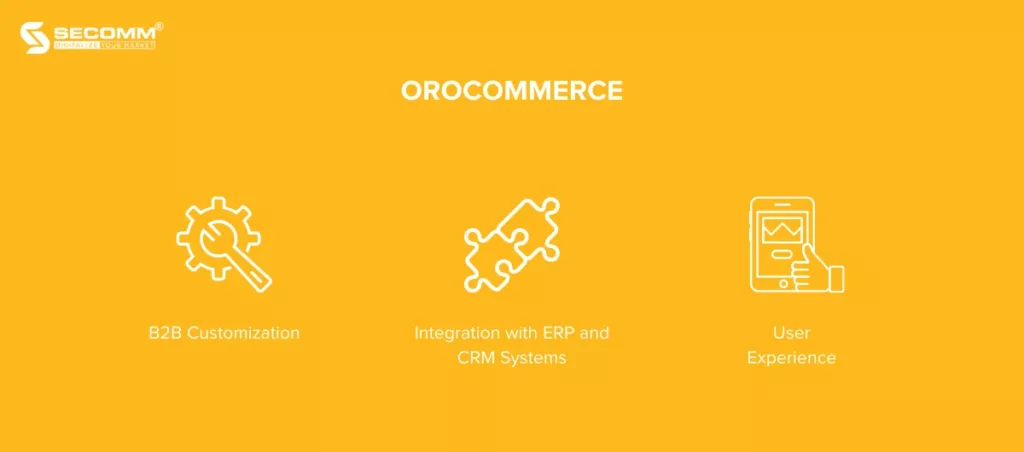
OroCommerce offers several features and functionalities specifically suitable for B2B eCommerce, including:
- B2B Customization: Provides features and functionalities for customizing the online store to align with the needs of B2B businesses, such as the ability to create price lists, request quotes, and place batch orders.
- Integration with ERP and CRM Systems: OroCommerce can be integrated with ERP and CRM systems to create a seamless sales and backend process.
- User Experience: Delivers a user experience designed specifically for B2B businesses, including the ability to create customer accounts, manage orders, and track purchase history.
Overall, OroCommerce is a robust eCommerce platform worth considering for B2B enterprises.
Shopify Plus
Shopify Plus is a cloud-based SaaS eCommerce platform designed for large enterprises, especially B2B businesses.
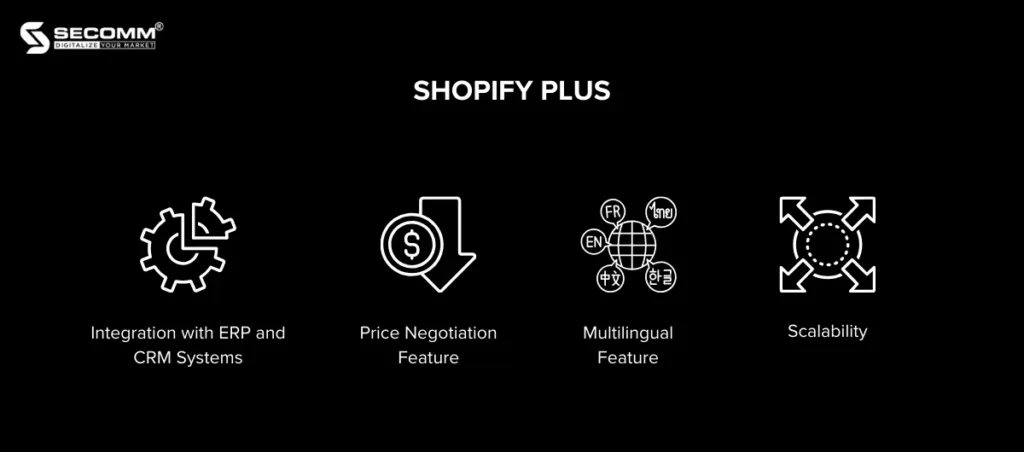
Shopify Plus provides powerful features and functionalities to meet the needs of B2B enterprises, including:
- Integration with ERP and CRM Systems: Shopify Plus can be integrated with popular ERP and CRM systems, allowing businesses to connect with existing business systems.
- Price Negotiation Feature: Provides price negotiation features, allowing businesses to negotiate prices with customers.
- Multilingual Feature: Shopify Plus can be used to create multilingual stores, enabling businesses to reach customers in multiple countries.
- Scalability: Websites built with Shopify Plus can be scaled to meet the growing needs of the business.
Some notable features of Shopify Plus that businesses can leverage include Shopify Flow, Shopify Launchpad, Shopify Payments, Shopify POS, etc.
Therefore, Shopify Plus is also an excellent choice for B2B businesses looking for a robust, flexible, and scalable eCommerce platform.
Xem thêm: 15 Lý do để chuyển đổi sang nền tảng Shopify Plus
Adobe Commerce (Magento)
Adobe Commerce (Magento) is a powerful and flexible eCommerce platform suitable for various types of businesses, including B2B enterprises.
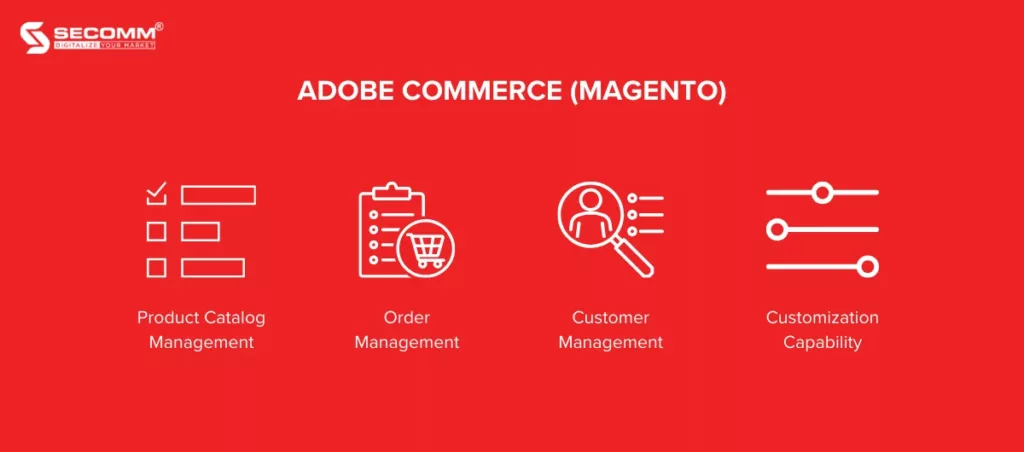
Adobe Commerce offers many features and functionalities that are well-suited for B2B eCommerce, including:
- Product Catalog Management: Provides features for managing the product catalogue, including the ability to create complex product catalogues, manage pricing and promotions, and track inventory.
- Order Management: Offers features for order management, including the ability to automate processes, track order progress, and integrate with shipping services.
- Customer Management: Provides features for managing customers, including the ability to create customer profiles, track purchase history, and send marketing emails.
- Customization Capability: As an open-source platform, it allows businesses to customize to meet specific needs.
Moreover, Adobe Commerce can quickly deploy B2B-specific features thanks to its diverse ecosystem. It is also the most customizable platform among the five mentioned.
Additionally, Adobe Commerce has a large and active user community, providing support and resources for B2B businesses.
Read more: Shopify Plus vs Adobe Commerce: Key Differences 2023
Above are 5 popular platforms preferred by B2B businesses to build eCommerce websites, serving online business goals for brands.
However, choosing the most suitable platform for each business will depend on various factors, including business strategy, budget, deployment timeline, and the long-term direction set by business managers.
Looking for a suitable eCommerce Website Development Solution?
With deep expertise and the development of complex eCommerce systems for clients such as Changi Airport Group (Singapore), Trentham Estate (Australia), and The Warehouse (Vietnam), SECOMM understands the challenges in choosing a platform and deploying eCommerce that businesses are facing.
- Comprehensive Understanding: Providing comprehensive eCommerce solutions from consulting, development, and operation to the growth of eCommerce systems.
- Deep Expertise: Over 9 years of experience in deploying complex eCommerce systems for clients from various countries.
- Customized Solutions: Proposing eCommerce solutions, including technological architecture and a suitable team for each business.
- Flexible Progress: Project timelines and schedules are adjusted according to the specific needs of the business.
Contact SECOMM now or call directly at the hotline number (028 7108 9908) for free advice on the eCommerce website building roadmap!
 2
2

 5,478
5,478

 0
0

 1
1
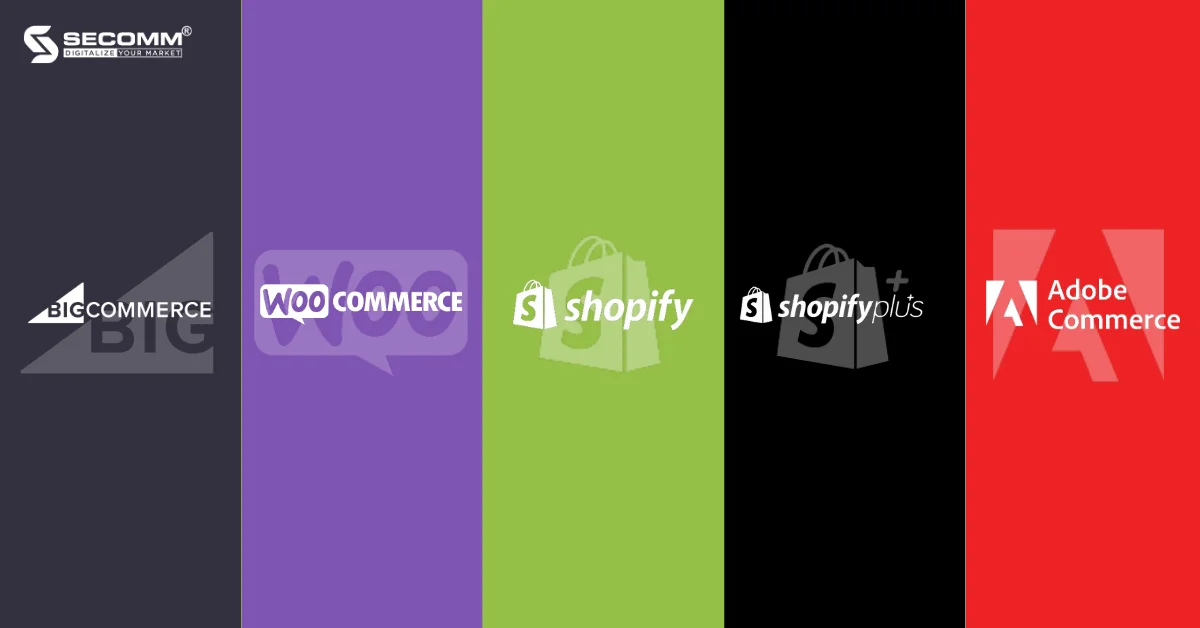
TOP 5 ECOMMERCE PLATFORMS FOR B2C ECOMMERCE
The global B2C eCommerce market is valued at 4.44 trillion USD in 2023 and is projected to reach 7.45 trillion USD by 2030, with a compound annual growth rate (CAGR) of 7.6% during the forecast period from 2021 to 2030.
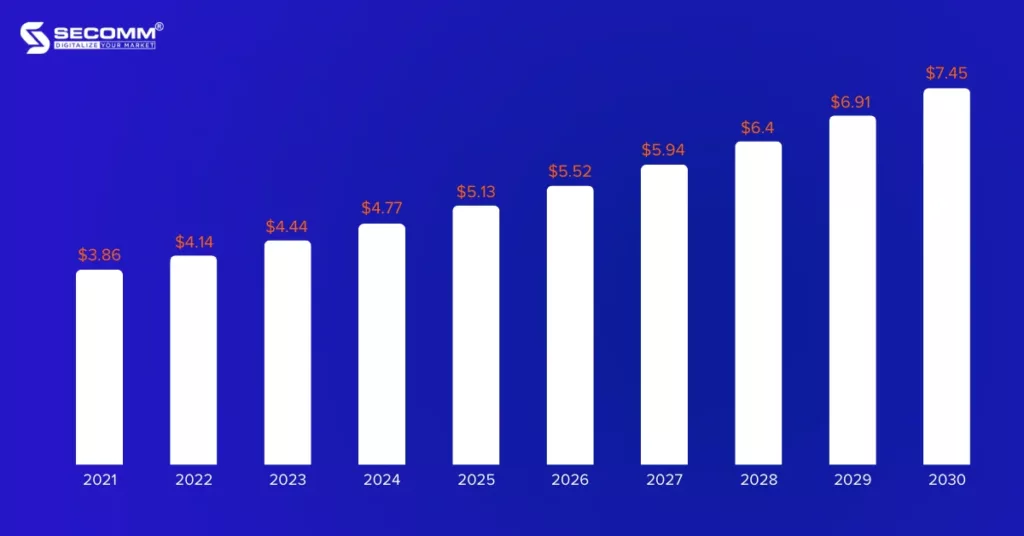
This demonstrates that eCommerce is increasingly thriving, becoming a crucial sales channel for B2C businesses. To build and develop a successful online store, businesses need to choose an eCommerce platform that aligns with their needs and business objectives.
Key elements for building B2C eCommerce
Visual User Experience
B2C eCommerce platforms typically provide a seamless shopping journey, and user-friendly interfaces, allowing customers to easily navigate, search for items, and complete transactions quickly.
This is achieved through professional UI/UX design and advanced functionality systems for eCommerce websites.
An exemplary example is CHARLES & KEITH, a fashion eCommerce website, designed with sophistication and appeal, along with easy navigation and search capabilities.
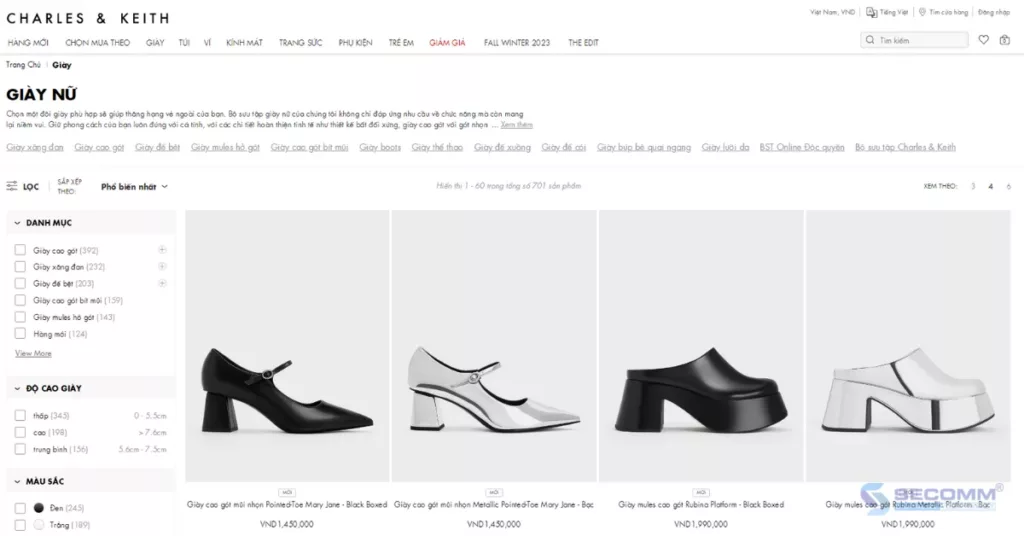
Mobile Optimization
According to Statista’s statistics, the expected number of smartphone users worldwide is projected to reach 4.96 billion by 2025. This indicates that mobile commerce is virtually indispensable in B2C eCommerce strategies.
Consumers increasingly desire the ability to shop anytime, anywhere, even while on the move, and optimizing eCommerce websites for mobile devices will meet this consumer demand.
Choosing a suitable eCommerce platform will support a range of mobile-optimized themes catering to various industries and preferences, enabling businesses to establish an effective online store and navigate for mobile users.
Simplifying the Checkout Process
Leading B2C eCommerce platforms will have a streamlined order processing system, ensuring a hassle-free payment experience for both business owners and buyers.
OneStep Checkout is a typical example that allows customers to complete their order payment on a single page. This simplifies and facilitates the payment process for customers, potentially increasing conversion rates.
Businesses can refer to PNJ’s Checkout page for comprehensive information on streamlining the shipping process all within one webpage.
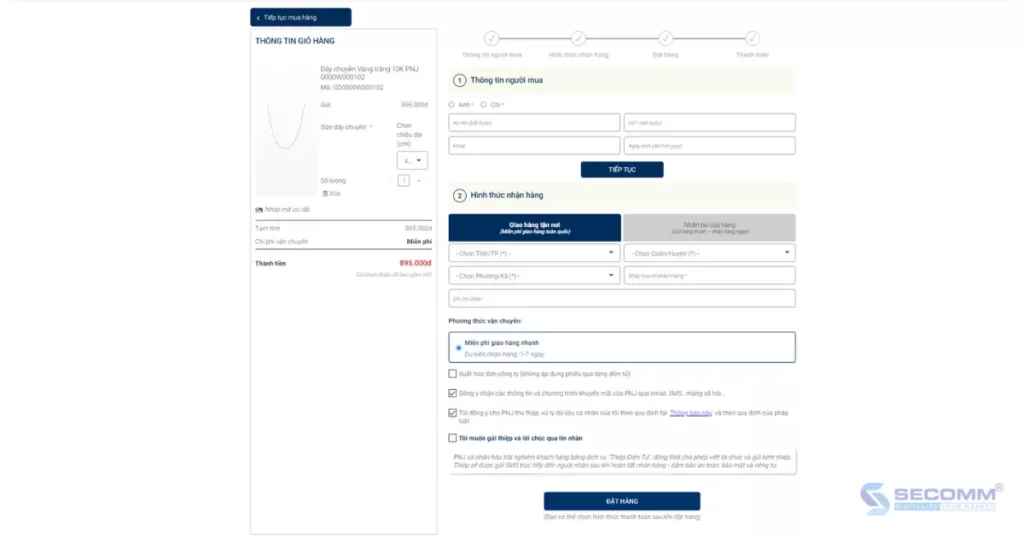
Personalizing Experience
Personalization tools allow businesses to tailor content and promotions based on consumer behaviour and preferences, supported by AI.
By integrating personalized features at relevant touchpoints within an eCommerce website, businesses can enhance conversion rates and ROI (Return on Investment).
Major eCommerce brands like Amazon, Alibaba, Best Buy, etc., consistently incorporate product recommendation features to encourage shopping behaviour from customers.
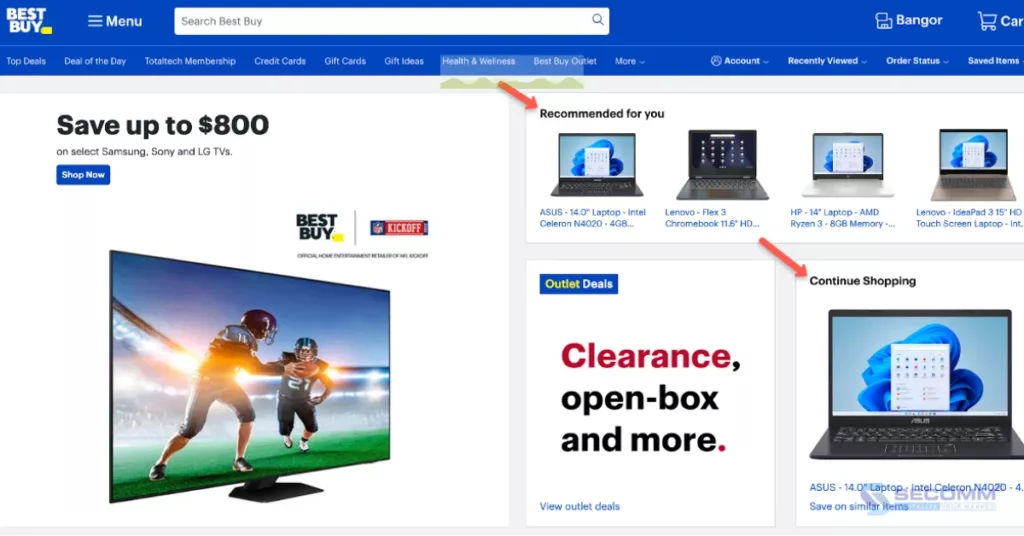
High Page Loading Speed
Another crucial aspect of B2C eCommerce is the ability for pages to load quickly and efficiently, ensuring the website maintains stable performance and effectively delivers content on all devices.
To ensure website performance, businesses should opt for major eCommerce platforms such as Adobe Commerce (Magento), Shopify Plus, BigCommerce Enterprise, etc. These platforms offer advanced performance features and robust caching mechanisms, tailored for various industries and preferences, enabling businesses to establish online stores with responsive feedback and faster page loading.
Top 5 eCommerce platforms for B2C eCommerce
Below are the top 5 eCommerce platforms that SECOMM has evaluated as suitable for businesses following the B2C model.
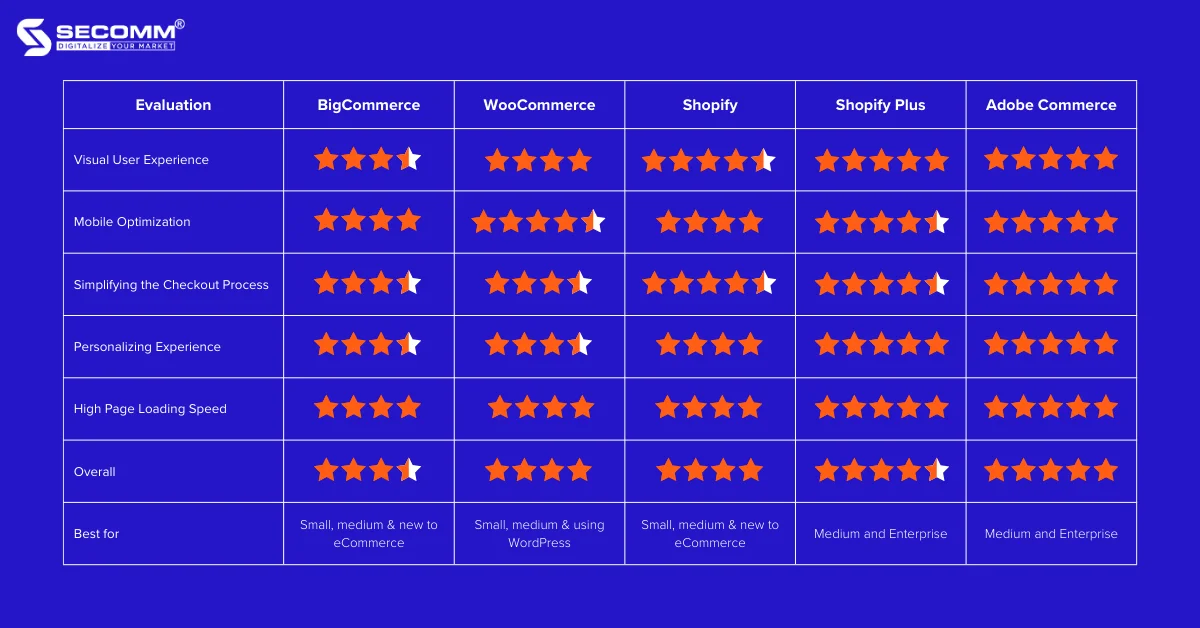
BigCommerce
BigCommerce is an eCommerce platform designed for ease of use to assist businesses in initiating their journey to build an eCommerce website.
After years of development, BigCommerce has become one of the feature-rich platforms available for creating websites, optimizing search tools, marketing, etc., with reasonable deployment costs.
Compared to other popular platforms mentioned in this article, the performance, features, and application ecosystem of BigCommerce are not overly outstanding. However, BigCommerce remains a good choice for small, and medium-sized businesses, or those entering the market.
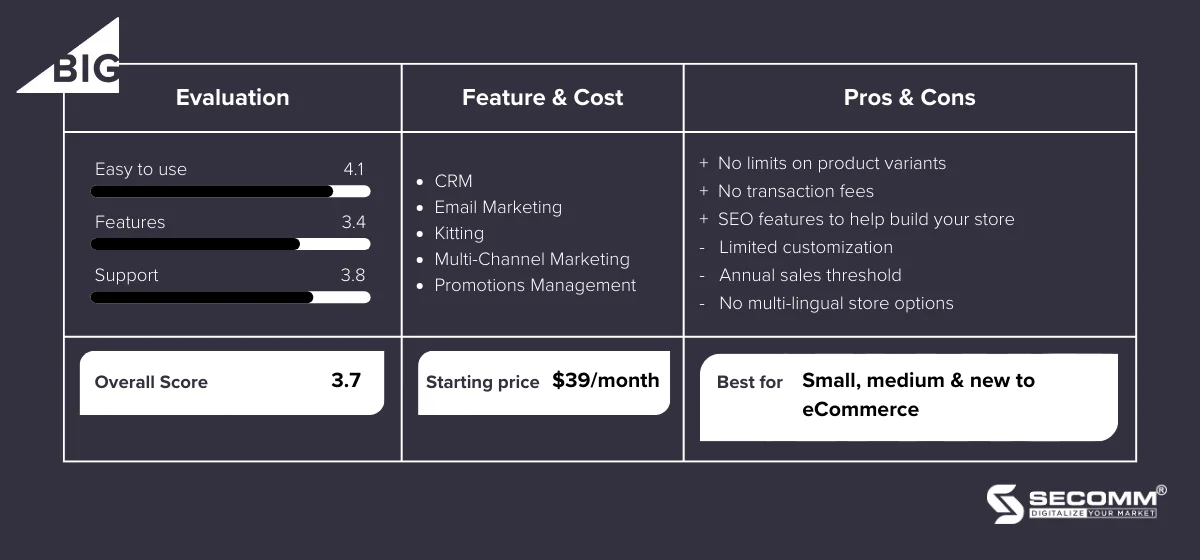
Read more: Shopify vs BigCommerce: Which platform is right for you?
WooCommerce
WooCommerce is a free WordPress plugin that enables brands to establish an eCommerce website by adding eCommerce functionality to an existing WordPress site. The WooCommerce plugin helps transform a regular WordPress website into an eCommerce site with all the necessary features, easily customizable with just a few clicks.
Businesses can leverage the extensive ecosystem of WooCommerce to upgrade both functionality and design for the most suitable interface. Therefore, WooCommerce is also a good choice for small or medium-sized B2C businesses, especially those that have previously used WordPress.
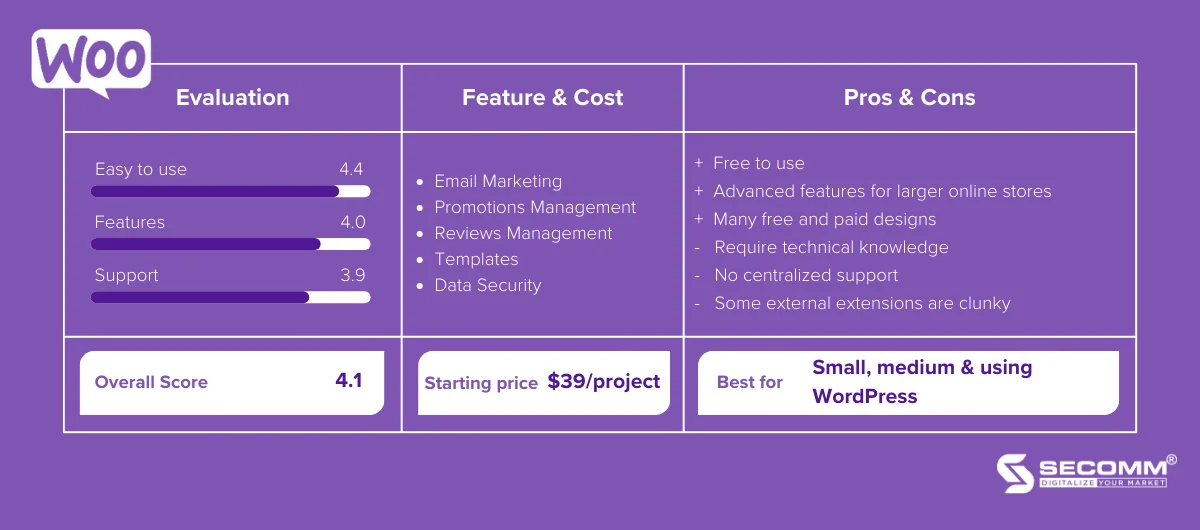
Shopify
Shopify is one of the popular eCommerce platforms that businesses can use to build, develop, and manage online stores.
Shopify operates on the SaaS (Software as a Service) model, so businesses pay a monthly fee to use the platform and must adhere to its regulations.
However, Shopify manages hosting and takes responsibility for technical issues to ensure the safety and efficient operation of the business’s eCommerce website.
The platform provides the necessary features and benefits for businesses to successfully build and develop an online store. In terms of suitability for B2C businesses, Shopify is most suitable for small to medium-sized enterprises or those entering the eCommerce market.
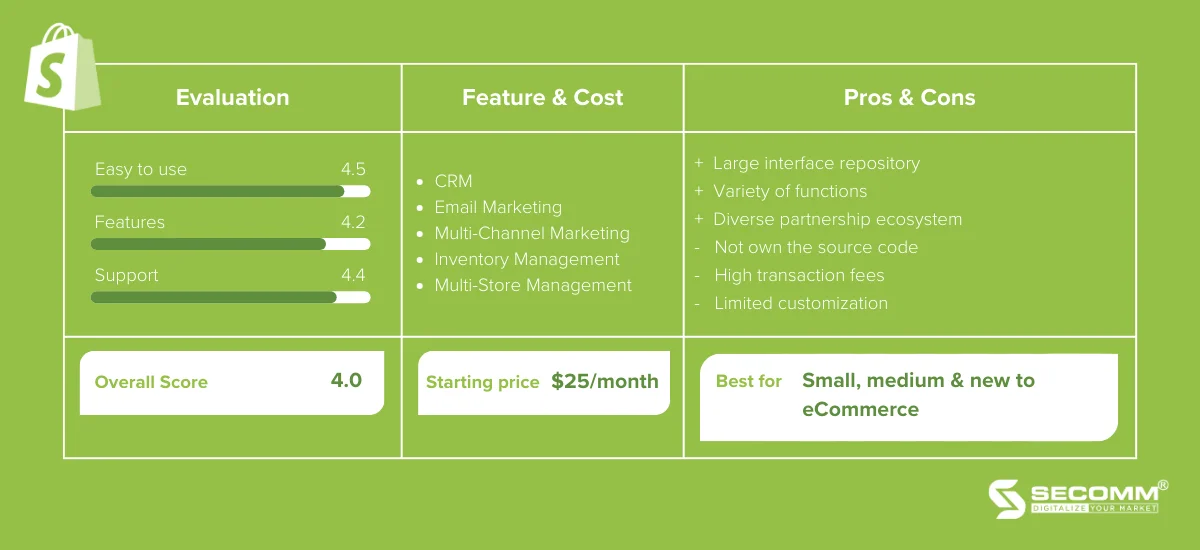
Shopify Plus
Shopify Plus is the enterprise-level version of the eCommerce platform provided by Shopify, specifically designed for large brands with an annual transaction value of over 1 million USD and high growth rates.
Unlike Shopify, Shopify Plus follows the PaaS (Platform as a Service) model, allowing businesses to utilize the development environment of Shopify Plus to develop databases, web servers, functionality, etc., for their eCommerce system.
The initial cost for using Shopify Plus is around $2,000 per month and increases gradually based on revenue. Therefore, using this platform to meet the needs of B2C eCommerce or any industry-specific requirements is relatively straightforward.
However, Shopify Plus is more suitable for medium to large-scale businesses as it requires technical knowledge and involves relatively high usage costs.
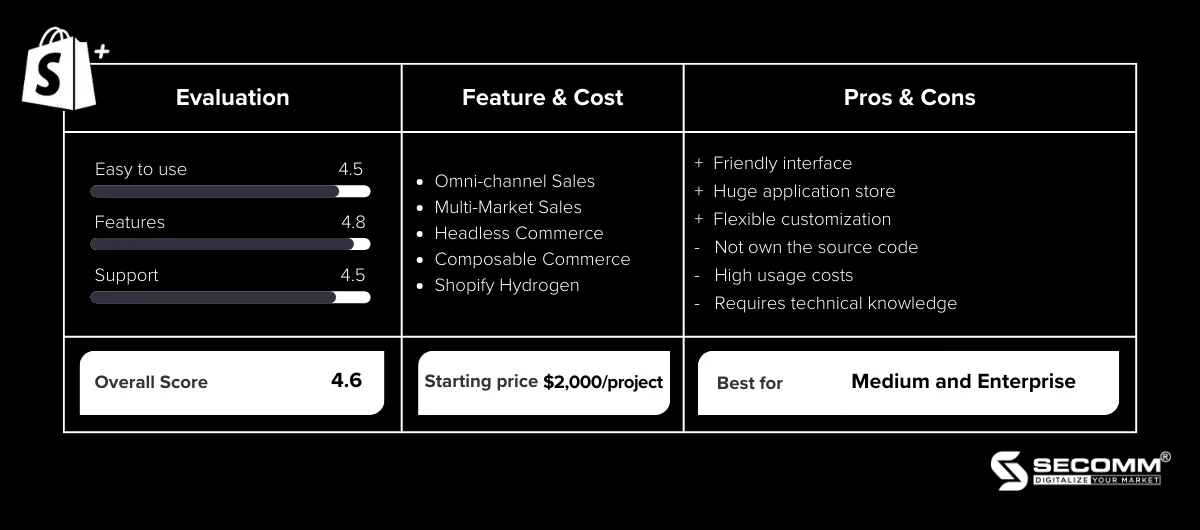
Read more:
- 6 Key Shopify Plus Features To Build eCommerce Website
- Shopify Hydrogen: Your Key Gateway To Headless Success
- Shopify Commerce Components: All You Need To Know
Adobe Commerce (Magento)
Adobe Commerce is an open-source eCommerce platform specially designed to serve medium to large-scale businesses, offering high customization and scalability. Currently, Adobe Commerce has two main versions: Adobe Commerce Cloud and Magento Open Source.
- Magento Open Source: This is the free version, available for download and use by anyone. However, businesses using this version need to take responsibility for additional fees.
- Adobe Commerce Cloud: This is the paid version, deployed and managed on the cloud by Adobe. This version is further divided into two types: on-premise, allowing businesses to have control over hosting, and on-cloud, providing hosting with a certain fee.
As one of the leading platforms in eCommerce, Adobe Commerce is consistently highly regarded across all scales and industries, including B2C eCommerce businesses.
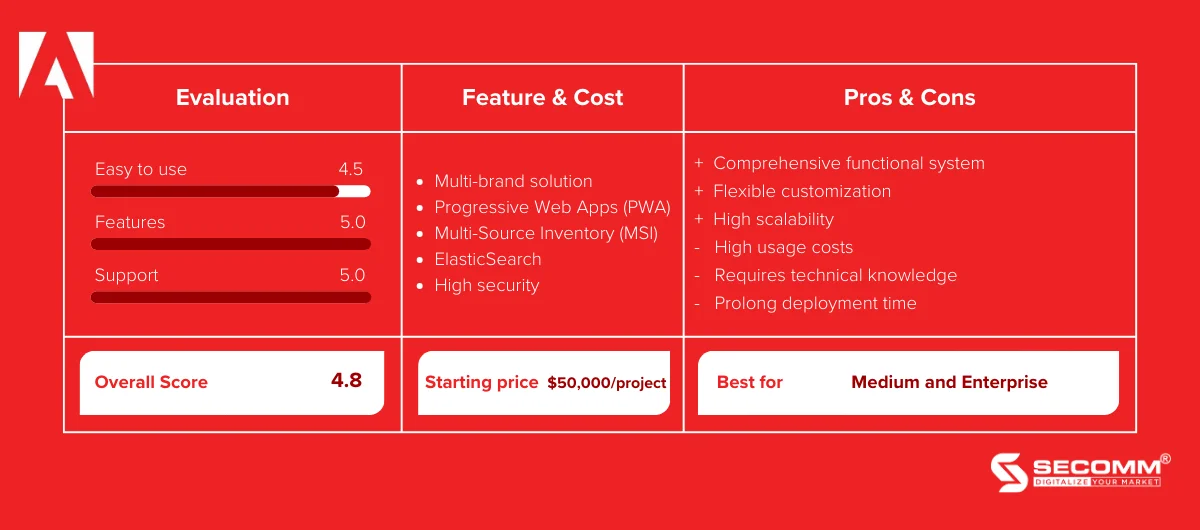
Read more:
- The Cost Of Building An Adobe Commerce (Magento) Website
- Adobe Commerce vs WooCommerce: Detailed Comparison In 2023
- Shopify Plus vs Adobe Commerce: Key Differences 2023
Above are the 5 popular platforms that B2C businesses prefer to use for building eCommerce websites, catering to online business goals for their brands.
However, choosing the most suitable platform for each business will depend on various factors such as business strategy, budget, deployment time, and the long-term direction set by business managers.
Looking for a suitable eCommerce Website Development Solution?
With deep expertise and the development of complex eCommerce systems for clients such as Changi Airport Group (Singapore), Trentham Estate (Australia), and The Warehouse (Vietnam), SECOMM understands the challenges in choosing a platform and deploying eCommerce that businesses are facing.
- Comprehensive Understanding: Providing comprehensive eCommerce solutions from consulting, development, and operation to the growth of eCommerce systems.
- Deep Expertise: Over 9 years of experience in deploying complex eCommerce systems for clients from various countries.
- Customized Solutions: Proposing eCommerce solutions, including technological architecture and a suitable team for each business.
- Flexible Progress: Project timelines and schedules are adjusted according to the specific needs of the business.
Contact SECOMM now or call directly at the hotline number (028 7108 9908) for free advice on the eCommerce website building roadmap!
 2
2

 6,748
6,748

 0
0

 1
1

WHAT OPPORTUNITIES ARE OPEN TO THE JEWELRY ECOMMERCE?
The jewelry eCommerce sector is a promising market experiencing swift growth. According to statistics, the global eCommerce jewelry market is currently valued at about 57.4 billion USD and is anticipated to reach approximately 117 billion USD by 2027.
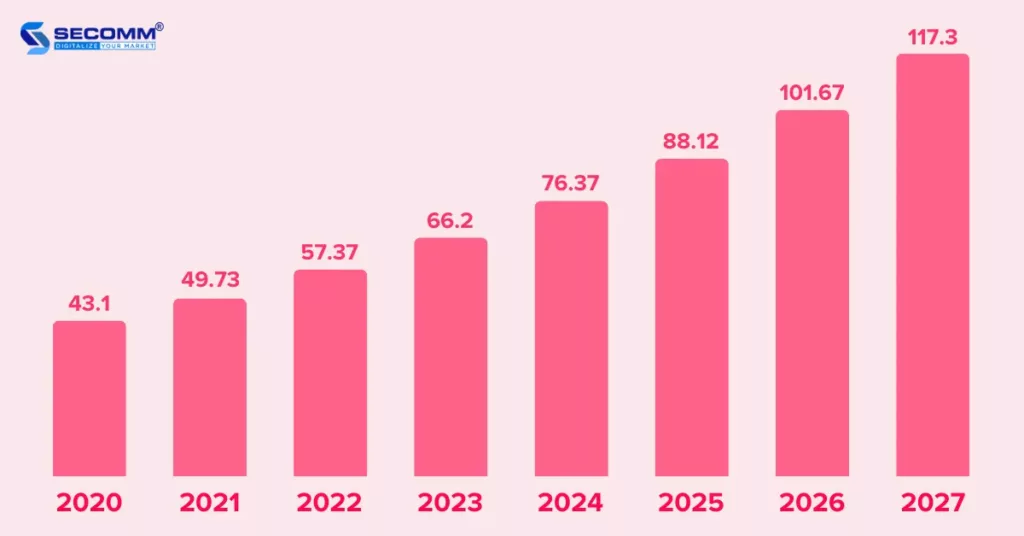
What is Jewelry eCommerce?
Jewelry eCommerce involves selling various jewelry items, including necklaces, rings, earrings, bracelets, gold, silver, diamonds, pearls, gemstones, and other pieces, conducted through online channels.
This type of eCommerce involves the purchase and sale of jewelry products through websites, applications, or online marketplaces.
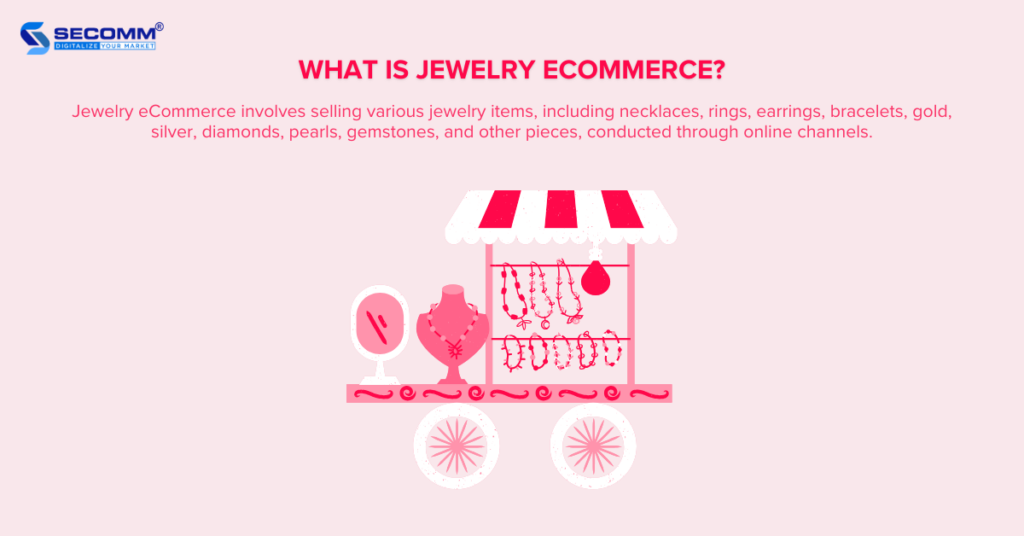
Opportunities for the jewelry eCommerce
Jewelry eCommerce is increasingly thriving, especially in the context of the COVID-19 pandemic. According to a report from the Vietnam eCommerce Association (VECOM), the Vietnamese jewelry eCommerce market is estimated to reach 10 trillion VND in 2022, showing a growth of 25% compared to 2021.
Several factors are driving the potential of jewelry eCommerce, including:
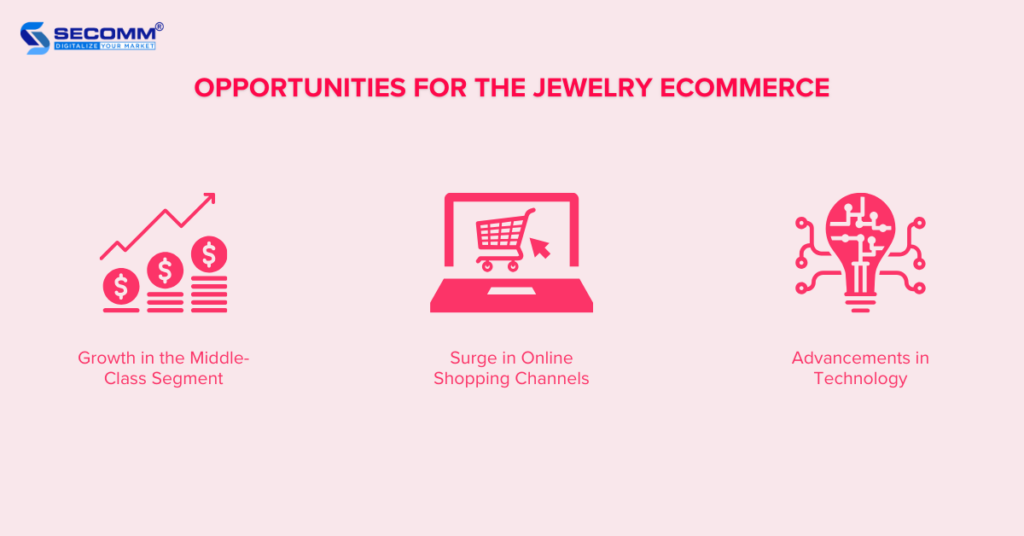
Growth in the Middle-Class Segment
According to the World Bank report, the middle class in Vietnam is steadily increasing, from 13% of the population in 2016 to 26% in 2026. It is expected that the middle class in Vietnam will continue to grow in the coming years.
On a global scale, according to the McKinsey Global Institute report, the global middle class is projected to increase from 1.8 billion people in 2020 to 4.9 billion people in 2030. This growth will generate significant demand for premium products and services, including jewelry and gemstones.
Surge in Online Shopping Channels
According to Metric report, as of June 2023, Vietnam has over 100,000 eCommerce websites, a 20% increase compared to 2022. The most popular product categories on Vietnam’s online marketplaces include fashion, home appliances, electronics, and jewelry.
On the international market, according to Statista’s report, as of June 2023, there are over 280 million active eCommerce websites worldwide.
The growth of online shopping channels, specifically individual eCommerce websites, has created many opportunities for jewelry eCommerce businesses to reach a larger audience, including customers in distant regions away from the main stores.
Advancements in Technology
The advancement of technology is one of the crucial factors driving the potential of jewelry eCommerce. When integrating innovative technologies like VR/AR, and AI into your jewelry website will enrich the online shopping experience, making it more engaging and appealing to customers.
- Using VR/AR: To create a shopping experience similar to traditional stores, making it easy for customers to choose and shop for jewelry online.
- Using AI: To develop algorithms to recommend jewelry products tailored to customer’s preferences and needs.
- Using chatbot: For enhancing 24/7 customer service, helping staff address customers’ inquiries or issues effectively.
Challenges of Jewelry eCommerce
Alongside the opportunities, jewelry brands still have to confront the challenges of the market
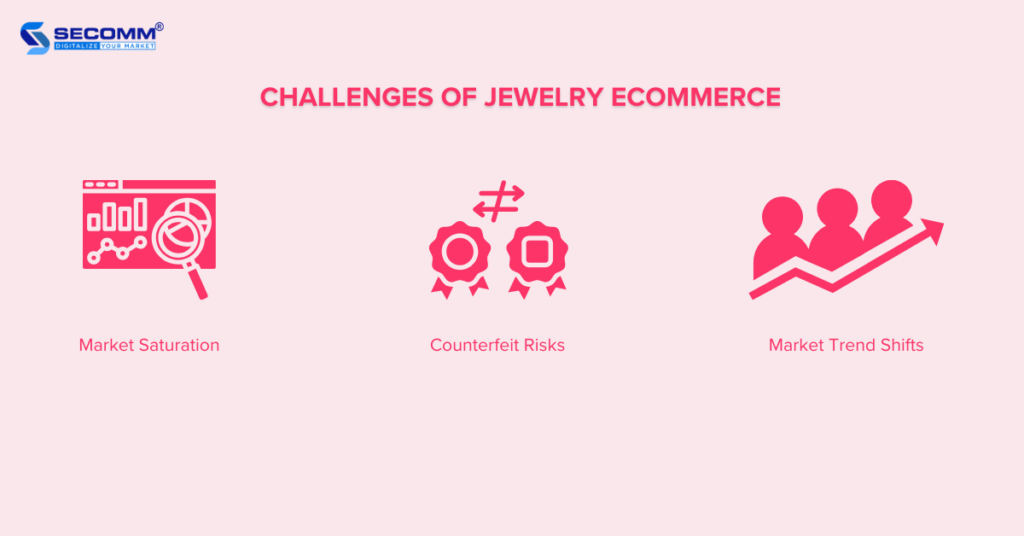
Market Saturation
The jewelry industry faces intense competition, with numerous businesses, both large and small, vying for market share. This requires jewelry brands to exert efforts to compete in terms of pricing, product quality, and the services they provide on their eCommerce website.
Counterfeit Risks
Counterfeit goods are often made from low-quality materials and are significantly cheaper than genuine products. This poses a significant challenge for the online jewelry market, as consumers struggle to differentiate between authentic and fake items, leading to adverse effects on jewelry brands.
Market Trend Shifts
Market trends are always changing, particularly in the jewelry eCommerce industry. It requires you to stay constantly updated to cater to evolving customer demands.
When purchasing jewelry products, customers desire an online shopping experience similar to in-store shopping. Because they want to view products directly, read reviews from other customers, and receive guidance from sales staff.
Jewelry brands deploying successful eCommerce
Tiffany & Co. (USA)
Tiffany & Co. is a premium jewelry brand headquartered in New York, USA, established in 1837 by master jeweler Charles Lewis Tiffany. The company embraced eCommerce early on and has become one of the largest online jewelry retailers globally.

Tiffany & Co.’s eCommerce website is built on the Adobe Enterprise Cloud platform, enabling the business to provide flexibility and scalability to meet customization needs and long-term development goals.
Leveraging resources from the leading Adobe Commerce eCommerce platform, the business has utilized Adobe Experience Platform Launch, Adobe Target, Adobe Experience Platform Identity Service, and more to deliver customized and personalized services for its customers.
Pandora (Denmark)
Pandora is a retail jewelry brand established in 1982 by Per Enevoldsen in Copenhagen, Denmark. The brand is known for customizable bracelets and other specially designed jewelry lines.

Pandora’s eCommerce website for the US and UK markets is built on the Salesforce Commerce Cloud platform, while the Vietnamese market utilizes Haravan. Therefore, the US and UK versions will have more specialized features such as wishlists, quick view, product comparison, loyalty programs, etc.
PNJ (Vietnam)
PNJ, or Phu Nhuan Jewelry, is a reputable jewelry brand with a long history and a widespread network of stores across Vietnam. Founded in 1988 in Phu Nhuan District, Ho Chi Minh City, Vietnam.

Initially, PNJ’s eCommerce website was built on the CS-Cart platform. As it grew, PNJ re-platform to WooCommerce to design its eCommerce website. This move benefits the PNJ website with many amazing features, including diverse payment method integration, product size customization, store location search based on province/city and district, and the flexibility of choosing between home delivery and in-store pickup.
The Bottom Line
In general, jewelry brands face numerous challenges and opportunities to make strides in the eCommerce landscape. Achieving success in this industry requires innovation, responsiveness to customer demands, and staying abreast of the latest technological trends.
Learn more: 10 Jewelry eCommerce Websites in Vietnam & Worldwide
Understanding both the opportunities and challenges when deploying jewelry eCommerce websites, SECOMM has a team of experts and a wide range of solutions to help you make it a reality.
Contact us or call the hotline at 028 7108 9908 to get started!
 2
2

 7,372
7,372

 0
0

 1
1
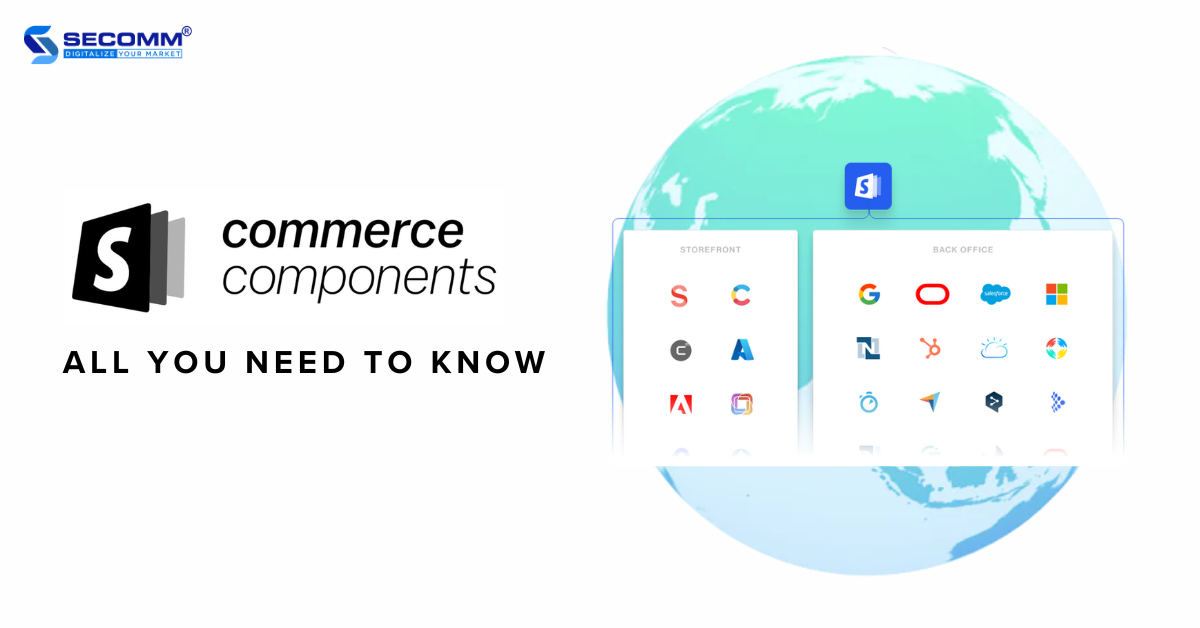
SHOPIFY COMMERCE COMPONENTS: ALL YOU NEED TO KNOW IN 2024
Today, with the growing demand for flexible and scalable eCommerce system development, large-sized businesses turn their attention to solutions like Headless, Microservices, and Composable Commerce. The Composable approach will allow you to integrate independent components to tailor and enhance the eCommerce experience.
Knowing this insight, Shopify has unveiled the Commerce Components solution, offering you — as a large-sized business — the most straightforward approach to deploying Composable Commerce.
Learn more: What is Composable Commerce?
What are Commerce Components?
Commerce Components is an innovative tech stack designed for large businesses. Rather than introducing new features, the company has transformed its infrastructure into modular components that can be combined to build and customize adaptable eCommerce websites. This means you can select components based on your deployment needs and seamlessly integrate them into your existing tech stack using flexible and unlimited API connections, ensuring a smooth customer experience across all devices.
“We’ve always approached innovation by anticipating what retailers need and then providing those solutions,” said Harley Finkelstein, president of Shopify. “Commerce Components opens our infrastructure so enterprise retailers don’t have to waste time, engineering power and money building critical foundations it has already perfected, and instead frees them up to customize, differentiate and scale”
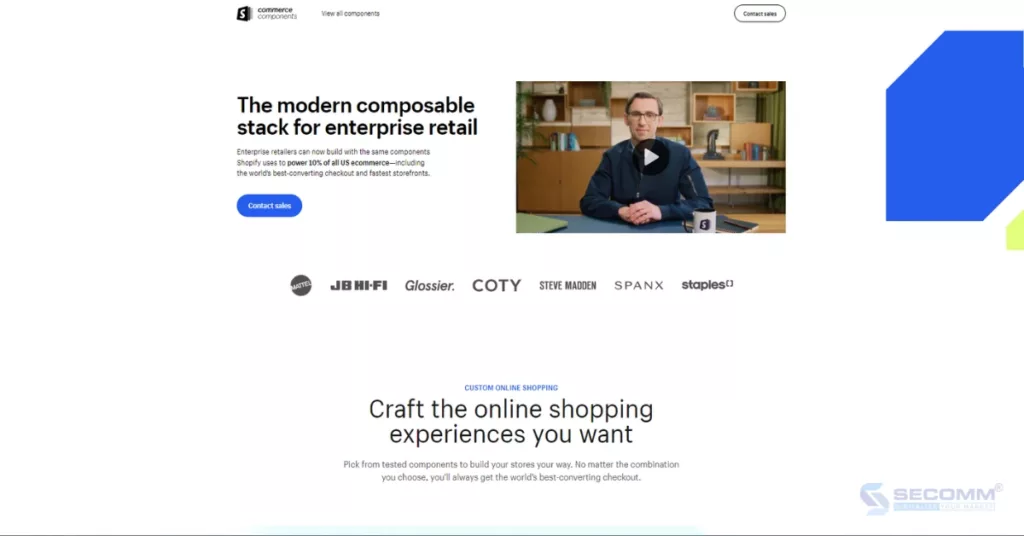
Commerce Components by Category
The solution offers six main categories including over 30 components, allowing you to build a tailored solution that aligns with your needs.
- Storefront: Build custom storefronts using any framework, API, and hosting.
- Cart & Checkout: Optimize the shopping cart and checkout process using APIs and additional utilities.
- Core Commerce: Create products with various data models through APIs.
- Data & Compliance: Provide solutions for leveraging customer insights to boost sales while managing and securing customer privacy data.
- Shipping & Logistics: Offer OMS and IMS solutions to streamline logistics processes.
- Omnichannel: Manage and sell across multiple channels, from POS and eCommerce platforms to social media and chat applications.
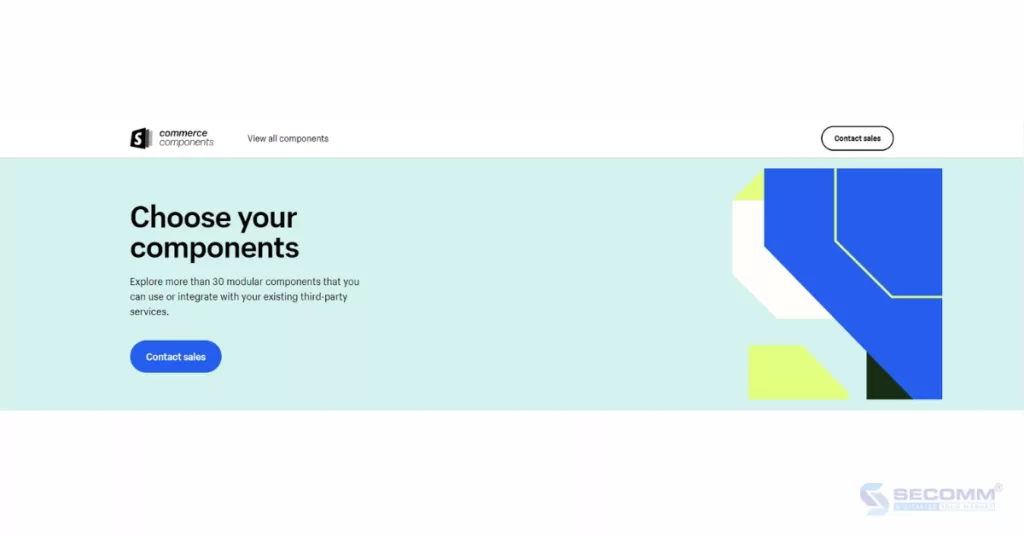
What is the difference between Commerce Components and Shopify Plus?
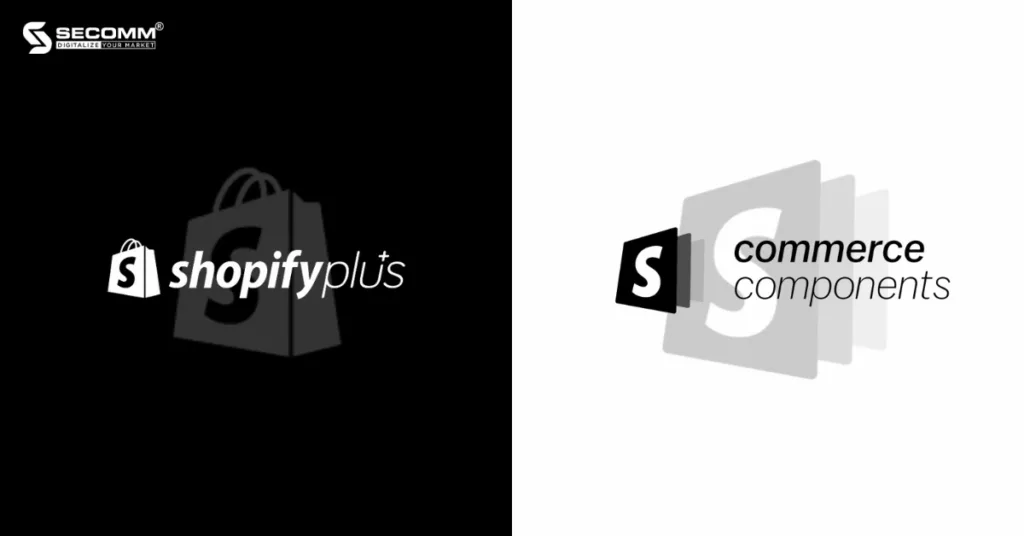
Although both ‘Plus’ and Components are enterprise eCommerce solutions, they differ in several aspects:
- Operations: ‘Plus’ is an all-in-one eCommerce platform, providing numerous advanced features and seamless integrations with third parties. On the other hand, the new tech stack is a collection of components for you to integrate into your existing technology stack, aiming to create and deliver a customized and seamless experience for customers.
- License fee: While ‘Plus’ charges a platform fee starting at $2000 per month, along with transaction and credit card fees, Components charges based on the level of usage of the components, with fees decreasing as more components are utilized.
- Features: ‘Plus’ offers many features and regularly provides updates and feature enhancements, with the latest being Shopify Edition ’23. In contrast, Components, as a new tech stack, provides unlimited API connections, increased product attribute limits, integration with new third-party technology solutions, and enhanced transaction processing capability of up to 40,000 payments per minute per store.
- Customer support: ‘Plus’ businesses can seek guidance and support during deployment through the Merchant Success Program. Components, on the other hand, provides businesses with access to Shopify Professional Services.
Benefits of using Commerce Components
- Flexible Modular Architecture
If you don’t prefer to deploy pre-packaged eCommerce platforms. Composable architecture is the ideal choice. It allows you to select and purchase components based on your needs, integrate them into your existing systems, and customize them.
With its modular architecture, the tech stack provides unlimited API connections, meaning there is no limit to the number of components and add-ons that you can use to build your tech stack.
Moreover, since components are entirely independent, you can add, remove, and modify components without affecting the entire system.
- Cost Optimization
Commerce Components employs a pricing model structured around the level and quantity of components used. This means you only pay for the components you require. Furthermore, as you acquire and utilize more components, you’ll benefit from increasingly significant discounts.
Additionally, the annual payment structure of Components helps you facilitate precise cost predictions.
Brands using Commerce Components
Since its inception, the platform has proudly highlighted the trust and adoption of its solution by major global businesses. Notable among these are Glossier, JB Hi-Fi, Coty, Steve Madden, Spanx, and Staples.

Leading U.S. toy brand Mattel is one of the first enterprises to successfully implement this technology solution. Sven Gerjets, Mattel’s CTO, said in a statement.
“We first worked with Shopify on a project called Mattel Creations, a platform for creators to reimagine the most iconic toys in the world. Creations empowered Mattel to move quickly, meet our customers where they are, and most importantly leverage its infrastructure to scale globally. It was hugely successful, and we’re excited to transform our brand offerings using Commerce Components.”
The trust placed by Mattel and other industry leaders forms a solid basis for expecting the ongoing success of this new solution, extending its impact not only within the U.S. market but also on a global scale.
Final Thoughts
In the past, large businesses often favored open-source platforms like Magento or Salesforce due to their customizable and flexible expansion capabilities. However, in today’s landscape, SaaS platforms, particularly Shopify, offer innovative solutions for developing Composable or Headless Commerce.
In 2021, the company launched the Hydrogen + Oxygen solution to enhance Headless Commerce development. Continuing this trend into early 2023, they once again surprise the industry with Commerce Components, designed for deploying Composable Commerce.
This move highlights its commitment to anticipating and responding to customer needs, earning the trust of large enterprises in the face of competitive rivals.
Reach out or call the SECOMM hotline at 028 7108 9908 for a more in-depth understanding of Commerce Components by Shopify and to explore the implementation of Headless Commerce or Composable Commerce.
 2
2

 8,765
8,765

 0
0

 1
1
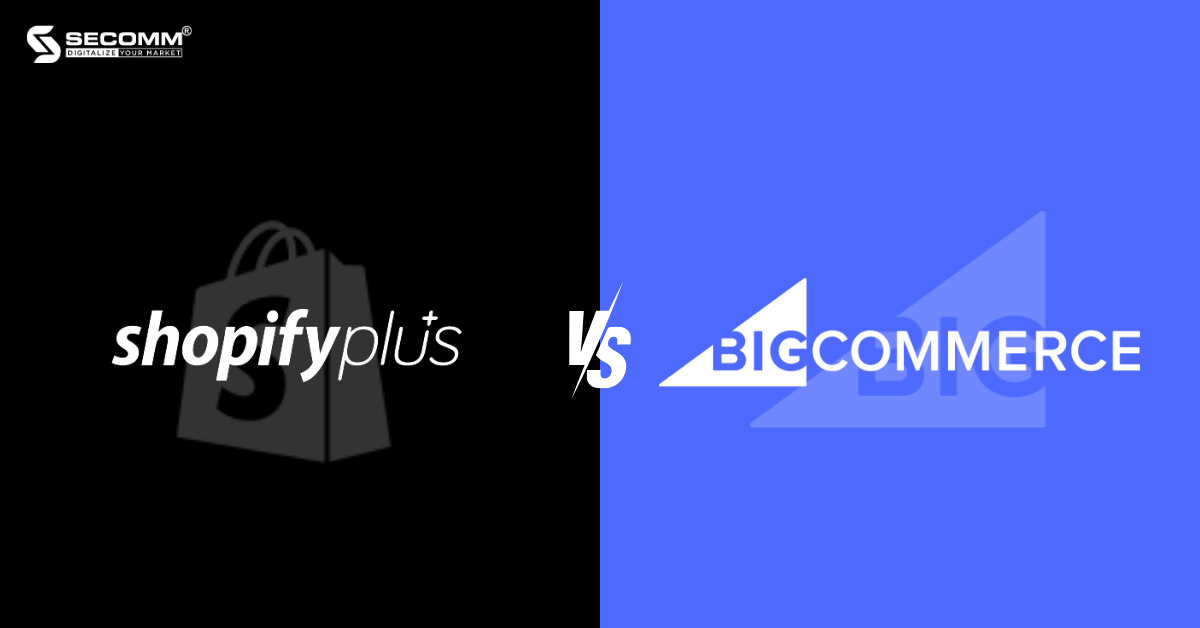
SHOPIFY PLUS VS BIGCOMMERCE ENTERPRISE: FULL COMPARISON 2024
In today’s eCommerce landscape, it isn’t just open-source platforms that can meet the complex development and customization needs of large-scale enterprises, but SaaS platforms are also steadily rising with significant improvements. Among them, two SaaS platforms designed specifically for large enterprises are Shopify Plus and BigCommerce Enterprise.
However, these two platforms have many key differences. This article aims to clarify the pros and cons of each platform and compare the differences between the two platforms to help you — as a business leader — make well-informed decisions.
Learn more: Shopify vs BigCommerce: Which platform is right for you?
Shopify Plus vs BigCommerce Enterprise: Pros and Cons
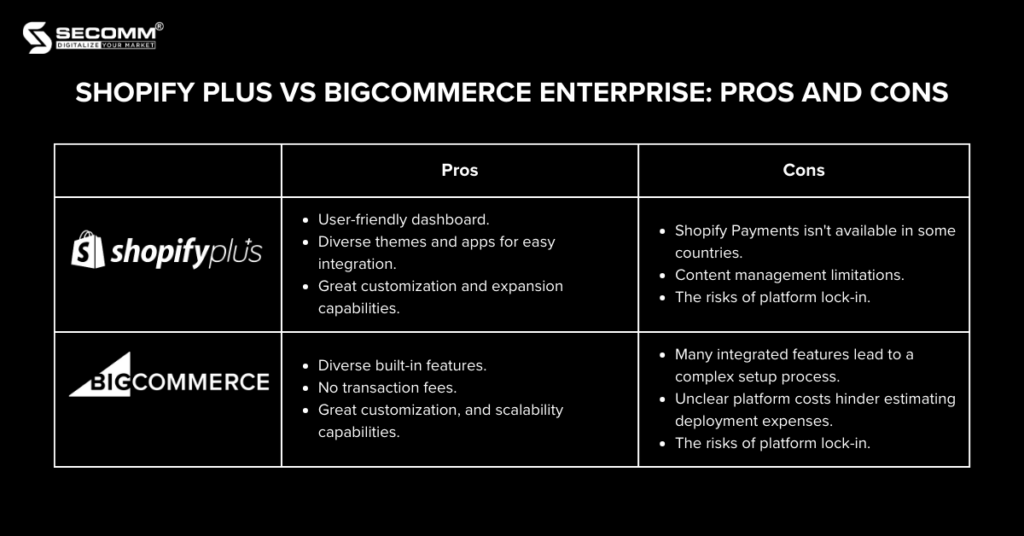
Shopify Plus vs BigCommerce Enterprise: Quick Comparison
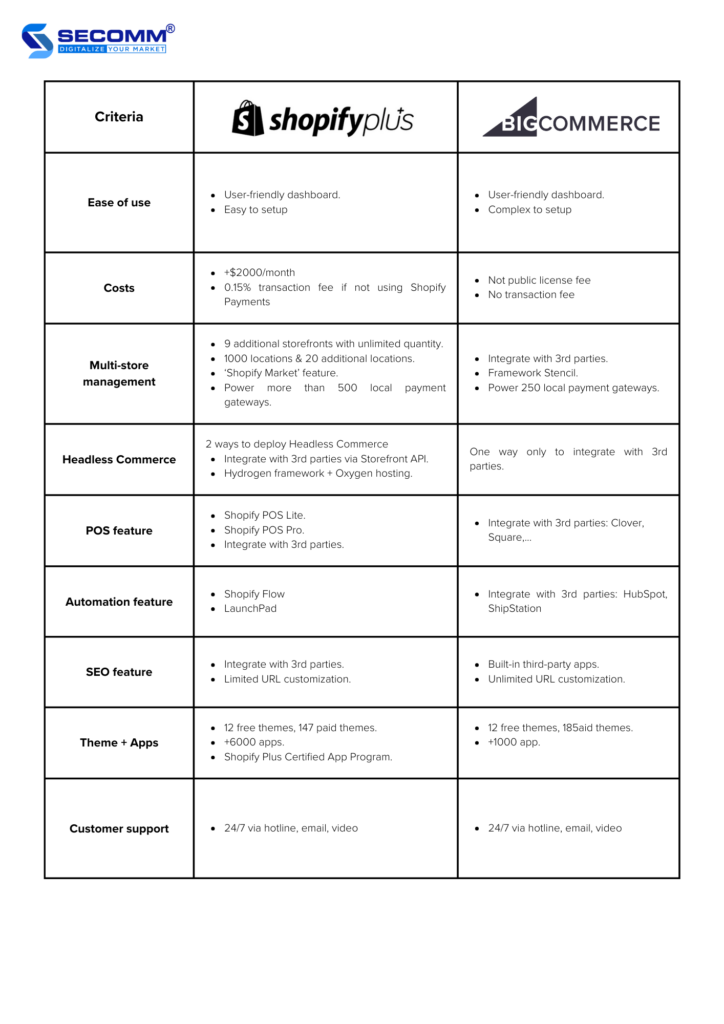
Shopify Plus vs BigCommerce Enterprise: Detailed Comparison
Ease of Use
Both platforms are recognized for their user-friendliness compared to open-source platforms. Their intuitive dashboard and user-friendly navigation, along with features like drag-and-drop editing, extensive documentation, and 24/7 support, make them accessible for users of varying technical expertise.
However, Shopify, known for its inherent user-friendly design, ensures that users, whether using the Plus version or the regular ones, can easily explore and set up their eCommerce website with efficiency.
Both these two premium solution platforms — which are Shopify Plus and BigCommerce Enterprise — cater to the deployment needs of large enterprises, these platforms offer advanced features and technologies that require some learning.
For example, the ‘Plus’ users need to grasp the Liquid template language, while those opting for the ‘Enterprise’ may benefit from understanding the Google Cloud Platform for optimizing website performance.
BigCommerce, renowned for its built-in features, continues this trend with the ‘Enterprise’ version. Some features may suit specific businesses but might be unnecessary for others. While BigCommerce allows flexibility for customizing and configuring these advanced features, it can introduce complexity and intricacy into the setup process.
Pricing
Similarly to other premium solutions on SaaS platforms, the license fee will depend on the deployment requirements and the current scale of the business. BigCommerce doesn’t disclose the fee publicly, requiring businesses to directly contact the platform for tailored consultation and pricing.
On the other hand, Shopify Plus has a license fee starting at $2000 per month. Once you reach a monthly revenue threshold of $800,000, the platform fee becomes revenue-based, amounting to 0.25% of monthly revenue, capped at $40,000 per month or $480,000 per year.
Considering transaction fees is also important. While BigCommerce doesn’t charge transaction fees, Shopify Plus charges a 0.15% transaction fee for not using Shopify Payments.
To estimate deployment costs effectively, you should partner with development agencies and engage in detailed consultations with BigCommerce or Shopify for comprehensive guidance.
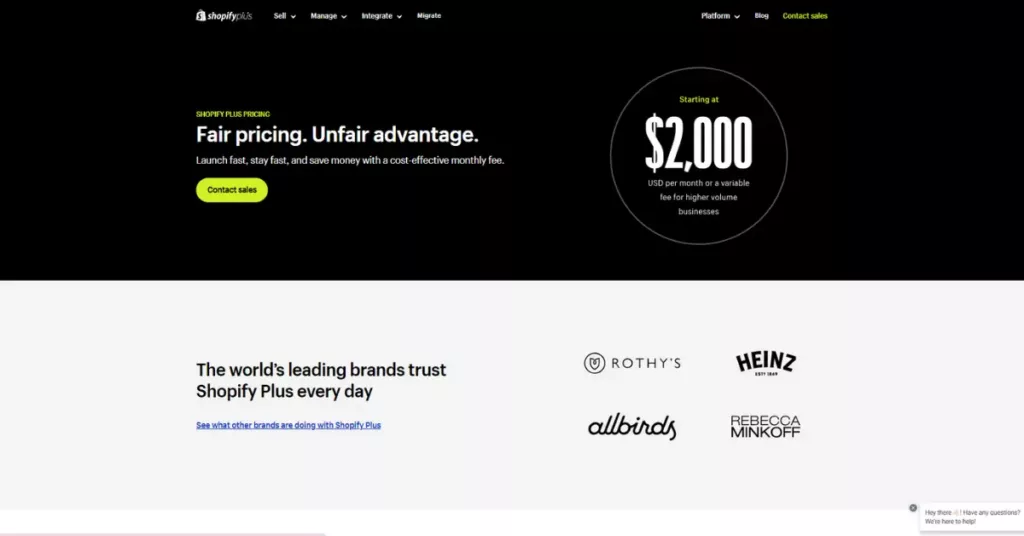
Features
- Multi-store management
For large enterprises, the multi-store management feature is crucial and a primary consideration when selecting an eCommerce platform to sell globally. To engage in sales across various markets worldwide, your eCommerce website needs to be crafted to suit the preferences of each target audience in different markets.
This involves addressing issues related to language conversion, currency units, and payment methods with flexibility. Moreover, stores should be administered efficiently in a centralized manner rather than separately.
Shopify Plus allows you to create up to 9 additional storefronts alongside the main storefront at 1000 different inventory locations and 20 additional inventory locations. All these storefronts can be centrally managed through a single dashboard.
Plus, the Shopify Market feature will help you select the markets you want to sell in. The system will then automatically convert and manage multiple languages, currency units, shipping options, and payment methods based on the user’s IP address. Currently, Shopify Plus supports a range of local payment gateways, and you can refer to the provided list.

BigCommerce Enterprise doesn’t provide many solutions or features for global selling. Instead, it allows you to deploy multiple stores within the platform and then integrate with 3rd-party PIM solutions to manage data across these stores.
Another option is to leverage the BigCommerce Stencil framework to tailor content language for each local market. Also, the Enterprise version supports multi-currency payments through more than 250 local payment gateways.
- Headless Commerce
The demand for adopting Headless eCommerce is on the rise, especially among large enterprises seeking to deliver a seamless and optimized experience for their customers. Both Shopify Plus and BigCommerce Enterprise offer effective solutions for going Headless.
BigCommerce Enterprise allows you to integrate with various frameworks (Next.js, Gatsby.js, Nuxt.js), APIs (REST, GraphQL), and your preferred or previously used tools.
When using Shopify Plus, there are three approaches. You can use the Storefront API to connect and develop with your preferred frameworks, hosting solutions, and tools. Or, you can leverage Shopify Hydrogen framework and Oxygen hosting to facilitate a headless eCommerce website flexibly.
- POS (Point of Sale)
Just like their regular pricing plans, both the ‘Enterprise’ and the ‘Plus’ include Point of Sale (POS) features for eCommerce transactions, catering to both online and offline stores, as well as Omnichannel operations.
POS can be configured on various devices like mobile devices (tablets, smartphones), and other hardware like cash registers and barcode scanners.
BigCommerce Enterprise offers smooth integration with third-party POS systems like Square, Vend, Clover, and Heartland Retail. It’s good for those who already using POS software from these third-party providers.
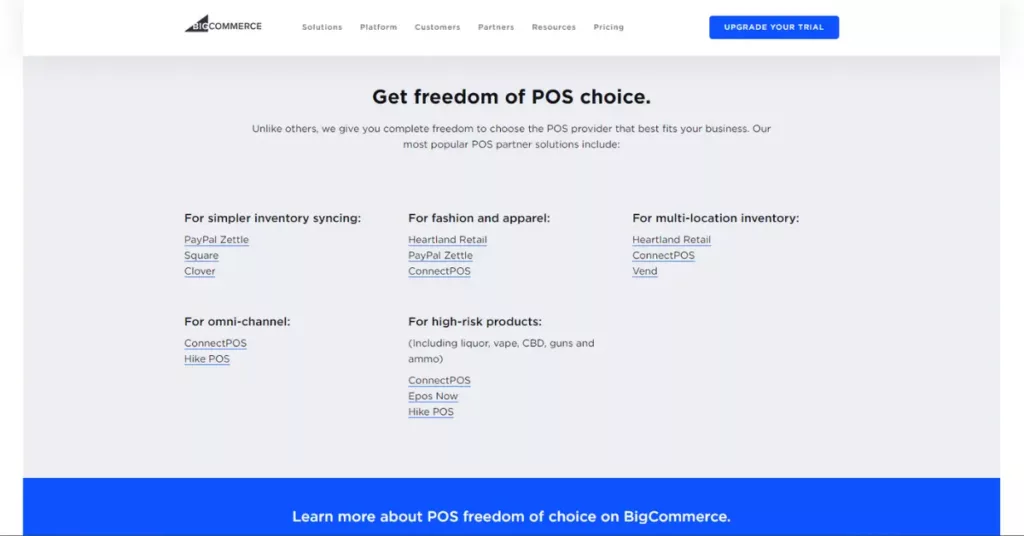
For Shopify Plus, beyond the option to integrate with third-party POS systems like BigCommerce Enterprise (Clover, Square, Zend), Shopify offers its own Shopify POS solution, available in two plans:
- ‘POS Lite’ plan, providing basic integration
- ‘POS Pro’ plan, priced at +$86/month for the first 20 locations for Shopify Plus businesses.
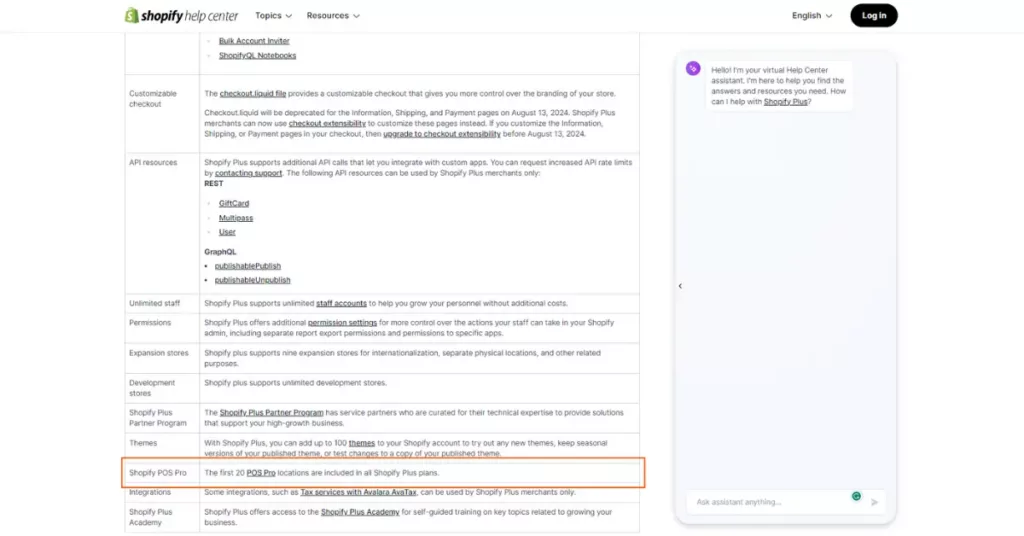
- Automation
Both ‘Plus’ and ‘Enterprise’ offer tools and solutions to help you automate your eCommerce website operations.
Shopify Plus offers an exclusive solution, Shopify Flow, and LaunchPad, allowing you to automate routine tasks and set up automated workflows for tasks like email marketing campaigns or new product launches.
On the other hand, BigCommerce Enterprise takes a different automation approach which enables you to smoothly integrate with 3rd-party apps. Some of them are HubSpot, Avalara, ShipStation, etc.
- SEO
SEO plays a crucial role in improving the search visibility of an eCommerce site and attracting potential customers. Both platforms offer features to enhance SEO efforts.
The ‘Plus’ stands out for its user-friendly interface and an integrated app ecosystem that can enhance SEO, incorporating tools such as Google Search Console and Analytics. However, it comes with limitations in URL control and customization.
The ‘Enterprise’, on the other hand, provides more versatile SEO capabilities, including complete control over URLs and integration with applications like Google Search Console and Analytics. It makes the process more intricate compared to Shopify Plus, involving additional setup operations.
Themes & Add-ons
- Themes
Shopify Plus offers businesses approximately 12 free themes and 147 paid themes, with prices ranging from $150 to $380 per theme. On the other hand, BigCommerce Enterprise provides around 12 free themes and 185 paid themes, with prices ranging from $150 to $400 per theme.
Both platforms offer a wide range of visually appealing and mobile-friendly theme options. While the ‘Enterprise’ themes are characterized by elegant, tidy, and modern designs with highly customizable features, the ‘Plus’ themes can meet higher requirements for user experience, making navigation easier.
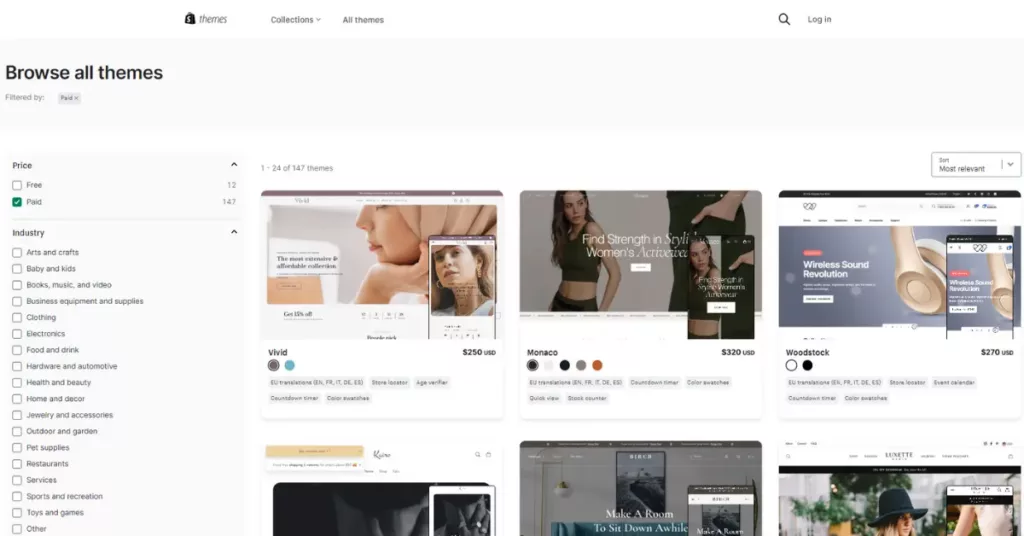
- Add-ons
To facilitate efficient eCommerce deployment, the two provide vast app stores and extensions, tailored for ‘Plus’ and ‘Enterprise’ businesses. While both platforms offer free versions, access to comprehensive features requires a modest monthly fee.
Shopify Plus boasts over 6,000 apps and extensions, while BigCommerce Enterprise has around 1,000. This can be explained by Shopify’s widespread popularity among businesses and developers globally, providing them with ample documentation and resources for app and extension development, including the Shopify Plus Certified App Program.
Customer Support
For businesses that are ready to deploy the ‘Plus’ or the ‘Enterprise’ solutions, the demand for technical support and efficient eCommerce website operations is significant.
Both platforms receive high praise for their customer service. They offer 24/7 support via hotline, email, and video available in multiple languages. However, if you need specialized and complex technical support, Shopify Plus may be the preferable choice.
Final Thoughts
In the competitive business landscape, selecting the right platform for launching an eCommerce website is an important decision. Both Shopify Plus and BigCommerce Enterprise offer distinct advantages and cater to various business models.
Regardless of the platform chosen, you should prioritize the development and delivery of an exceptional shopping experience for your customers. eCommerce platforms serve as tools, and the ultimate key to success lies in an effective deployment strategy and great collaboration with a proficient team.
With extensive experience helping numerous businesses deploy diverse eCommerce development projects on both Shopify Plus and BigCommerce Enterprise, SECOMM boasts a team of seasoned experts capable of collaborating to create exceptional eCommerce experiences and help you enhance your brand positioning.
Reach out or directly call the hotline at 028 7108 9908 to explore how SECOMM can contribute to optimizing the potential of Shopify Plus and BigCommerce Enterprise for enduring your business success.
 2
2

 4,957
4,957

 0
0

 1
1
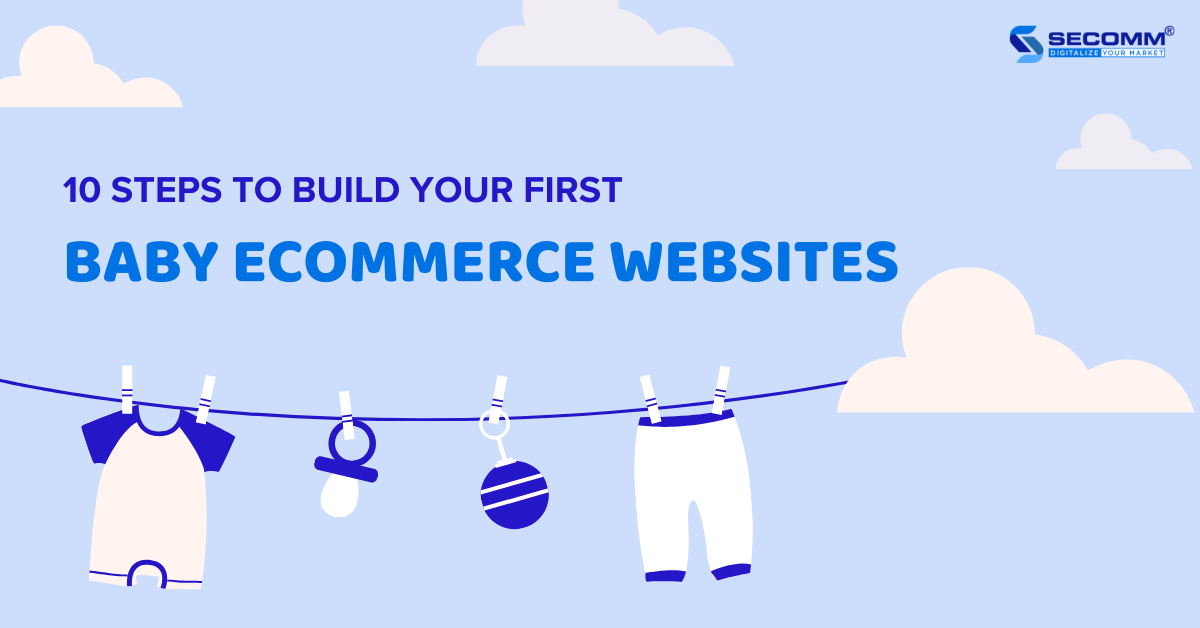
10 STEPS TO BUILD YOUR FIRST ECOMMERCE WEBSITES
Baby eCommerce is a promising market experiencing a steady annual growth rate (CAGR 2023-2027) of 9.86%, projected to reach a market value of approximately USD 129.40 billion by 2027.
To tap into this market, you’ll need to develop a professional and efficient eCommerce website. Here are 10 steps to create an eCommerce website tailored for maternity and baby products.
Identify objectives
The first step is to identify your business goals and prioritize them, forming a plan tailored to develop an effective Baby eCommerce website.
Concerning long-term goals, you may focus on objectives like establishing a strong brand presence, reaching potential customers, and enhancing the efficiency of both online and offline operations.
For short-term goals, businesses can give priority to activities like monitoring, analyzing customer behavior, assessing the effectiveness of marketing campaigns, and boosting revenue.
When it comes to timeline, you can decide to deploy quickly to enter the market or proceed gradually to test and adapt to this eCommerce world.
As for the budget, it depends on your business strategy and financial capacity for this Baby eCommerce development project.
Select eCommerce platform
Currently, there are two types of eCommerce platforms to help you build your first Baby website: SaaS (Software as a Service) and Open-Source platform.
Some popular SaaS eCommerce platforms include Shopify, BigCommerce, Squarespace, and Wix.
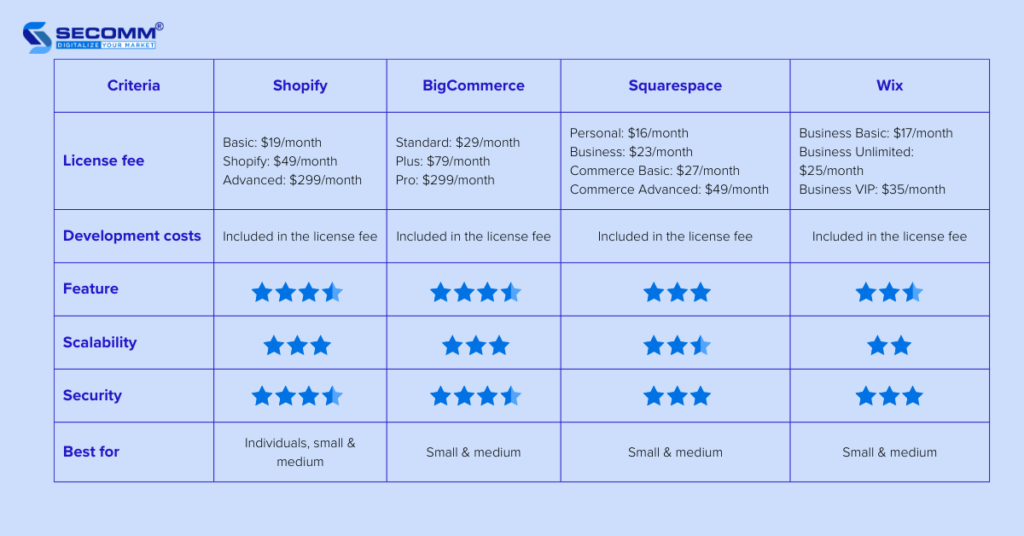
In addition, there are premium versions of these SaaS platforms such as Shopify Plus, BigCommerce Enterprise, and Goflow.
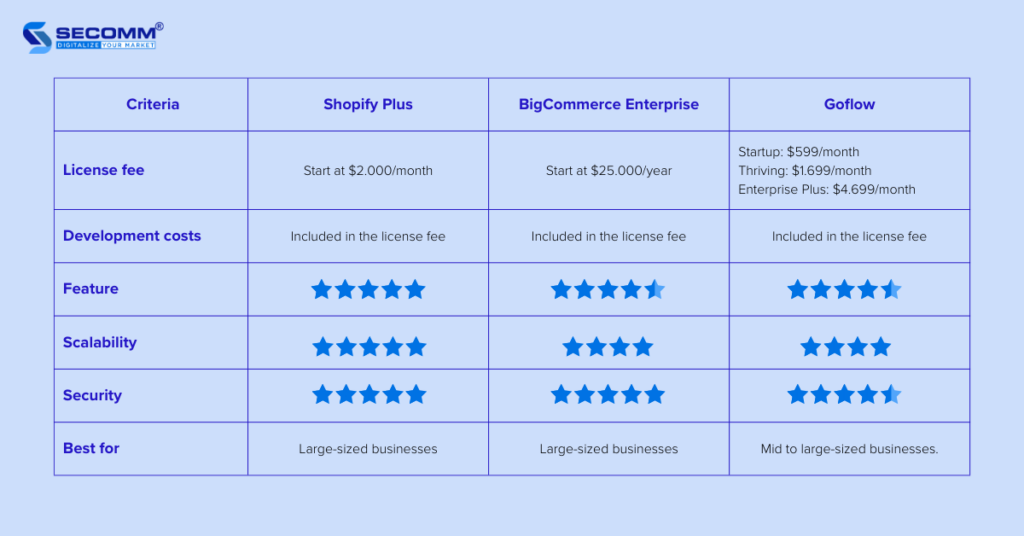
Some open-source platforms are widely used: Adobe Commerce (Magento), WooCommerce, OpenCart, and PrestaShop.
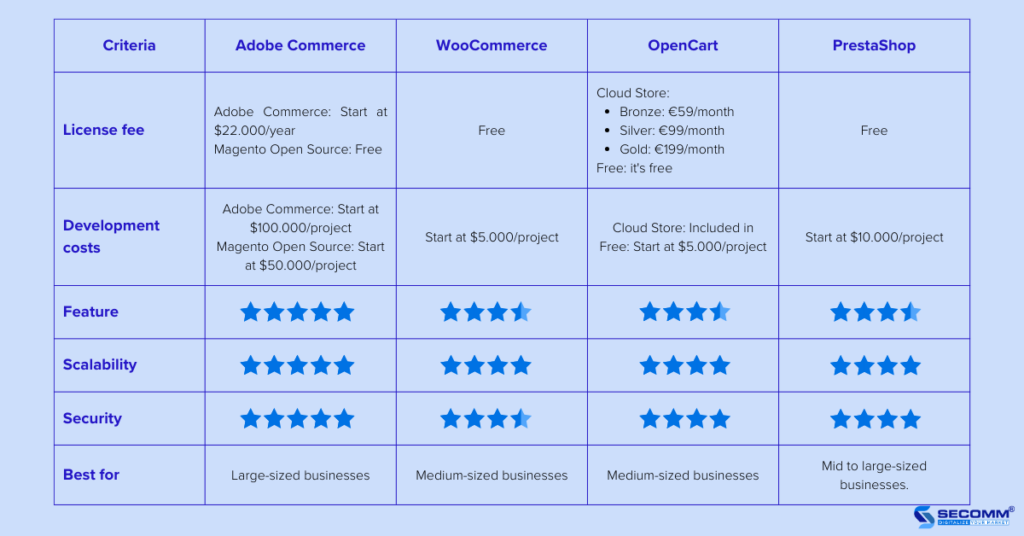
Typically, some new businesses choose basic SaaS platforms to save time and budget in the initial phase of the Baby eCommerce website development. After a while, they may switch to a premium SaaS or an open-source platform to develop their baby websites more advanced.
In another case, some businesses opt for open-source platforms to build a basic eCommerce website and then gradually upgrade the system over time to minimize the need for platform switching in later phases.
In-house team or development agency?
Typically, most eCommerce businesses decide to initially partner with a professional development agency and gradually build their in-house team.
For establishing an in-house team, you’ll need to recruit and train IT and eCommerce professionals for expertise on the chosen platform. It’ll take you significant time and budget but allow you to have full control over your resources. You can develop and adjust your Baby eCommerce website according to your needs and wants.
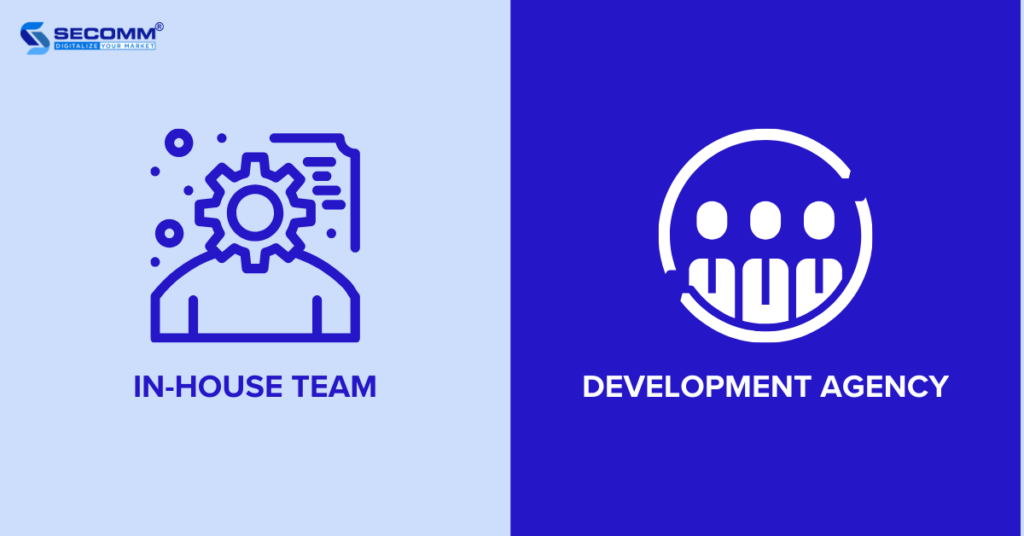
When it comes to partnering with an agency, here are some criteria you need to evaluate:
- eCommerce experience
- High-performing development team
- Clear processes
- Deadline meet
Partnering with a professional development agency gains you specialized eCommerce knowledge, enhances your technical skills, and above all, you’ll facilitate the eCommerce website exactly what you need, tailoring it to the unique features of the maternity and baby industry.
Design UI/UX
When it comes to UI/UX design, it’s important to showcase the brand image, products, user guide, etc. There are three popular ways to make your design:
- Using ready-made themes: Optimizing interface design costs may limit the brand positioning as ready-made themes can be similar to other websites.
- Customizing themes: Balancing cost savings and adding some brand identity elements such as color, font, layout, etc. However, you’ll need a specialized team to customize themes effectively.
- Designing unique themes: The design will tailored to your brand, but it’ll take your time and budget.
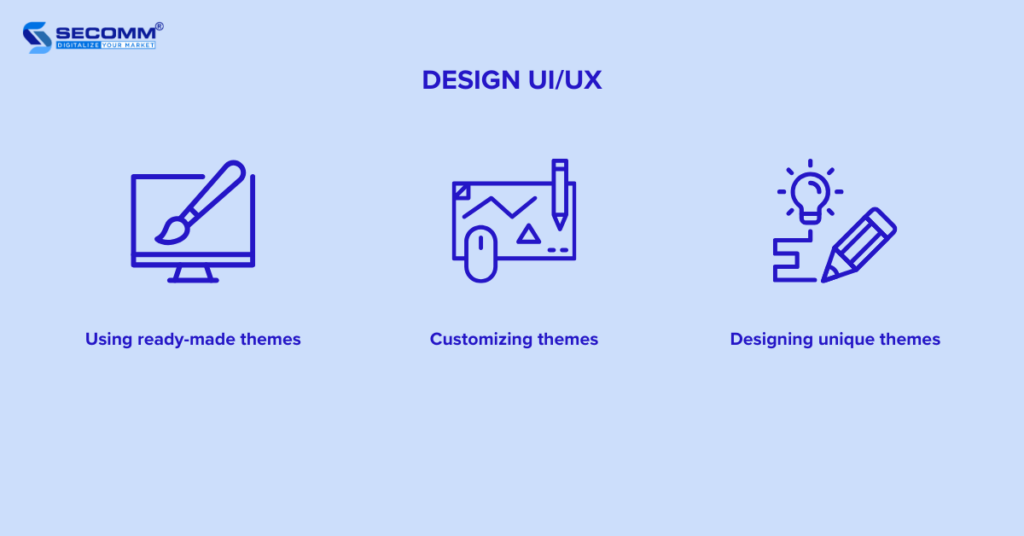
Develop core features
Some essential features that a Baby eCommerce website should have include
- Catalog Management: Control product data, features, categories, prices, inventory quantities, and images/videos for smooth operations and optimal business performance.
- Store Management: Handle product inventory, control the business activities, and manage personnel for each branch.
- Cart & Checkout: Manage the shopping cart and customer checkout information.
- Customer Management: Manage customer information to improve marketing effectiveness, shopping experience, and overall customer satisfaction.
- Marketing Management: Optimize SEO and implement marketing programs using supporting tools to boost sales for the business.
- Sales Management: Establish and operate sales processes, orders, payments, and shipping.
- Content Management: Develop and optimize all content-related aspects for CMS pages, image storage, theme customization, and website design.
- System Management: Administer user roles, and explore best practices in terms of security, maintenance, and system care for the website.
- Analysis & Reporting: Support track, and measure the performance of the eCommerce system and plan for future strategies.
Some advanced features for the baby eCommerce industry:
- Fast delivery: Provides quick delivery services within 2 hours in major cities.
- Personalized Gift Packaging: Gift packages can be designed based on the preferences and needs of each recipient, such as packages for newborns, packages for children, and packages for mothers.
- Buy Now Pay Later: Shop for essential products/services for children without having to pay the full amount immediately, supporting those who may not have the ability to pay a large sum at once.
- Loyalty Program: Allow customers to earn points for each purchase. These points can be used to redeem benefits such as discounts, gifts, or free services.
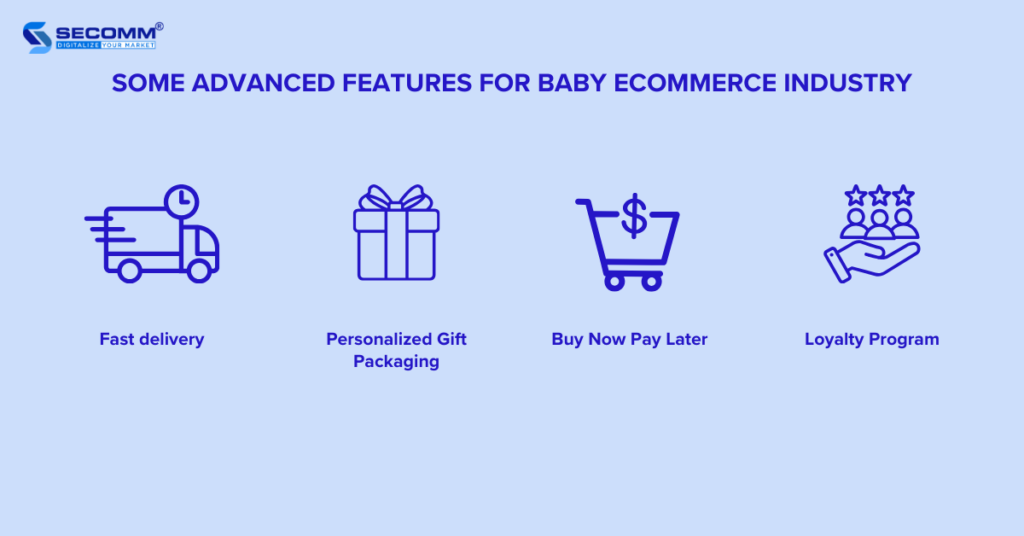
Fulfill Legal Procedures
After developing features and ensuring a successful testing and website launch, you’ll need to complete the legal procedures associated with eCommerce operations.
According to Decree 52/2013/ND-CP by the Government of Vietnam, any individual or organization owning an eCommerce website for sales is required to notify or register with the Ministry of Industry and Trade through the online public service portal of the Ministry of Industry and Trade.
Note: Websites that operate beyond the specified period or fail to register/notify the authorized management agency within the designated timeframe may be subject to administrative penalties as per regulations.
QC/Testing
When QC/testing your eCommerce website, you can leverage either the Waterfall or Agile model to test the entire system.
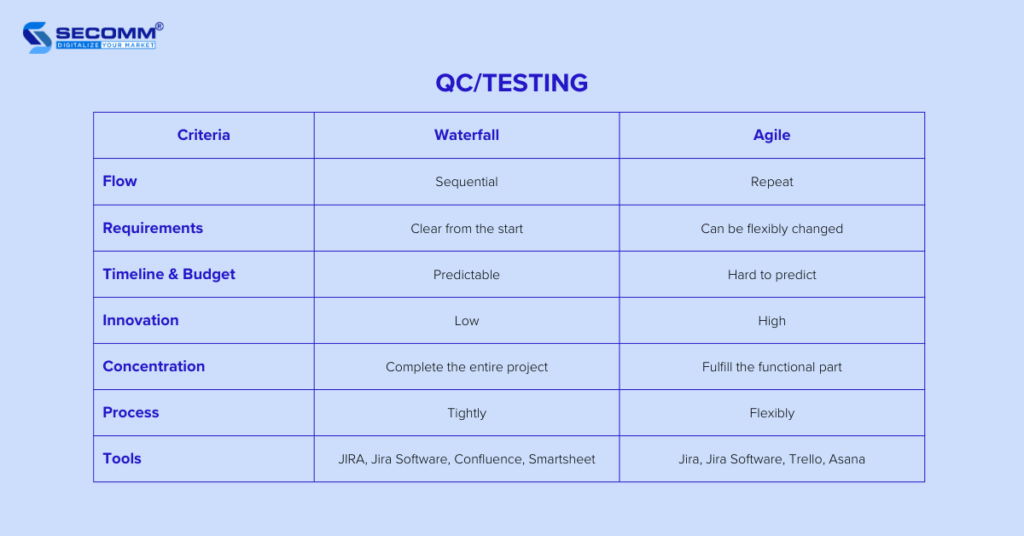
Using these models helps you review and test your entire eCommerce system, functions, and features within a specified timeframe, ensuring optimal order processing speed and overall website stability. In case of any issues, your in-house team or development partner will help you to address them before officially going live.
Go-live
When the QC/testing process is done, your baby eCommerce website is ready to launch. To ensure a smooth go-live process, here are three steps you should prepare:
- Define the go-live objectives: The aims could be system stability, data backup and recovery capabilities, and customer shopping experience.
- Perform testing and error resolution: Conduct comprehensive system testing to identify and rectify functional errors, security issues, and performance issues.
- Create backup plans: Despite conducting testing and resolving errors, unforeseen issues may still arise during the go-live process. To address these issues, backup plans are a must.
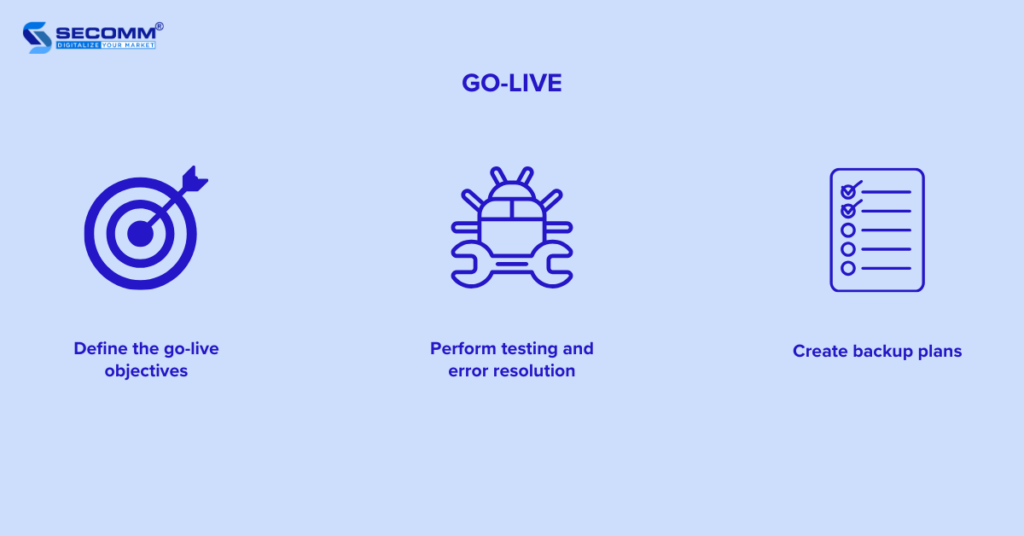
Operate the eCommerce system
Running a baby website is an ongoing effort aimed at ensuring the steady and effective functioning of the system. This involves various activities, including:
- Resource management: Managing the system’s resources, including hardware, software, data, and personnel.
- Process management: Managing all processes within the system, including development, deployment, operation, and maintenance processes.
- Error management: Identifying the causes of errors, quickly and effectively resolving issues, and implementing preventive measures to avoid recurrence.
- Modification management: Assessing the impact of changes on the system and executing modifications safely and efficiently.
Furthermore, you should regularly maintain, update, and upgrade the website system to achieve sustainable growth, adapting quickly to shifts in the eCommerce world or the maternity and baby products market.
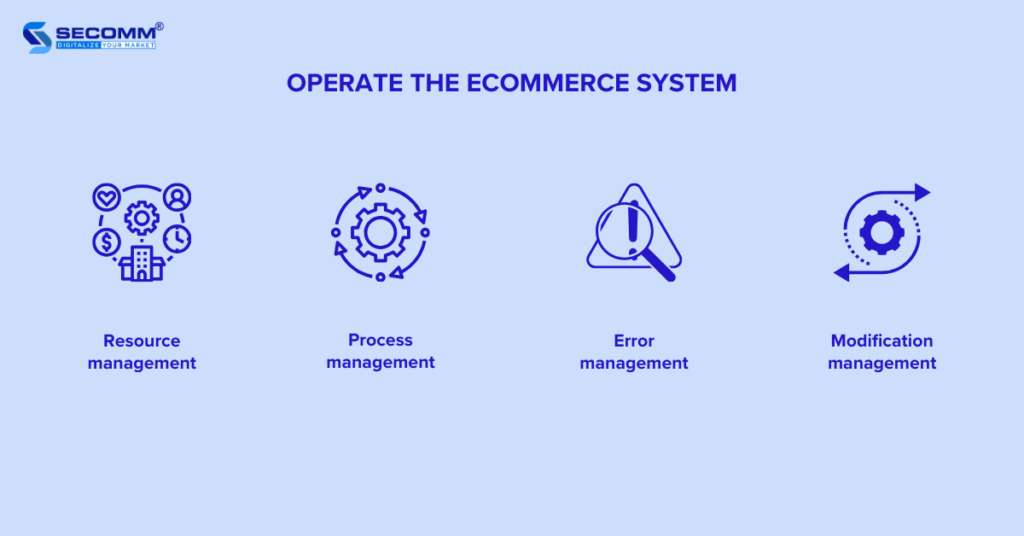
Boost eCommerce growth
After a period of operation, you should shift your focus toward eCommerce marketing strategies or Omnichannel to expand your online presence in the market of maternity and baby products
businesses should redirect their focus toward implementing eCommerce marketing strategies or embracing Omnichannel approaches to expand their online presence in the market of mother and baby products.
Implementing Omnichannel involves setting up a seamless sales, marketing, and management system across channels such as the website, social media platforms (Facebook, Instagram, Zalo, TikTok Shop), and online marketplaces (Shopee, Tiki, Lazada, Sendo) to optimize the customer experience and boost business efficiency.
Developing a comprehensive marketing strategy, centered around key eCommerce marketing channels like Content Marketing, SEO/SEM, Email Marketing, and Affiliate Marketing, becomes crucial for achieving rapid sales growth.
The Bottom Line
In general, the journey of building a baby eCommerce website for the Vietnamese market isn’t an easy task. It requires you to invest a significant amount of time and budget in researching the most fitting strategies tailored to each phase of your eCommerce development.
Understanding the difficulties and challenges that businesses may encounter when building a baby eCommerce website, SECOMM is ready to provide free consultation on detailed eCommerce solutions.
Reach out or call the SECOMM hotline at 028 7108 9908 to get started!
 2
2

 4,442
4,442

 0
0

 1
1
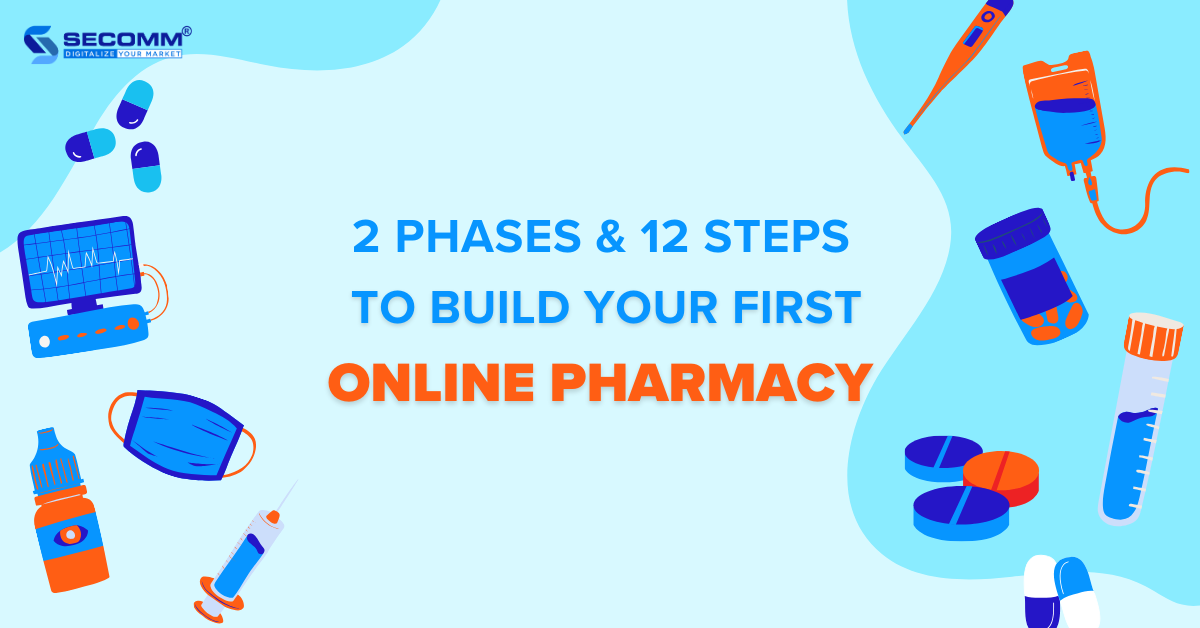
2 PHASES & 12 STEPS TO BUILD YOUR FIRST ONLINE PHARMACY
Since the advent of the COVID-19 pandemic, the pharmaceutical industry has proven the potential of transitioning from offline to online pharmacy. In the United States, the number of remote health consultations surged by 2,600% in March 2020 (during the peak of COVID-19 in the U.S.) compared to the same month in 2019. According to Statista, the global pharmaceutical eCommerce sector is projected to reach 32 billion USD by the end of 2023.
Several brands have successfully embraced eCommerce early on, achieving unexpected successes. Examples include Apollo Pharmacy (India), FPT Long Châu (Vietnam), CVS Health (USA), and Droga Raia (Brazil). The common thread among these brands lies in their comprehensive eCommerce platforms, catering to the shopping needs of customers for healthcare, pharmaceutical, and medical products.
With nearly 10 years of experience in the eCommerce sector, SECOMM has outlined the journey of building pharmaceutical eCommerce websites for the Vietnamese market.
Phase 1: Building a basic online pharmacy
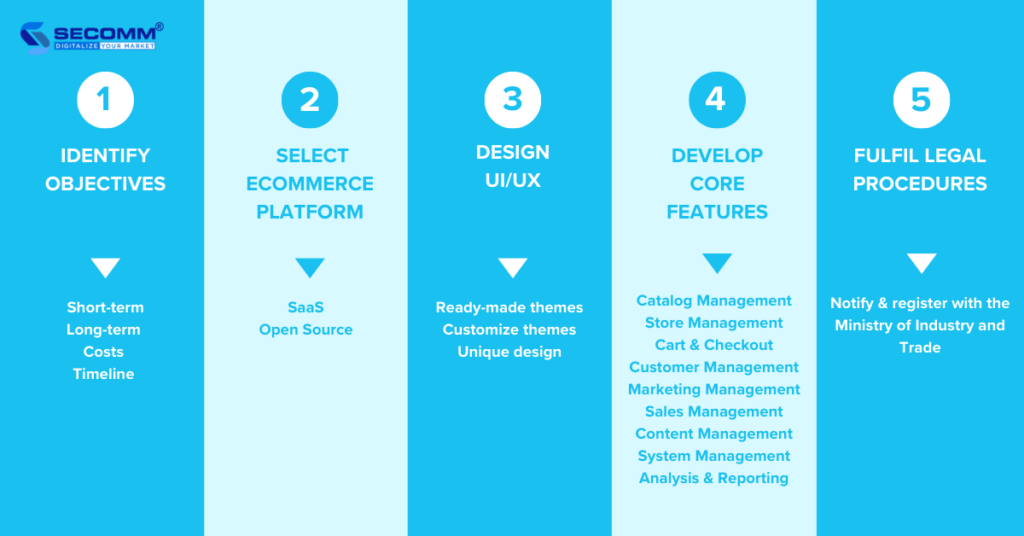
Identify objectives
The first thing to do is identify and prioritize goals to plan the pharmacy eCommerce website development for each phase.
In the long run, businesses can consider goals like branding, generating potential customers, and optimizing online and offline operations.
For short-term goals, businesses should prioritize objectives like monitoring and analyzing customer behavior, evaluating marketing campaigns, and revenue growth.
In the first phase, businesses can decide to deploy quickly to enter the market or proceed gradually to test and adapt to this eCommerce world.
Select eCommerce platform
There are two types of platforms to help businesses facilitate pharmacy eCommerce websites: SaaS (Software as a Service) and open source.
Some popular SaaS eCommerce platforms include
- Haravan: Founded in 2014 based on Shopify, Haravan has become popular in the Vietnamese eCommerce community for B2C businesses or those dealing with low-involvement products. It offers quick deployment with reasonable fees.
- Shopify: It is a widely used eCommerce platform allowing businesses to build, develop, and manage their online stores. Shopify offers an intuitive interface, making it easy for users with limited technical skills to operate eCommerce efficiently.
- BigCommerce: Designed to be easy to use, BigCommerce empowers businesses of all sizes and technical skills to start their journey to build a professional eCommerce website.
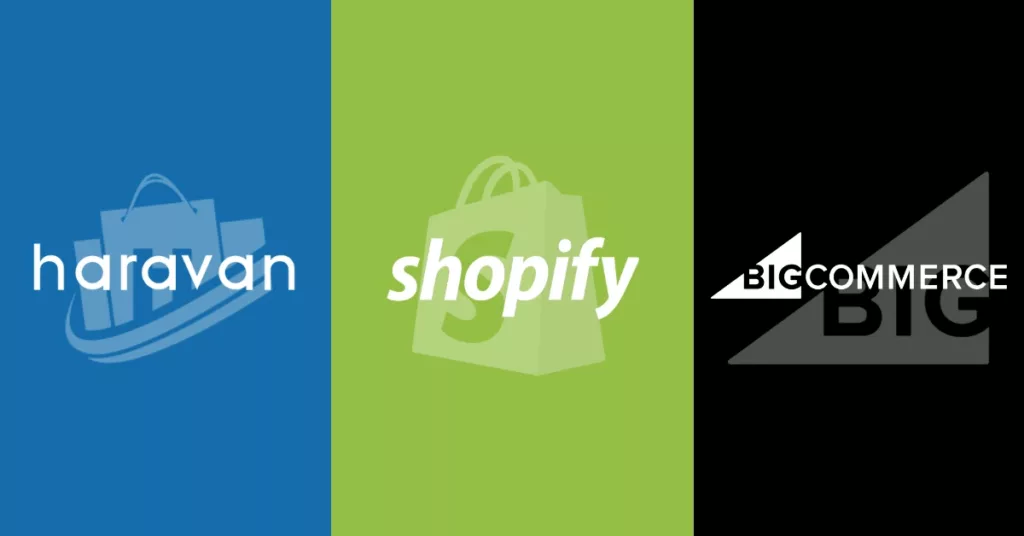
Some outstanding open-source eCommerce platforms include
- Adobe Commerce (Magento): Adobe Commerce is an open-source eCommerce platform designed specifically for businesses ranging from medium to large scale, with high growth and extensive customization and expansion needs. It includes two main versions: Magento Open Source (free) and Adobe Commerce (paid).
- WooCommerce: WooCommerce is a free WordPress plugin that allows brands to set up eCommerce websites by adding eCommerce functionality to an existing WordPress website.
- OpenCart: OpenCart is an open-source eCommerce platform based on the PHP programming language, developed by Daniel Kerr in 1998, with two versions: Free (Open Source) and Cloud Store (Paid).
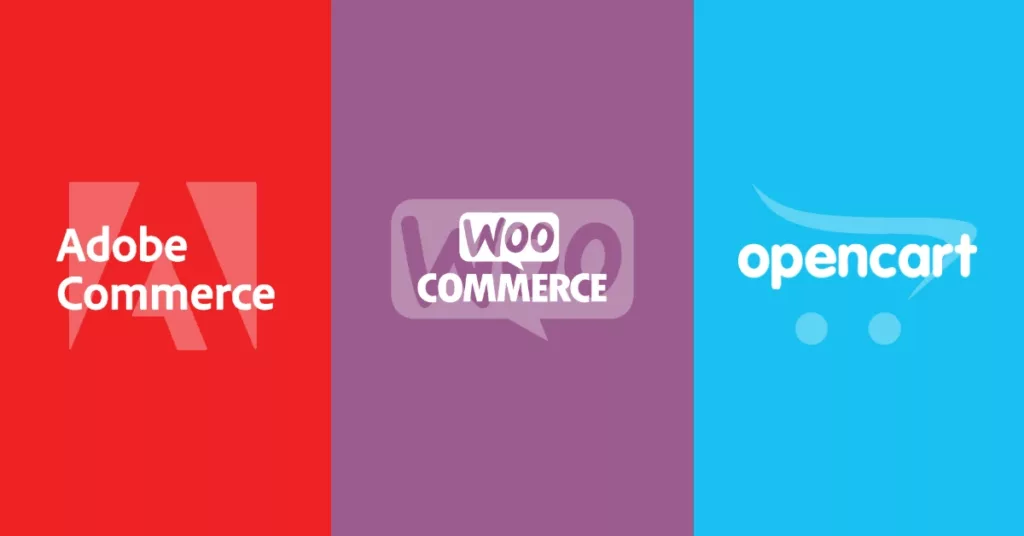
Typically, new eCommerce businesses will choose SaaS platforms to save time and budget in the initial phase of building a basic eCommerce website or an online pharmacy. Then, businesses will re-platform to an open-source platform to develop more advanced eCommerce systems.
However, some businesses decide to build their eCommerce websites in the basic phase on an open-source platform and then upgrade the system over time to remove the re-platforming step in the later phase.
Design UI/UX
When designing the interface, businesses need to meet basic criteria such as UI/UX standards, showcasing the brand’s characteristics, maintaining consistent product presentation, providing sufficient user guidance, etc.
When it comes to UI/UX design, it’s important to showcase the brand image, products, user guide, etc.
There are three ways to design UI/UX:
- Using ready-made themes: This way helps businesses optimize design costs but may limit brand positioning as it can lead to theme duplication with other websites
- Customizing themes: Balancing cost savings and adding some brand identity elements such as color, font, layout, etc. However, to customize themes effectively, a specialized and experienced team is required.
- Designing a custom theme: Businesses will have a website tailored to their brand. However, this approach requires more investment in design costs and time.
In this phase, businesses often choose ready-made themes to minimize costs, but some financially robust businesses may opt for the other two methods to better position their brand.
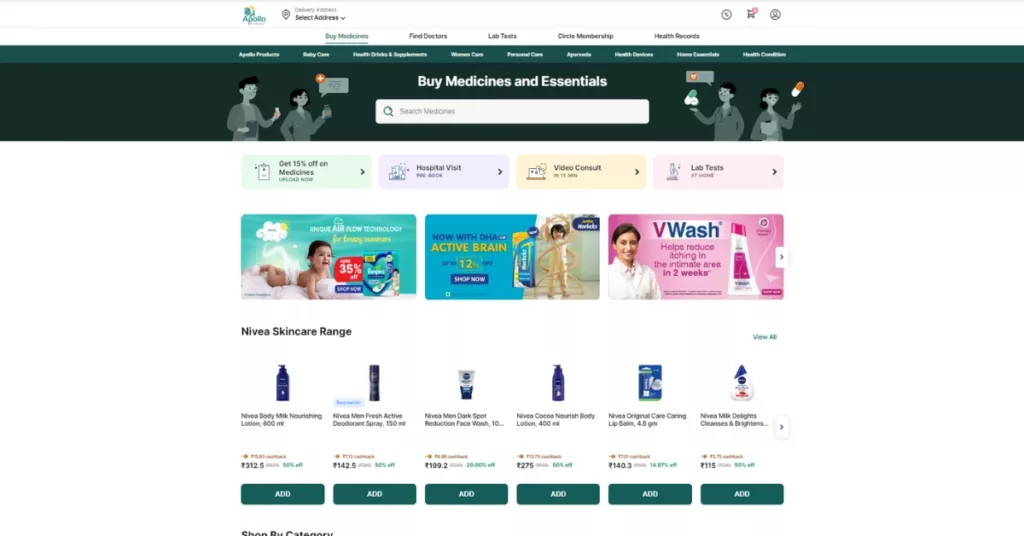
Develop core features
In the basic development phase, businesses should prioritize developing core features for an online pharmacy.
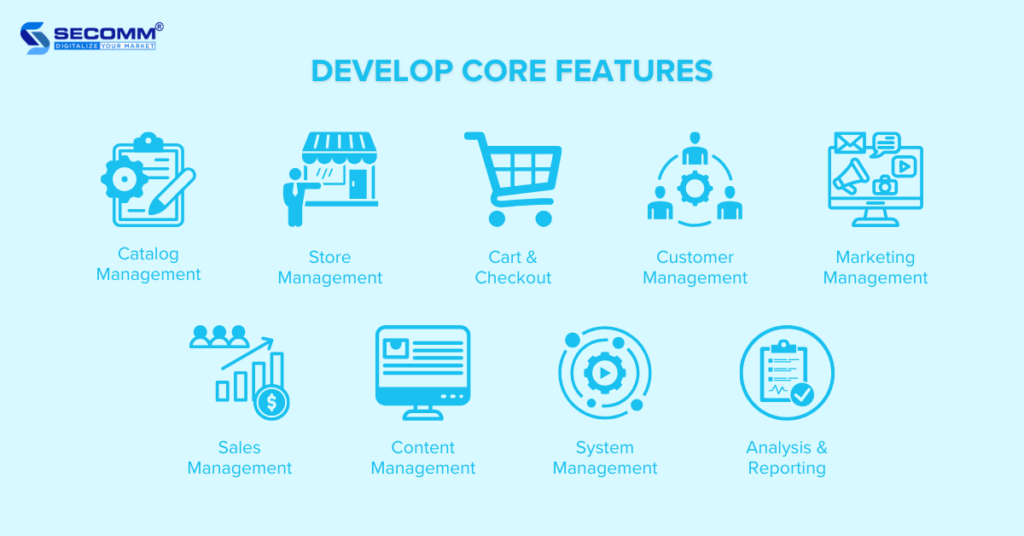
Some essential features that a pharmacy eCommerce website should have include
- Catalog Management: Control product data, features, categories, prices, inventory quantities, and images/videos for smooth operations and optimal business performance.
- Store Management: Handle product inventory, control the business activities, and manage personnel for each branch.
- Cart & Checkout: Manage the shopping cart and customer checkout information.
- Customer Management: Manage customer information to improve marketing effectiveness, shopping experience, and overall customer satisfaction.
- Marketing Management: Optimize SEO and implement marketing programs using supporting tools to boost sales for the business.
- Sales Management: Establish and operate sales processes, orders, payments, and shipping.
- Content Management: Develop and optimize all content-related aspects for CMS pages, image storage, theme customization, and website design.
- System Management: Administer user roles, and explore best practices in terms of security, maintenance, and system care for the website.
- Analysis & Reporting: Support to track, and measure the performance of the eCommerce system, and plan for future strategies
Fulfill legal procedures
After developing features and ensuring a successful testing and website launch, businesses are obligated to complete the legal procedures associated with eCommerce operations.
According to Decree 52/2013/ND-CP by the Government of Vietnam, any individual or organization owning an e-commerce website for sales is required to notify or register with the Ministry of Industry and Trade through the online public service portal of the Ministry of Industry and Trade.
Note: Websites that operate beyond the specified period or fail to register/notify the authorized management agency within the designated timeframe may be subject to administrative penalties as per regulations.
Phase 2: Developing an advanced online pharmacy
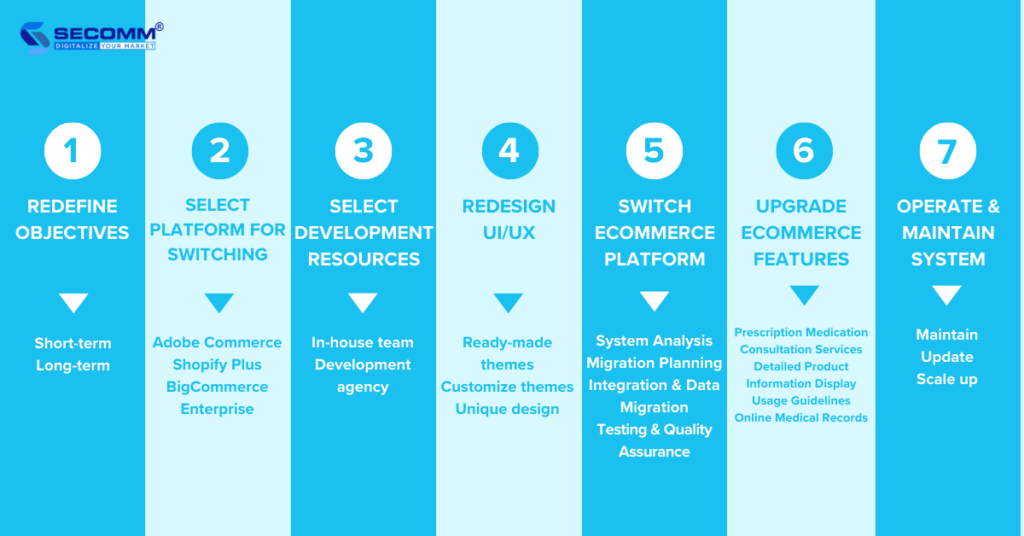
Redefine objectives
In the process of business development and amidst significant market changes, it’s important to realign goals to suit the evolving landscape. This time for business leaders to redefine objectives regarding the overall strategy, timeline, and budget for investing in the pharmacy eCommerce website.
During this phase, businesses often focus on short-term and long-term goals related to expanding the online pharmacy
For long-term goals, businesses may consider goals such as expanding market segments, establishing a loyalty program, and cultivating shopping habits for healthcare products, pharmaceuticals, and medical equipment.
For long-term goals, businesses may prioritize goals related to tapping into new potential customers, revenue growth, and supporting eCommerce marketing strategies such as livestreaming, gamification, affiliate marketing, and influencer marketing.
Select a platform for switching
When SaaS platforms can’t support businesses to expand the system anymore, re-platforming to another robust platform is a top choice. Platforms like Adobe Commerce, Shopify Plus, and BigCommerce Enterprise can help businesses facilitate a deeply custom pharmacy eCommerce website.
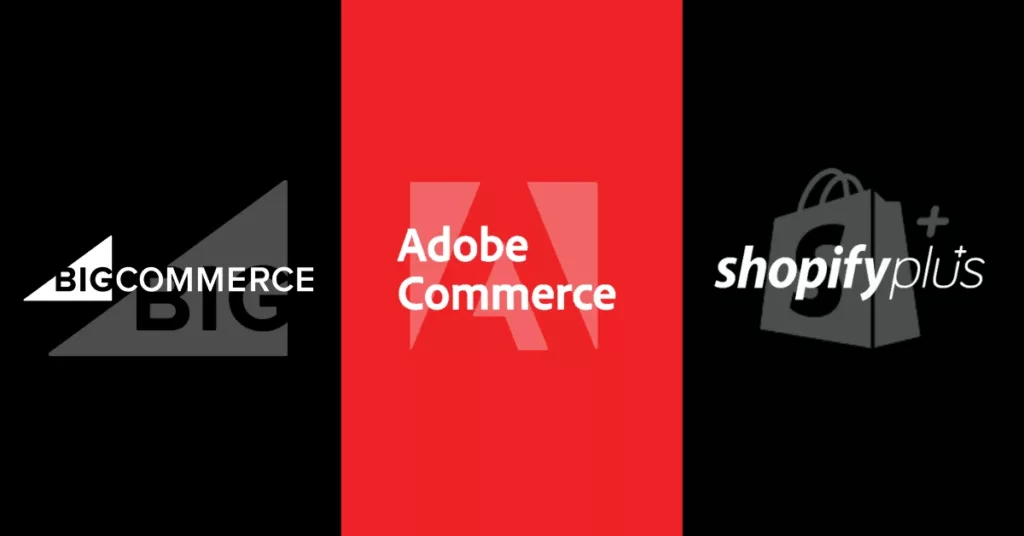
When re-platforming, businesses have challenges such as switching costs, time to train personnel, and data loss throughout the platform migration process.
Select development resources
To build a high-complexity online pharmacy on a professional platform, businesses need resources to facilitate it effectively.
Businesses can decide to build an in-house team or seek a development agency. Regardless of the choice, it requires businesses to have practical experience on the selected platform.
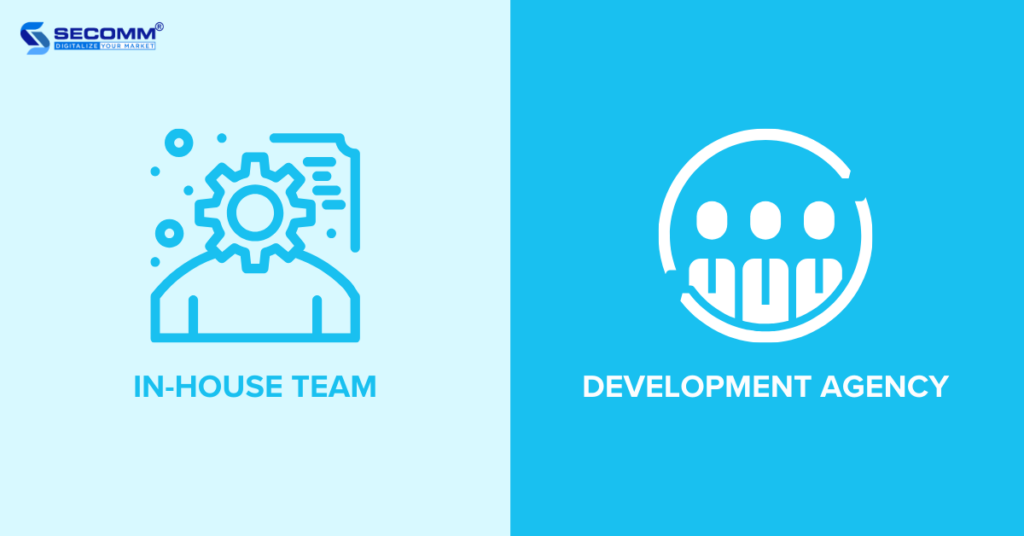
For building an in-house team, businesses need to recruit and train IT and eCommerce personnel to develop on the selected platform. This option may take time and budget to establish a high-performing team but it allows the business to have better control over resources and actively adjust or develop the website system.
In case businesses hire a development agency, here are some criteria to consider:
- Deep Experience in eCommerce: Number of years of experience; Quantity and quality of completed projects; Complexity level of the finished projects.
- Professional Team: Solution consulting specialists; eCommerce specialists; IT personnel; and Customer support.
- Straightforward Process: Analysis; Proposal of solutions; Development timeline; Testing and system maintenance.
- Handling Capabilities: Prompt support; Commitment to warranty and maintenance.
Partnering with a professional development agency will help businesses gain specialized knowledge, enhance experience, and create an online pharmacy tailored to the specific needs of the industry.
Redesign UI/UX
During the platform migration process, businesses can keep the current website design without making any changes. However, some businesses tend to redesign their websites to align with new strategies and the new platform.
Similar to the previous phase, businesses have three options to design their pharmacy eCommerce websites: using ready-made themes, customizing themes, or designing a unique interface.
However, in phase 2, businesses often decide to customize themes or design a unique interface to express the brand image and the pharmaceutical eCommerce industry.
Switch eCommerce platform
After the right eCommerce platform for migrating, businesses should carry out the process to minimize the risk of data loss or errors. Typically, the migration process is automated as much as possible to avoid potential issues.
The migration process includes the following steps:
- System Analysis: Evaluate the current system in detail, including the database, interface design, integrations, and implemented customizations.
- Migration Planning: Develop a detailed plan for the conversion process, including timelines, resources, and participants.
- Integration and Data Migration: Extract data from the old system and transfer it to the new system, including information about products, orders, customers, and other relevant data.
- Testing and Quality Assurance: Conduct comprehensive testing to identify and rectify errors, ensuring that the website operates smoothly and securely.
After re-platforming, the business needs to perform thorough checks to ensure that the data has been migrated completely and accurately according to the plan.
Upgrade eCommerce features
Beyond core features, businesses should focus on building a system with more complex features, including advanced and industry-specific functionalities for pharmaceutical eCommerce.
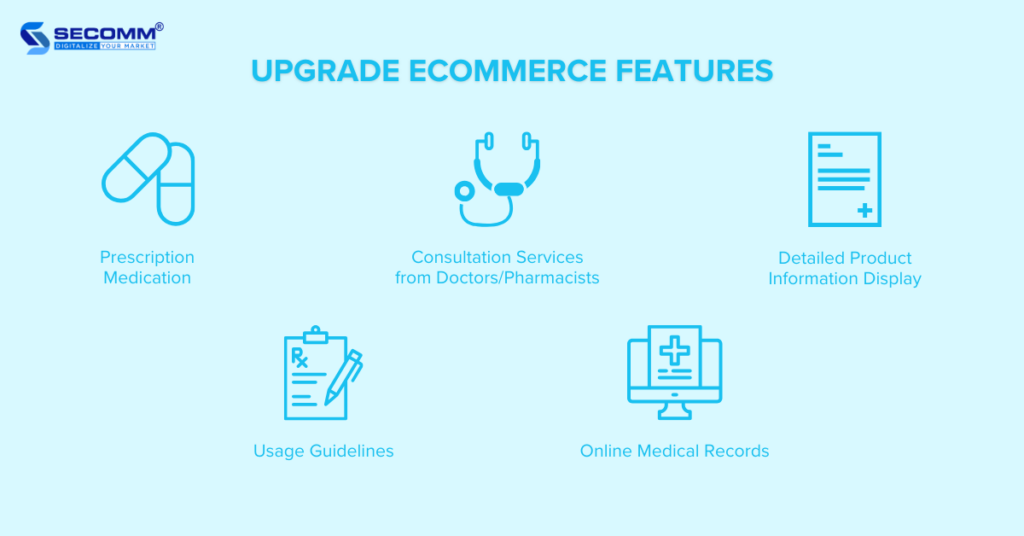
- Prescription Medication: Provide prescription medications based on the doctor’s indications and instructions.
- Consultation Services from Doctors/Pharmacists: Offer health consultation services and online medical examinations as needed.
- Detailed Product Information Display: Provide comprehensive product information, including the name of the medication, ingredients, indications, dosage, usage instructions, side effects, warnings, expiration date, and pricing.
- Usage Guidelines: Provide instructions for the use and dosage adjustment for all medical products, with a reference to the advice of doctors/pharmacists.
- Online Medical Records: Store patient medical records and test results on the system’s information portal.
In addition, businesses need to consistently update and enhance these features to meet user needs and keep pace with market trends.
Operate & maintain system
When testing the eCommerce system, businesses need to thoroughly check the entire website and its features over a specific period to ensure order processing speed and website stability. If any issues arise, businesses should immediately contact the in-house team or development partner to adjust and improve the website accordingly before officially going live.
Once the pharmacy eCommerce website system is stable, businesses should focus on eCommerce marketing strategies or Omnichannel approaches to enhance their online pharmacy.
Additionally, regular maintenance, updates, and continuous system upgrades are essential to sustain growth and quickly adapt to changes in the eCommerce market in general and the healthcare market in particular.
The Bottom Line
In general, the journey of building a pharmacy eCommerce website in Vietnam is not an easy task. This work demands substantial investments of time and budget from businesses to research the most suitable eCommerce strategy for each stage of their development.
Understanding the challenges that businesses may encounter when building an online pharmacy, SECOMM is ready to provide custom solutions for developing an eCommerce system.
Contact SECOMM or call the hotline at 028 7108 9908 for a free consultation.
 2
2

 5,134
5,134

 0
0

 1
1
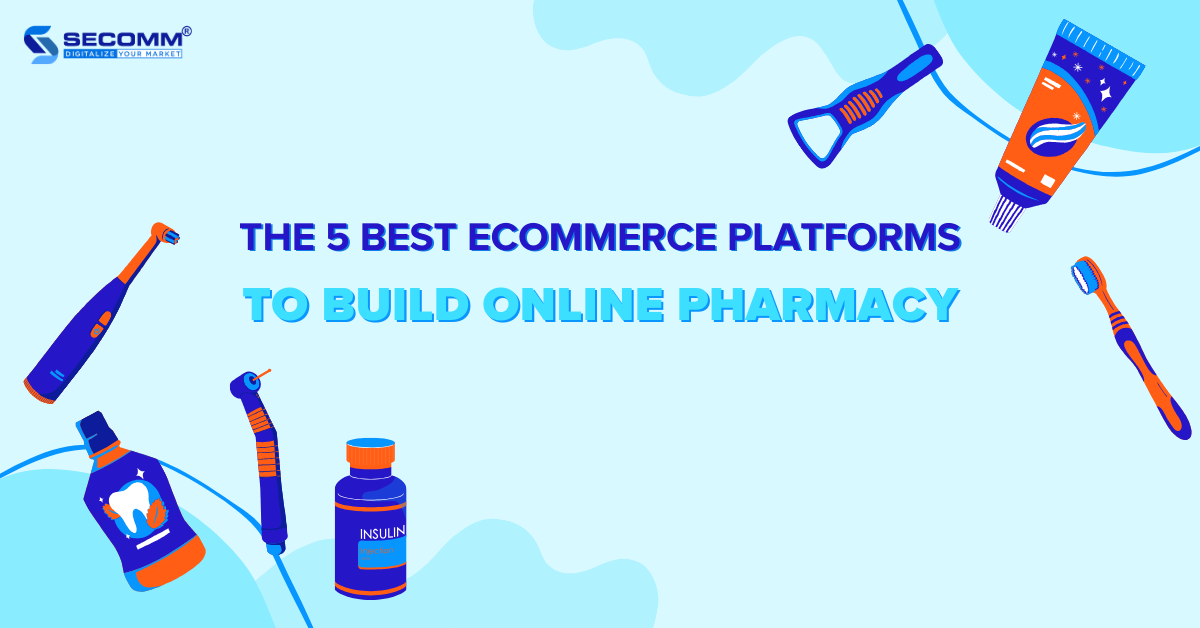
THE 5 BEST ECOMMERCE PLATFORMS TO BUILD ONLINE PHARMACY
According to The Business Research Company, the global pharmaceutical eCommerce market is projected to reach $732.3 billion by 2027. This represents a significant opportunity for pharmacies, healthcare service providers, or hospitals/clinics to implement eCommerce and reach a broader range of potential customers. To achieve this, building an online pharmacy on a professional platform is a great idea to address industry-specific challenges.
Things to keep in mind when building an online pharmacy
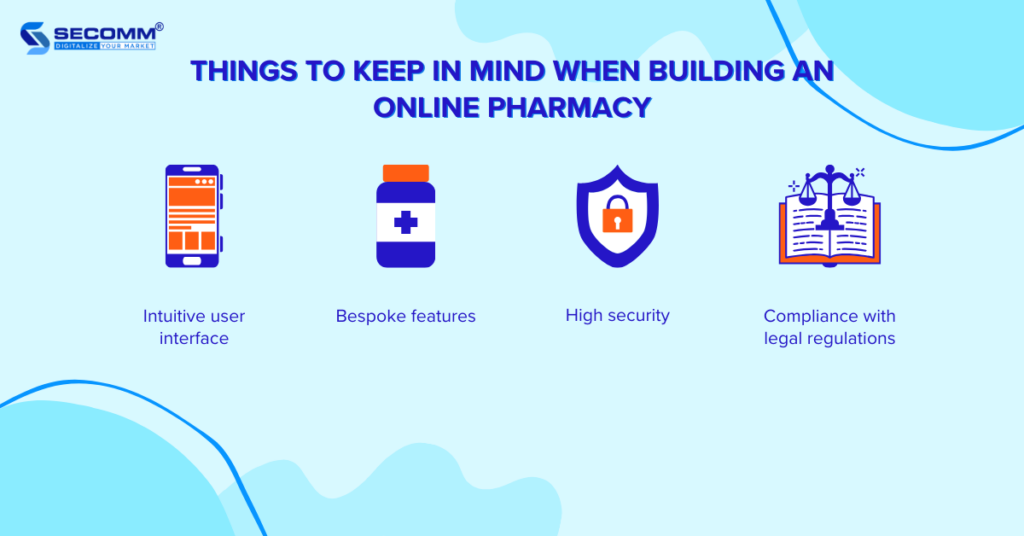
When building a pharmacy eCommerce website, businesses must meet numerous criteria to ensure professionalism, safety, and legal compliance within this industry.
Intuitive user interface
The typical customer profile in the pharmaceutical eCommerce sector consists of individuals seeking to purchase medications, medical equipment, and other healthcare products for themselves, family, or friends.
Thus, the website interface needs to be visually appealing, and user-friendly, and prioritize colors such as blue or white to create a sense of safety and cleanliness.
Other factors, such as layout, font choice, and imagery, should be carefully selected and coordinated to deliver the most professional user experience.
Bespoke features
When building an online pharmacy, beyond default eCommerce features, businesses should focus on developing the following features to address industry-specific needs:
- Prescription Medications: Provide prescription medications based on the doctor’s indications and instructions.
- Consultation Services from Doctors/Pharmacists: Offer health consultation services and online medical examinations on demand.
- Detailed Product Information Display: Furnish comprehensive information about products, including drug names, ingredients, indications, dosage, usage instructions, side effects, warnings, expiration dates, and prices.
- Usage Guidelines: Provide usage instructions and dosage adjustments for all medical products, about the advice of doctors/pharmacists.
- Online Medical Records: Store patient medical records and test results on the system’s information portal.
High security
An online pharmacy is a system that contains various crucial information including personal details, payment information, and the health status of customers. Therefore, the security system of the website needs to be built and deployed carefully to ensure the safety of customer data.
Compliance with legal regulations
Pharmaceutical eCommerce is a specialized business area subject to the regulations of the healthcare/pharmaceutical industry. eCommerce pharmaceutical businesses need to comply with these regulations to ensure that their operations are legal and safe for customers.
Below are some key legal regulations that e-commerce pharmaceutical businesses need to adhere to in Vietnam:
- Pharmaceutical Law: The Pharmaceutical Law regulates the conditions for pharmaceutical business, including requirements for pharmaceutical business licenses, facilities, equipment, personnel, and drug quality.
- Decree 54/2017/NĐ-CP: Decree 54/2017/NĐ-CP provides detailed regulations on pharmaceutical business activities.
- Circular 07/2018/TT-BYT: Circular 07/2018/TT-BYT guides the advertising of drugs, drug ingredients, medical equipment, and cosmetics.
- Circular 04/2016/TT-BYT: Circular 04/2016/TT-BYT guides state management of the pharmaceutical profession.
- Circular 34/2018/TT-BYT: Circular 34/2018/TT-BYT guides state management of drugs and drug ingredients.
In addition, pharmaceutical eCommerce businesses also need to comply with other legal regulations, such as Cybersecurity Law, Consumer Protection Law, and eCommerce Law.
Top 5 eCommerce Platforms to build an online pharmacy
Although this industry has many challenges to deploy, businesses always have eCommerce platforms to create their online pharmacies. Here are the 5 leading platforms for building online pharmacy that businesses may consider.
BigCommerce
BigCommerce is a cloud-based eCommerce platform operating on the Software as a Service (SaaS) model, enabling businesses to create and manage online stores.
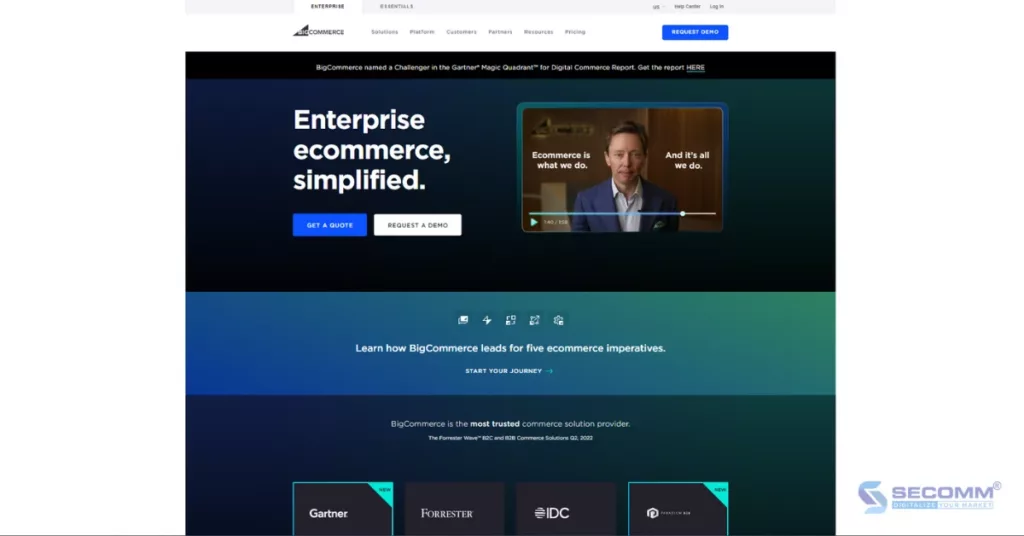
Currently, BigCommerce offers four main solutions, including
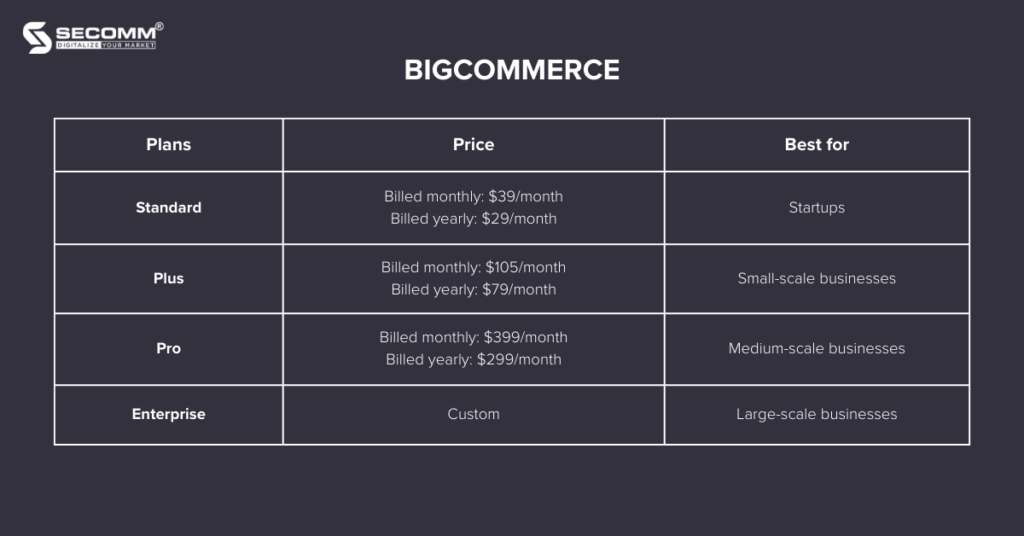
Pros:
- Easy to use: BigCommerce is designed to be user-friendly with a drag-and-drop builder to help businesses create and manage online stores easily without the need for technical skills.
- Multi-channel support: BigCommerce allows pharmaceutical businesses to operate across multiple platforms, including eCommerce websites, social media pages, and online marketplaces.
- Security compliance: BigCommerce is committed to adhering to high-level security standards and protects customer personal information and transaction data.
- Pharmaceutical solutions: BigCommerce offers a variety of features and interfaces specifically designed for the pharmaceutical industry.
Cons:
- Ongoing costs: As a SaaS, BigCommerce requires monthly or annual fees for usage. The value of these fee packages may increase depending on the scale of the business and transaction fees per order.
- Limited customization: While BigCommerce allows customization of eCommerce websites, it limits deeper customization. This could be an issue for businesses with specific customization requirements, such as in the pharmaceutical industry.
- Limited scalability: While BigCommerce can scale, for large businesses or those planning rapid expansion in the future, it may be necessary to consider more specialized platforms to handle these needs.
- Platform dependency: Businesses will rely on BigCommerce’s ecosystem to maintain and update their online stores. This could be a concern if a business needs complete control over its system.
Some famous pharmaceutical eCommerce businesses currently utilizing BigCommerce include Victoria Health, Molton Brown, LARQ, and Zyppah.
Shopify
Shopify is a SaaS eCommerce platform established in 2006. To date, Shopify has rapidly become one of the leading platforms in the eCommerce industry, supporting thousands of businesses worldwide to initiate and grow their online ventures.
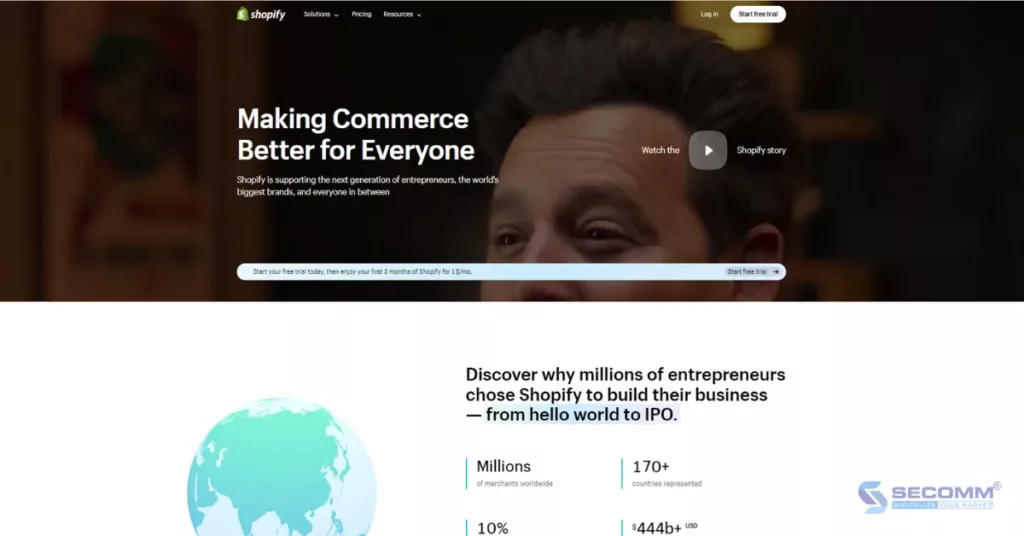
The cost to use the Shopify platform is quite diverse, including these three solutions:
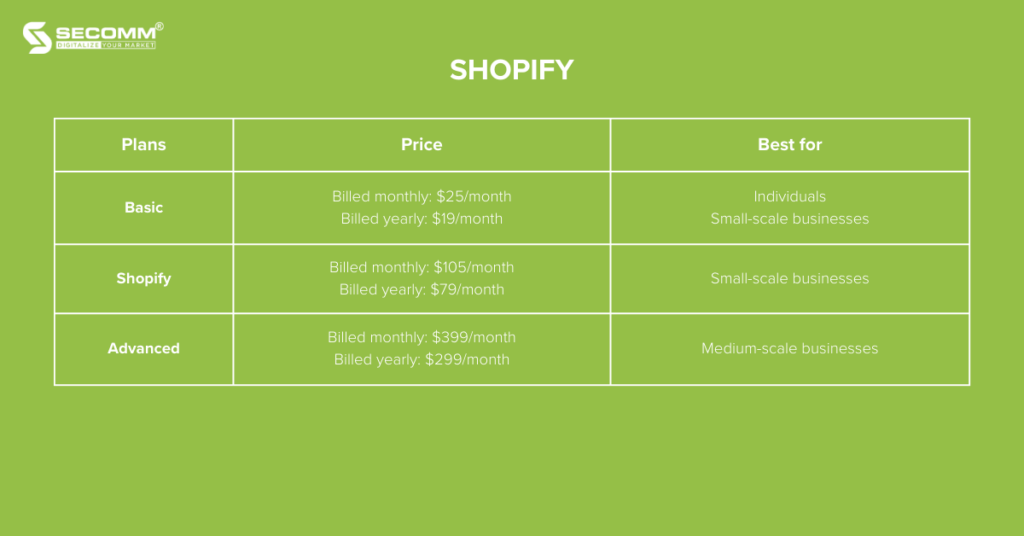
In addition, Shopify provides eCommerce solutions tailored to businesses with different needs and wants, such as:
- Starter: $5/month, leveraging payment features through social networks and messaging apps for businesses.
- Retail: $89/month, includes employee management features, inventory tracking, and loyalty programs for retail stores.
- Commerce Components: Custom pricing, offering third-party modules for integration into the eCommerce website.
- Shopify Plus: Custom pricing, designed for large enterprises.
- Shopify Hydrogen: Custom pricing, for businesses to deploy Headless Commerce.
Learn more: Top 5 benefits of Headless Commerce
Pros:
- Easy to use: Shopify is designed with an intuitive user interface, allowing non-technical users to easily create online stores.
- Diverse pricing plans: Shopify offers a wide range of choices for businesses, catering to small, medium, startup, and large enterprises with various customization needs.
- Data Security: Shopify adheres to important security standards such as PCI DSS (Payment Card Industry Data Security Standard) to keep customer’s personal and healthcare data safe.
- Extensive Feature Set: Shopify provides many features and extensions to meet the needs of building eCommerce websites for various industries, including the pharmaceutical sector.
Cons:
- Ongoing costs: Similar to BigCommerce, Shopify requires monthly or annual fees for service usage, and costs can escalate over time due to transaction fees, expansion of features, etc.
- Limited Customization: Shopify offers a certain level of customization for basic packages like Basic, Shopify, Advanced, Retail, and Starter. If a business requires a highly customized eCommerce website, additional fees must be paid to use other solutions or consider alternative platforms.
- SEO Limitations: While Shopify supports basic SEO optimization, there are some limitations in terms of more advanced SEO optimization and custom URL management.
Healthcare, pharmaceutical, and medical businesses using Shopify include Dr.Axe, 310 Nutrition, Hiya, and BUBS Naturals.
StoreHippo
StoreHippo is a SaaS eCommerce platform established in 2014 in India. Over the years, this platform has consistently updated its technologies to meet the website-building needs of businesses, particularly those in the pharmaceutical eCommerce sector.
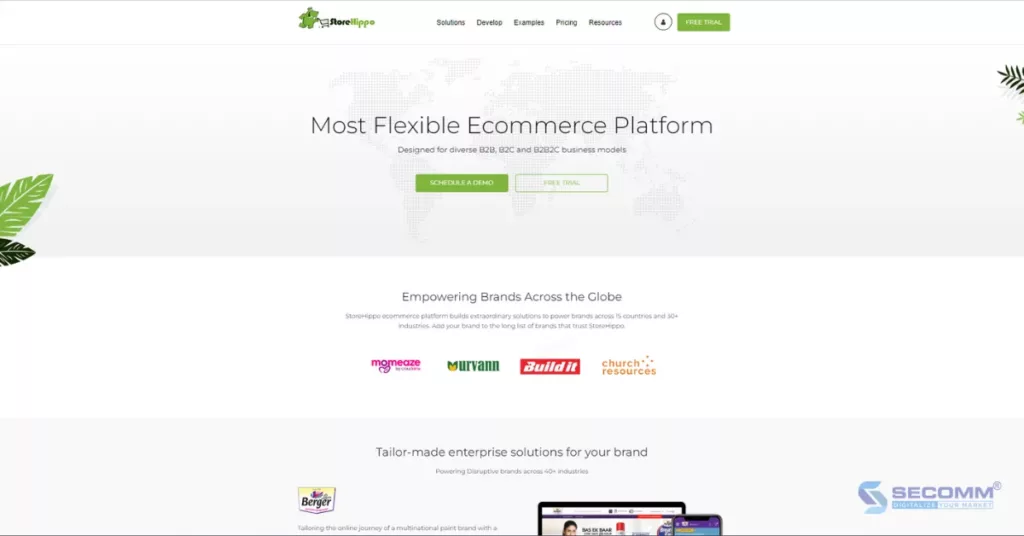
Similar to other SaaS platforms, StoreHippo offers a variety of solutions to choose from:
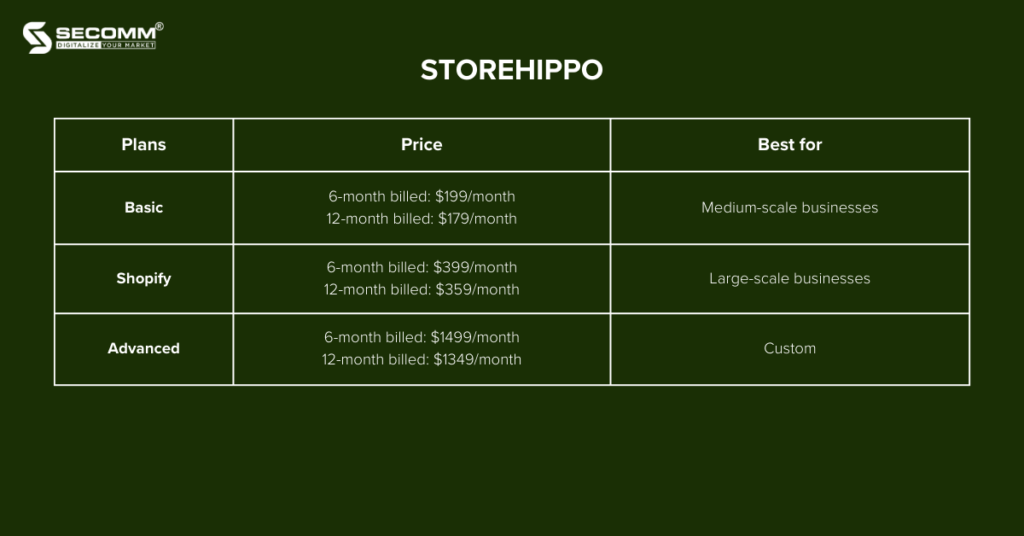
Pros:
- Easy to use: StoreHippo is designed with a user-friendly interface, making it quick and easy for users to create online stores.
- Custom solutions for pharmaceutical eCommerce: StoreHippo provides dedicated solutions for various industries, including online pharmacies.
- Continuous Updates: To address specific functions for each industry, StoreHippo has consistently improved and updated the latest technologies in e-commerce, such as Headless Commerce, PWA, Angular JS, etc.
Cons:
- Limited customization: Although StoreHippo allows businesses to customize their eCommerce website interface, it still limits deeper customization compared to other eCommerce platforms.
- Limited image size: StoreHippo has limitations on the size of images that businesses can upload and use in their online stores.
- Community and Support Limitations: In comparison to larger e-commerce platforms like Shopify, Magento, or BigCommerce, StoreHippo has a smaller user community and customer support, which may slow down the resolution of technical issues or support requests.
Some brands that built their online pharmacy with StoreHippo include WoundProfessional, Kunooz, and On A Healthy Note.
WooCommerce
WooCommerce is an open-source eCommerce plugin developed for the WordPress platform, one of the most popular content management systems (CMS) globally. WooCommerce enables businesses to turn their WordPress websites into online stores or integrate eCommerce features into existing websites.
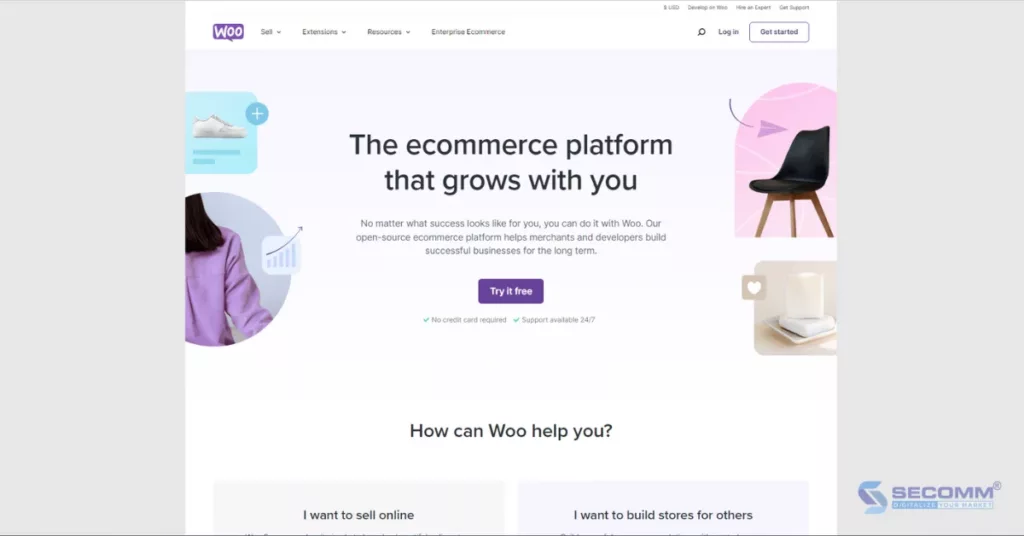
The license fee of WooCommerce depends on the complexity of each project, averaging around $1,000 for a basic eCommerce website and $10,000 for a more advanced eCommerce website.
Pros:
- Free to use: WooCommerce is an open-source platform, so it is entirely free to use and customize. However, associated costs such as hosting, domain, themes, functionality systems, and maintenance should be considered.
- Easy to use: WooCommerce is deeply integrated into WordPress, making the installation and management of online stores straightforward. Users familiar with WordPress will find WooCommerce’s interface user-friendly.
- Third-party integration: WooCommerce has a large development community and supports integration with various third-party applications and services, including features tailored for pharmaceutical eCommerce
- High customization: Businesses can customize the eCommerce website interface using both free and premium themes. WooCommerce also allows businesses to design their interface to reflect their brand.
Cons:
- WordPress dependency: WooCommerce is essentially a plugin for WordPress, meaning businesses must use the WordPress platform to use WooCommerce. This dependency can lead to challenges such as inconsistent support, slow data retrieval, conflicts between updates, etc.
- Complex customization: While WooCommerce allows customization, implementing complex customizations or integrating specific features may be time-consuming and require high technical skills or support from developers.
- Limited scalability: WooCommerce often faces difficulties in handling large online stores with thousands of products and high traffic.
Brands using WooCommerce to build online pharmacy include Dr. Scholl’s, myLAB Box, Superdrug Health Clinics, and Apothecanna.
Adobe Commerce (Magento)
Adobe Commerce, formerly known as Magento Commerce, is a professional and widely used eCommerce system. Adobe Commerce is part of the Adobe Experience Cloud product line and is designed to assist businesses in building eCommerce websites.
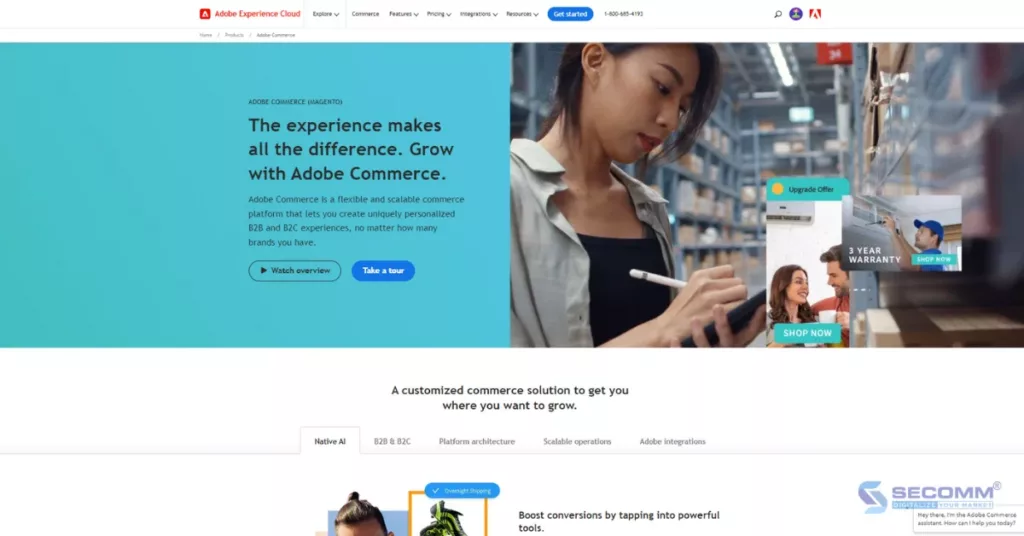
Currently, Adobe Commerce provides businesses with two main versions:
- Adobe Commerce (Magento Commerce): This is the premium version of Magento designed for large enterprises, offering two options: on-premise and on-cloud.
- Magento Open Source: Formerly known as Magento Community Edition, this is the open-source and free version of Magento.
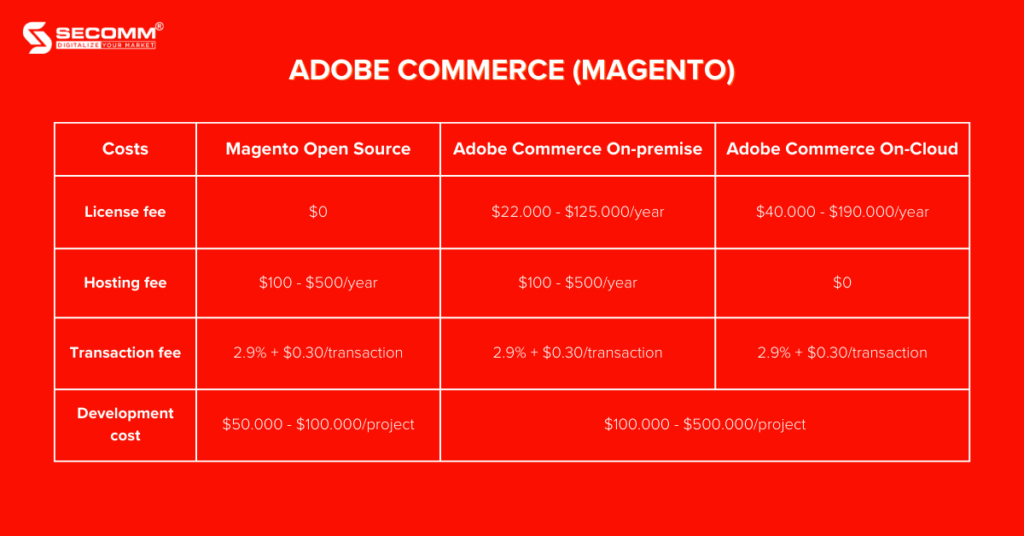
Pros:
- High Scalability: The Magento platform is built with high scalability, allowing businesses to add features and integrate third-party applications as needed.
- High Security: Adobe Commerce prioritizes security, ensuring that customer data and payments are protected securely.
- High customization: All versions of Adobe Commerce have flexible customization capabilities, addressing the complex requirements of various industries, particularly in the pharmaceutical eCommerce sector.
- Adobe Experience Cloud Ecosystem: If a business is using other Adobe products such as Adobe Analytics or Adobe Marketing Cloud, they can integrate them with Adobe Commerce to create a comprehensive system for customer experience.
Cons:
- High initial costs: Adobe Commerce has a higher development cost compared to other eCommerce platforms, making it preferred by medium and large businesses with complex eCommerce systems or high customization needs.
- Require high technical skills: Adobe Commerce is developed using the PHP programming language, which is relatively complex, requiring technical personnel with expertise and experience to develop projects correctly and effectively.
- Long deployment time: Deploying Adobe Commerce may take more time, especially for highly customized or complex eCommerce websites.
This list is just a few examples for businesses to reference; there are many other robust eCommerce platforms that businesses can consider based on specific needs and available resources.
With extensive experience in implementing eCommerce for clients in various countries, SECOMM understands the challenges and difficulties businesses face during the deployment of pharmaceutical eCommerce.
Contact SECOMM now or call the hotline at 02871089908 today for a free consultation.
 2
2

 5,638
5,638

 0
0

 1
1
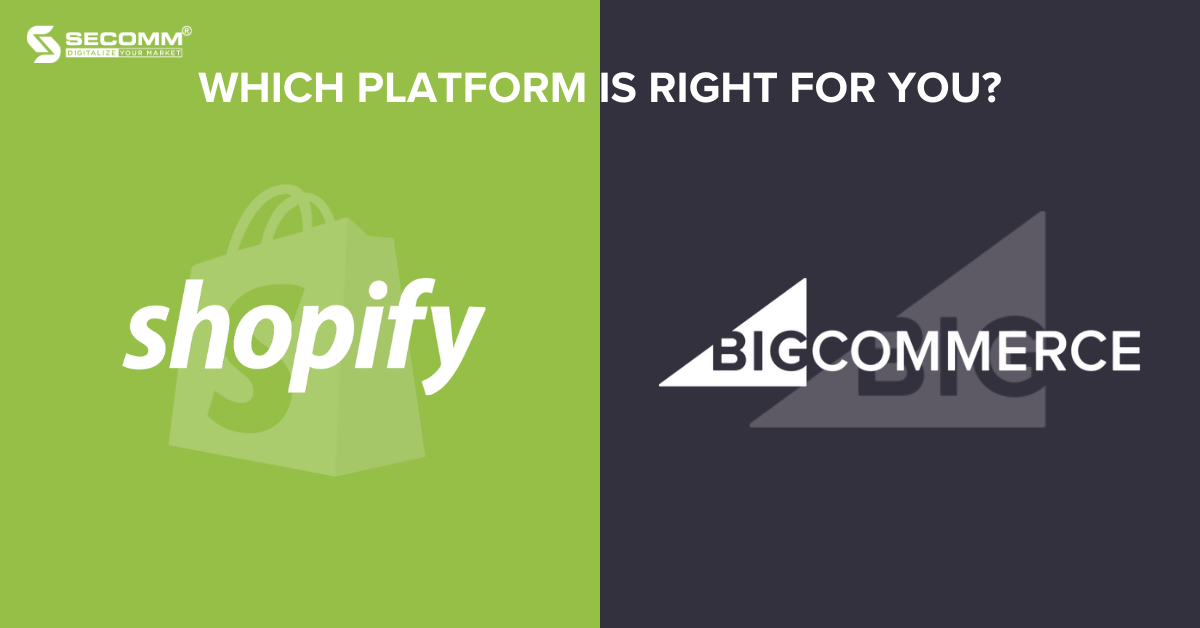
SHOPIFY VS BIGCOMMERCE: WHICH PLATFORM IS RIGHT FOR YOU?
In recent times, SaaS platforms like Shopify and BigCommerce have gained popularity thanks to the growing demand for eCommerce. While BigCommerce currently supports over 45 thousand active online stores globally, Shopify surpasses it with around 4.5 million active websites. Although Shopify and BigCommerce share typical features of SaaS platforms, there are notable differences between the two.
This article will compare the distinctions between Shopify and BigCommerce, providing valuable insights to help you, as a business make informed decisions quickly.
Learn more: Shopify Plus vs BigCommerce Enterprise
Shopify vs BigCommerce: Pros and Cons
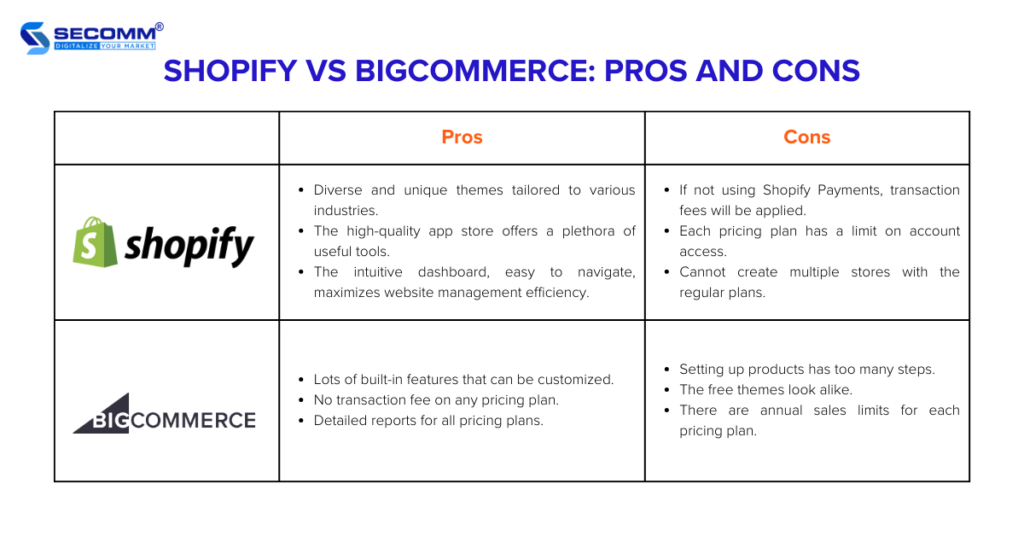
Shopify vs BigCommerce: So sánh nhanh
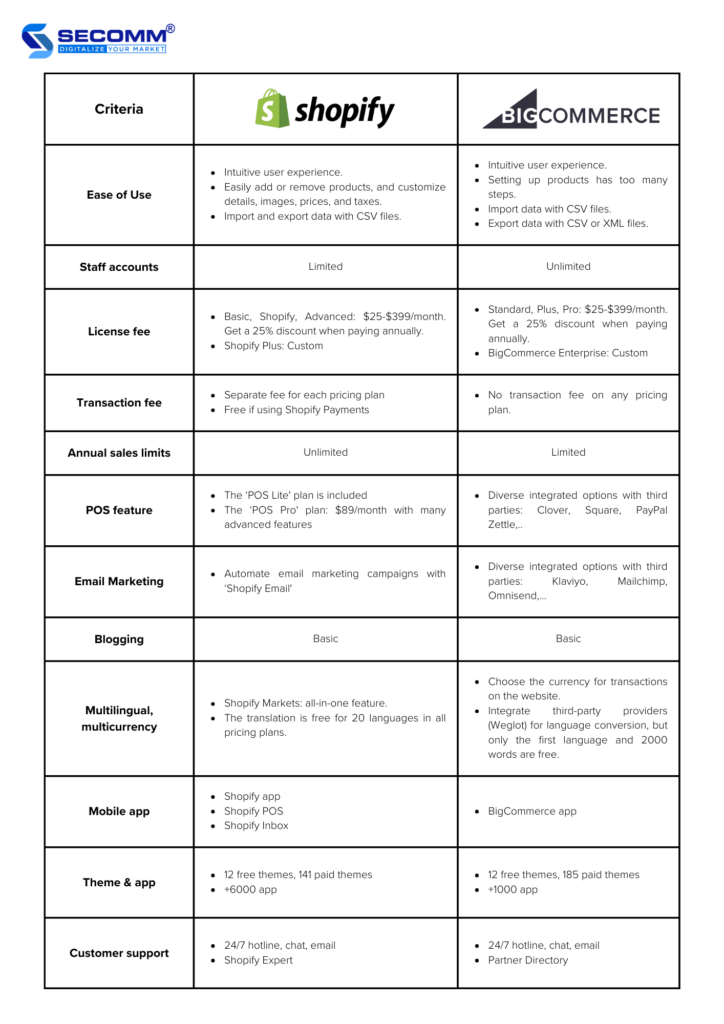
Shopify vs BigCommerce: Detailed Comparison
Ease of Use
New businesses often find Shopify more user-friendly than BigCommerce when it comes to setup and usage. Adding or removing products, customization, and editing layouts on Shopify are all straightforward tasks.
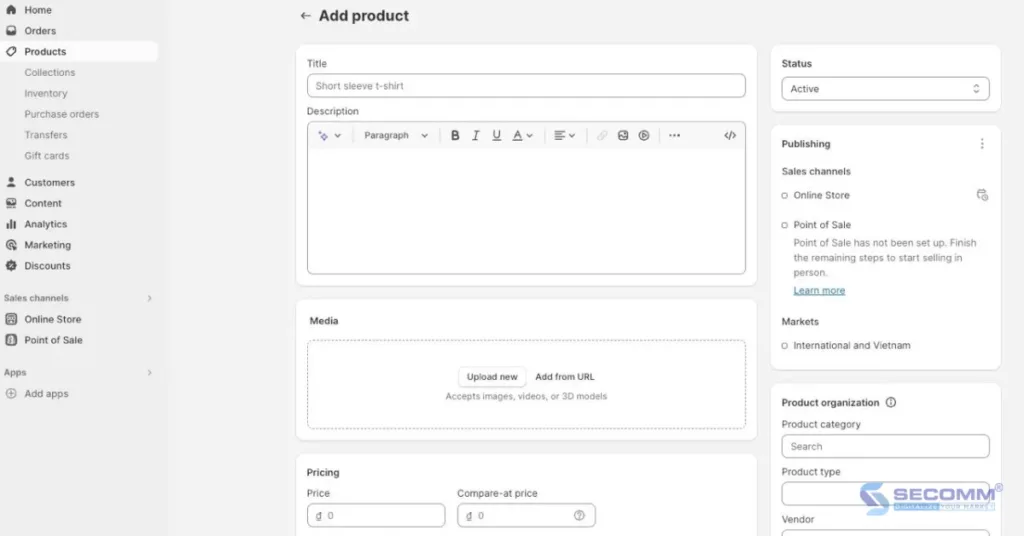
This doesn’t mean that the user experience of BigCommerce is less intuitive than the other. Both platforms are similar, providing drag-and-drop store editors, detailed documentation, and quick support. However, BigCommerce offers many built-in features that are expandable and customizable.
Users, though, may find themselves completing several different steps for each setup task, which can be overwhelming and time-consuming.
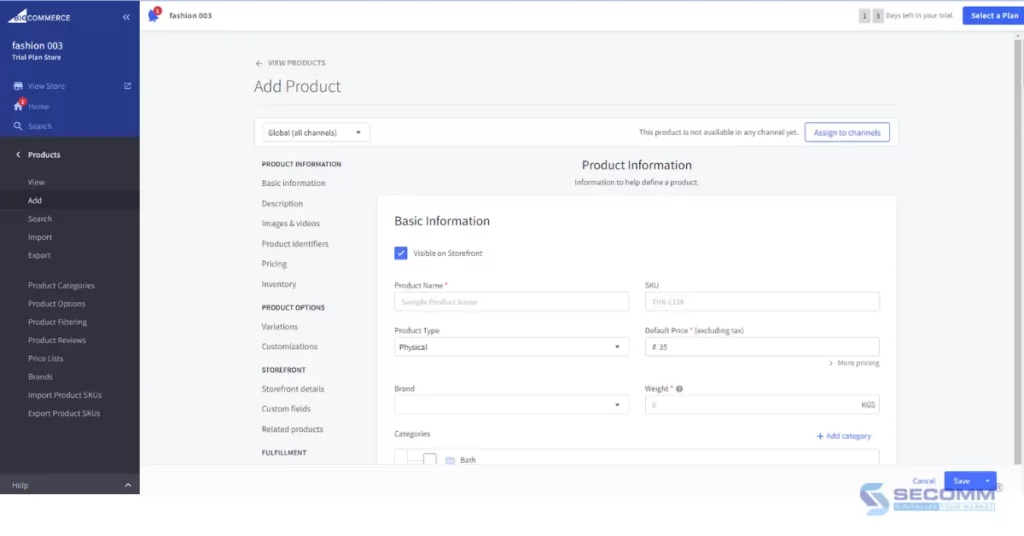
Staff Accounts
Shopify sets account staff limits for each pricing plan. Specifically, the Basic package allows 2 staff accounts, Shopify allows 5 staff accounts, and Advanced allows 15 staff accounts.
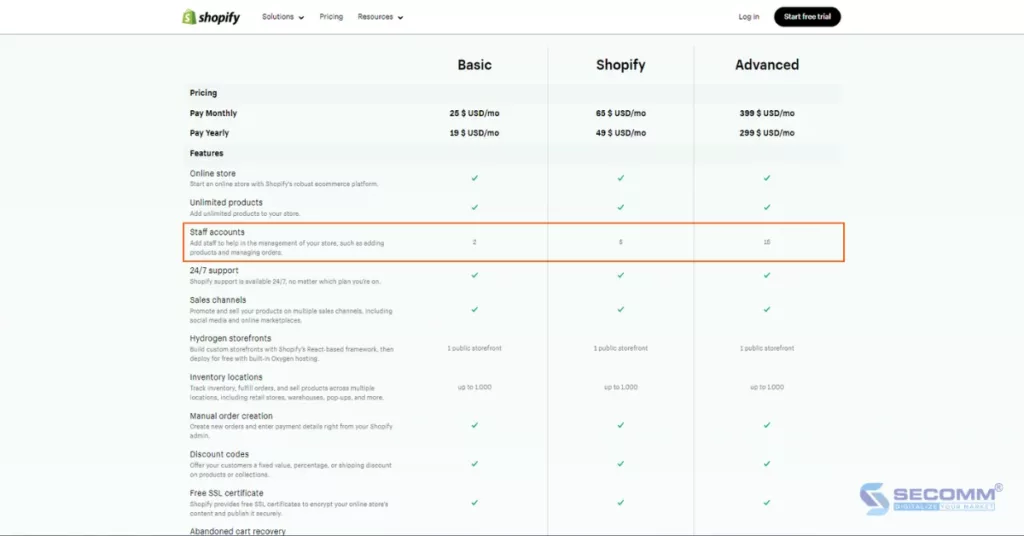
In this regard, BigCommerce has a significant advantage by providing unlimited account access for all solution packages. This flexibility can benefit businesses with many employees needing access to the eCommerce website system.
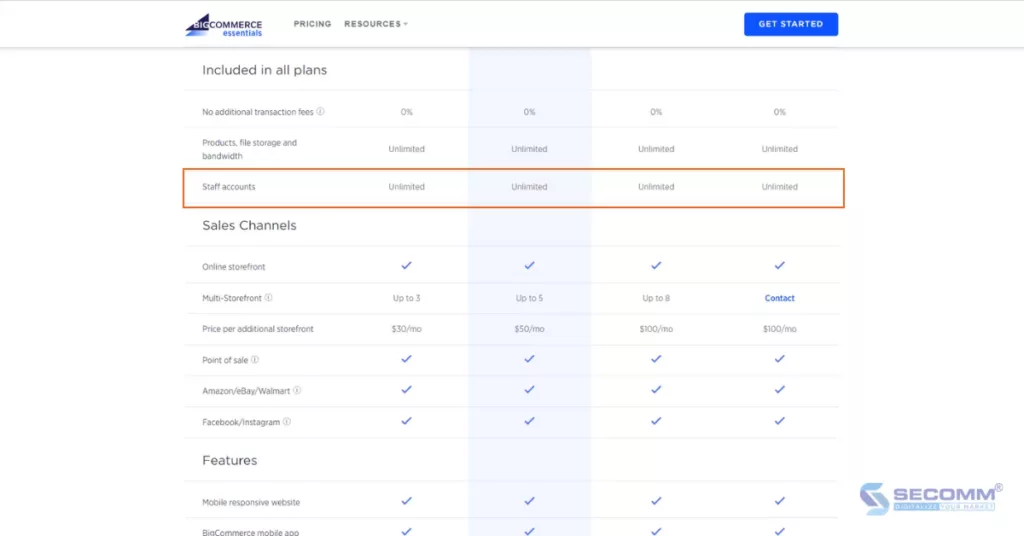
Pricing
- Pricing plans
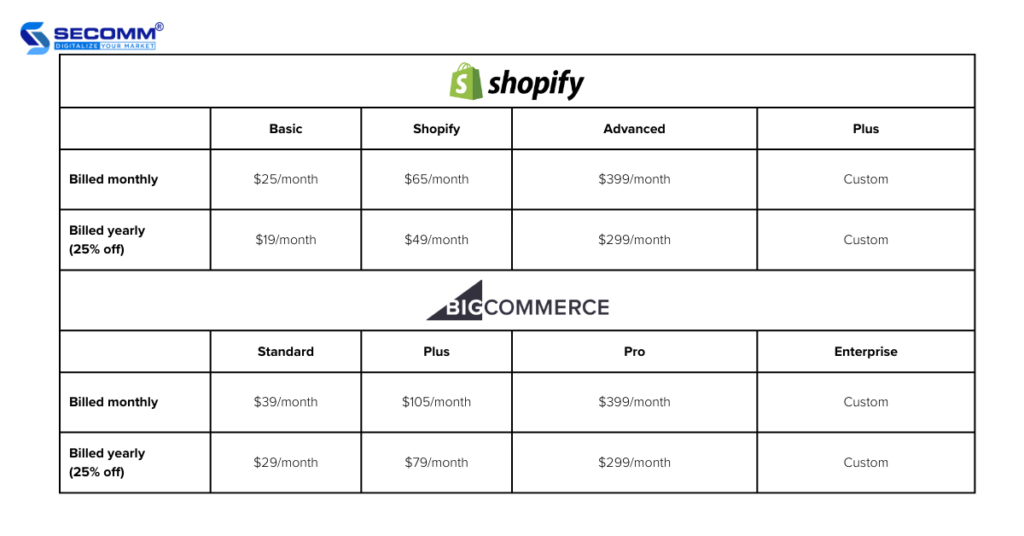
By using BigCommerce pricing plans, you can enjoy a 15-day free trial. The other offers a 3-day free trial for its 3 pricing plans, followed by a payment of only $1 per month for the initial 3 months. This gives you more time to experience the platform at a highly affordable cost.
- Transaction fee
The transaction fee is a drawback of Shopify. If you opt for third-party payment gateways, you’ll incur a transaction fee of 2%, 1%, and 0.5% for the Basic, Shopify, and Advanced plans, respectively. On the other hand, this fee is waived if you use Shopify Payments. However, Shopify Payments is limited to certain countries, some businesses may not have access. This, in turn, makes BigCommerce more appealing as it doesn’t impose transaction fees on any pricing plan.
Annual Sales Limits
BigCommerce sets annual sales limits to $50k for the ‘Standard’ plan, $180k for ‘Plus,’ and $400k for ‘Pro’, while the ‘Enterprise’ plan can be negotiated. To exceed these limits, you must upgrade to a higher pricing plan.
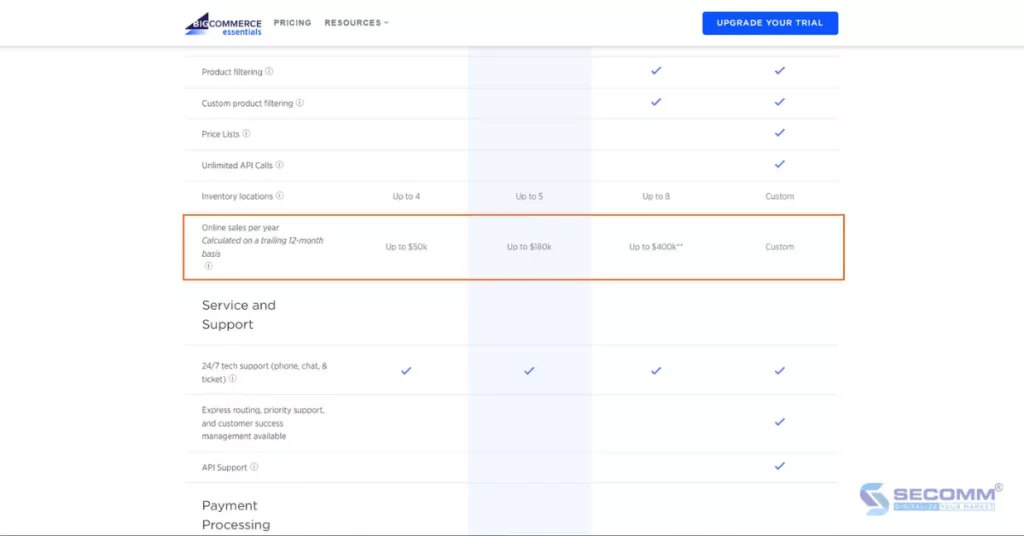
However, your business may not need the features offered in higher-tier plans and may be hesitant to pay additional fees for an upgrade. Therefore, the sales volume limit on the BigCommerce platform is a crucial factor that requires thoughtful consideration. In contrast, Shopify doesn’t impose any annual sales limits on any of its pricing plans.
Features
- Point of Sale (POS)
The POS feature isn’t limited to eCommerce transactions but also extends to traditional brick-and-mortar stores. Both BigCommerce and Shopify allow you to implement POS on mobile devices (smartphones, tablets) and other hardware (cash registers, barcode scanners).
To use POS with BigCommerce, you need to integrate with software like Clover, Vend, Square, PayPal Zettle, and others. Hence, if you are currently using a third-party POS system may appreciate the flexibility offered by BigCommerce.
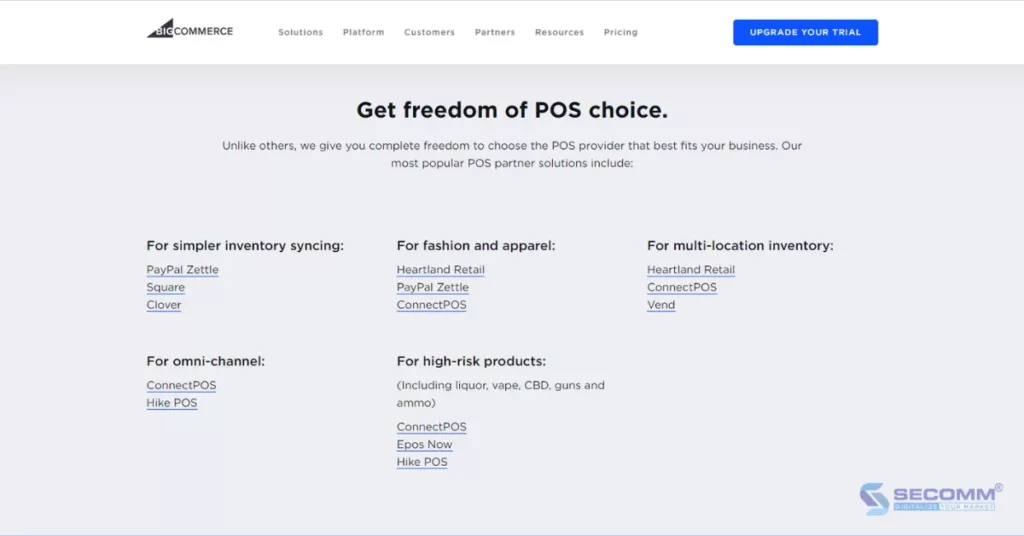
Conversely, Shopify offers built-in POS features, starting with the ‘POS Lite’ plan within its pricing plans. However, to access more advanced POS features, you can opt for the ‘POS Pro’ plan at $89 per month per location, added to the chosen pricing plan. If you choose the annual payment option, the ‘POS Pro’ plan is only $79 per month per location.
Shopify POS solution caters to diverse needs, including single-store transactions, multi-store transactions, event transactions, online and offline sales, as well as omnichannel operations.
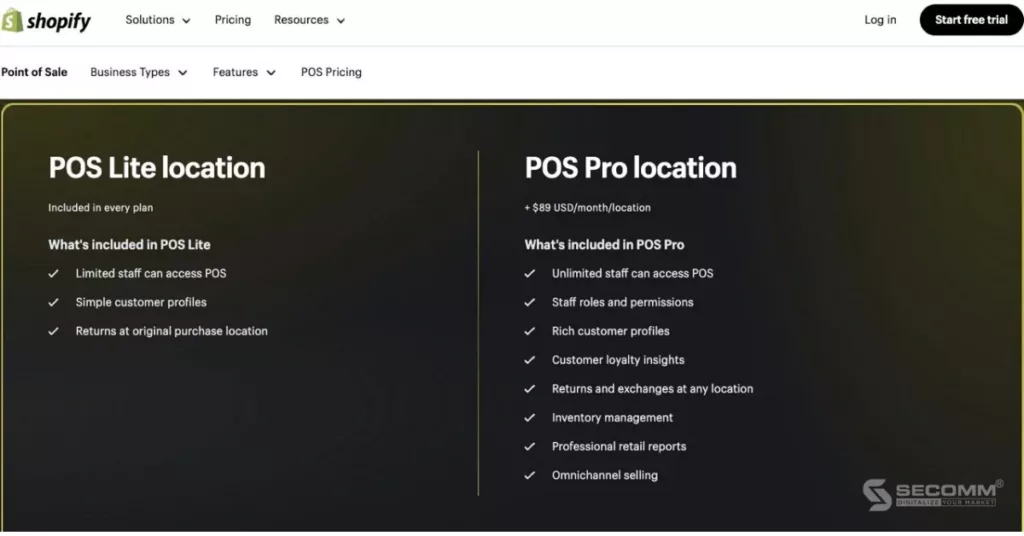
- Email Marketing
In eCommerce, email marketing is crucial when it comes to customer attraction and substantial sales growth. Hence, it’s a feature you should prioritize when selecting an eCommerce platform.
Beyond the Shopify POS solution, Shopify offers you the built-in Shopify Email feature, designed for Email Marketing campaigns and automating email processes (Welcome Email, Winback Email, Upsell Email).
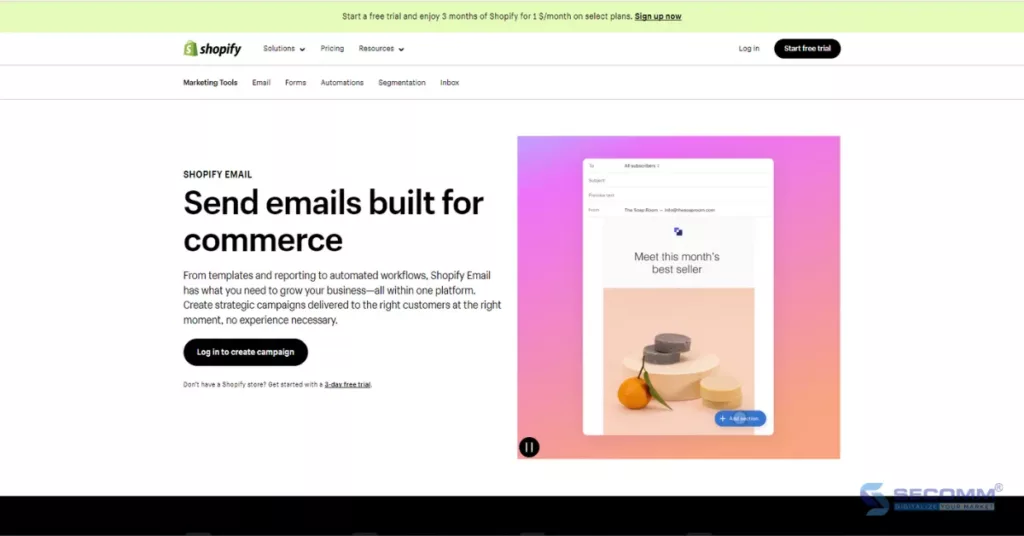
Meanwhile, for Email Marketing on BigCommerce, you need to integrate with third-party service providers like Klaviyo, MailChimp, Omnisend, and others.
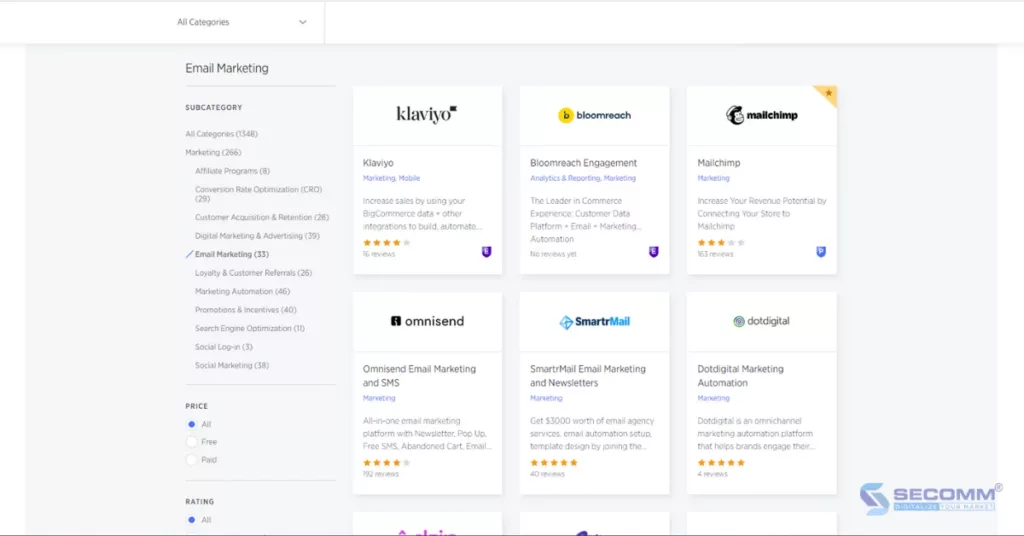
- Blogging
When you utilize blogging effectively, it can be one of the best sources to attract organic traffic. Both BigCommerce and Shopify come with built-in blogging features at a basic level, offering attractive templates that help you create SEO-optimized blog content to draw in potential customers. Moreover, you can seamlessly integrate with WordPress or other CMS platforms for more advanced blogging features
- Multilingual, multicurrency
Cross-border selling is currently a common goal for many eCommerce businesses. Fortunately, both Shopify and BigCommerce provide features and tools to help businesses expand into the global market
Shopify Markets, introduced in 2021, is a feature that allows you to select the specific markets you want to sell in. It’s an all-in-one feature that helps you centrally manage multiple local domains, languages, currencies, and payment gateways.
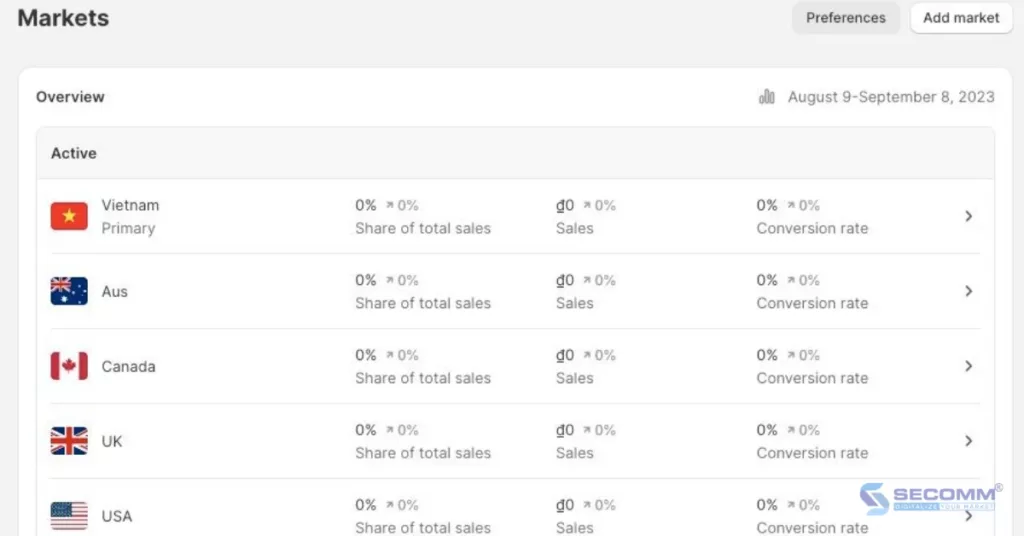
Plus, Shopify Markets utilizes the IP address of visitors outside the default ‘market’ that you previously defined to prompt them to select a location and the appropriate currency.
On the other hand, with BigCommerce, you can choose the currency for transactions on your eCommerce website instead of opting for a ‘market’ like Shopify. Additionally, the currency is automatically converted based on the customer’s IP address.
While language conversion capabilities are built into Shopify when the Shopify Markets feature is enabled, for BigCommerce websites, you’ll need to integrate with a third-party service to achieve the same, such as Weglot, which offers free conversion for 1 language and 2000 words. In contrast, Shopify provides free conversion for 20 languages across all pricing plans.
- Mobile app
While BigCommerce has only one app to help you manage sales, interact with customers, and access basic reports, Shopify you up to 3 apps to improve efficiency in eCommerce operations.
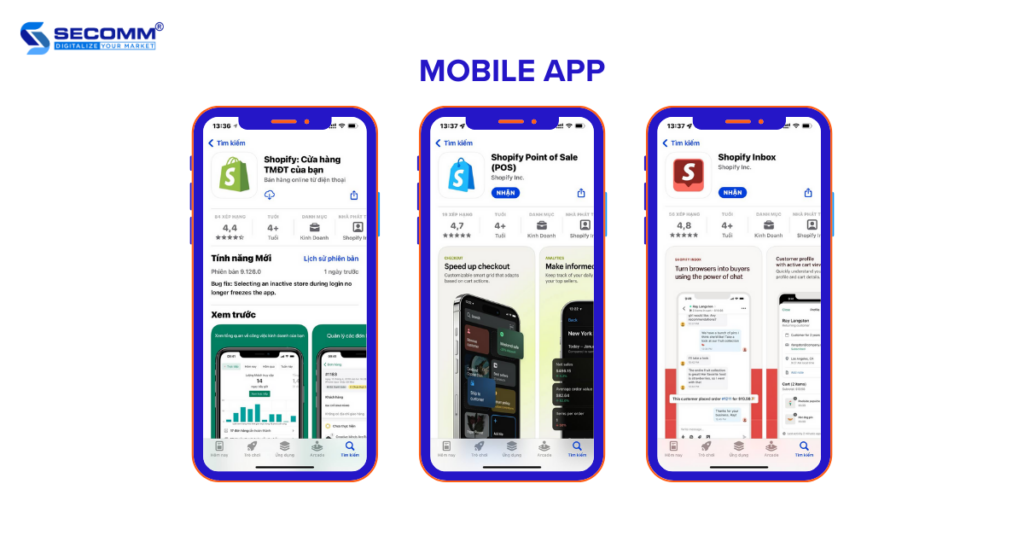
- Shopify: The main app for order and product management, along with viewing updated reports.
- Shopify POS: Manages online, offline, and omnichannel sales transactions.
- Shopify Inbox: Facilitates customer interaction, product sharing, and direct sales within the chat interface.
Themes & Apps
- Themes
Both BigCommerce and Shopify offer you a variety of free and paid themes. For BigCommerce, the platform provides 12 free themes, but in reality, there are around 5-6 distinct free themes as the layouts are quite similar. As for paid themes, BigCommerce has approximately 185 themes ranging from $150 to $400 per theme.
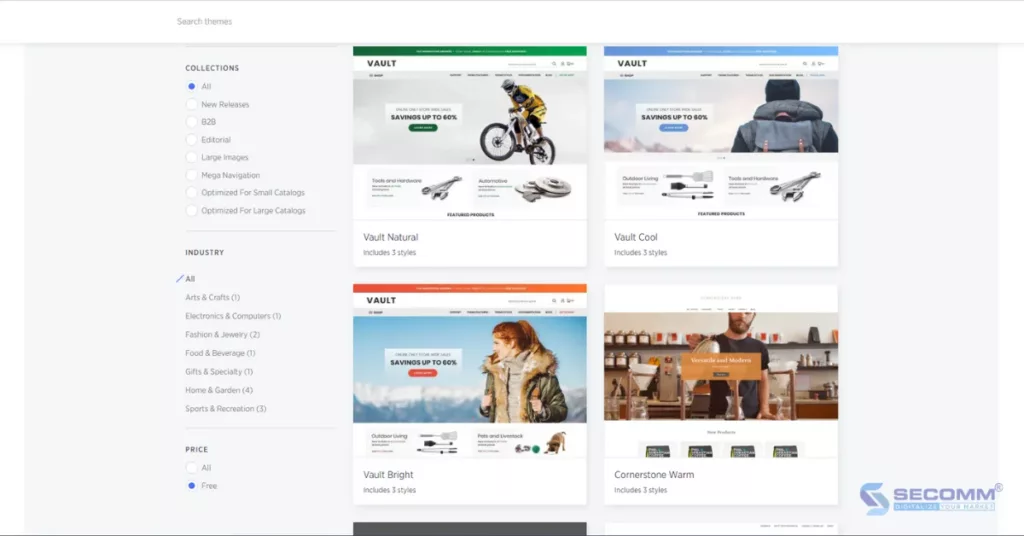
On Shopify, the platform offers 12 free themes and 141 paid themes with prices ranging from $170 to $380 per theme. Both Shopify and BigCommerce provide users with drag-and-drop theme editors to modify layouts, colors, fonts, and text sizes and add/remove elements and widgets.
However, Shopify’s themes, both free and paid, are widely favored for their modern and contemporary styles. Additionally, Shopify offers a diverse selection of fonts for you to choose from. In contrast, BigCommerce has around 8 font options.
- Apps
Alongside their built-in features, Shopify and BigCommerce both offer extensive app stores to help you optimize your eCommerce activities. Both app stores offer free versions of apps, but certain features may be limited. To access the full functionality, you’ll need to subscribe to the paid versions, which often involve monthly fees. The number of apps available on Shopify and BigCommerce differs significantly, with Shopify boasting over 6000 apps, while BigCommerce has over 1000.
Customer Support
In the process of deploying an eCommerce website, both BigCommerce and Shopify offer 24/7 support through hotlines, chat, and email. Plus, if you seek advice and support in addressing specialized issues related to technology, design, and marketing, BigCommerce provides Partner Directory services, while Shopify offers Shopify Experts.
Final Thoughts
Above are the comparisons between Shopify and BigCommerce. However, it’s challenging to determine which platform is the best in 2023 for developing an eCommerce website. The choice will depend on your specific needs and wants.
With years of experience advising and collaborating with numerous businesses both domestically and internationally on implementing eCommerce websites on both Shopify and BigCommerce, SECOMM has gathered valuable insights to help your business streamline your eCommerce development process, optimize your website performance, and swiftly generate conversions.
Contact SECOMM today or call directly at the hotline 028 7108 9908 for free and detailed consultations.
 2
2

 7,657
7,657

 0
0

 1
1
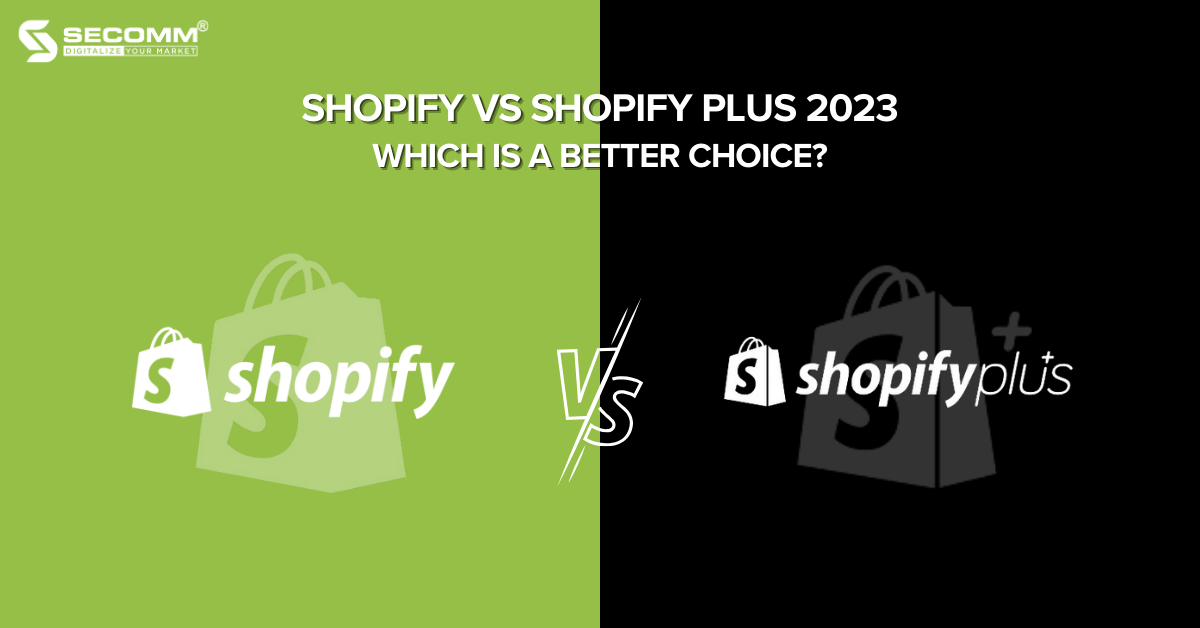
SHOPIFY VS SHOPIFY PLUS 2023: WHICH IS A BETTER CHOICE?
Shopify and Shopify Plus are two leading eCommerce platforms globally, used by millions of businesses to deploy eCommerce websites. The Shopify platform is designed for small and medium-sized enterprises, providing basic, user-friendly features for building and managing eCommerce websites. According to Builtwith, over 4 million active Shopify stores are currently worldwide.
On the other hand, Shopify Plus is specifically crafted for large-scale enterprises, offering advanced features, customization options, and flexible scalability. Builtwith statistics indicate that there are over 44 thousand active Shopify Plus websites globally.
What are the differences between Shopify and Shopify Plus? Which platform should you choose to build your eCommerce websites? This article will focus on clarifying the differences between Shopify and Shopify Plus in three aspects: cost, features, and support capabilities, to help you choose the most suitable platform for your needs and goals.
Shopify vs Shopify Plus: Pricing
The first distinction and crucial criterion to consider between Shopify and Shopify Plus are the license fees and transaction fees. Shopify and Shopify Plus offer different solution packages with varying pricing to suit businesses with different budgets and scales.
Shopify Pricing
Shopify offers three main pricing plans: Basic, Shopify, and Advanced, priced at $25, $65, and $399 per month, respectively. Also, Shopify has a special solution package called Shopify Starter at $5/month, enabling you to sell on social media and chat apps.
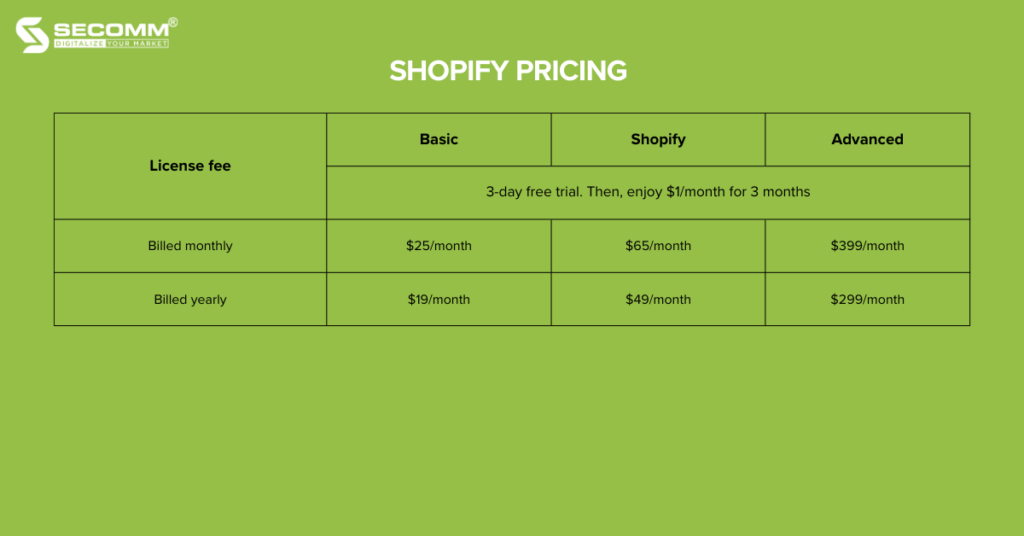
*Note: The mentioned fees apply to the Vietnamese market, and platform license fees may vary depending on the region or country.
Beyond the license fees, you also need to consider the transaction fee when using different payment methods. Shopify offers its payment method called Shopify Payments, allowing you to effortlessly accept all major payment methods on your eCommerce website.
If using Shopify Payments, you don’t have to pay any transaction fee to Shopify.
On the other hand, If you don’t use Shopify Payments and select one of many third-party payment service providers supported by Shopify, you’ll pay transaction fees of 2%, 1%, and 0,5% for the Basic, Shopify, and Advanced plans, respectively.
Shopify Plus Pricing
Since Shopify Plus is designed for large businesses, the pricing structure for the Shopify Plus package is variable and depends on the individual deployment requirements and revenue of each business. According to Shopify, the initial cost for using Shopify Plus is $2,000/month, with subsequent increases based on monthly revenue.
Specifically, when the revenue of a Shopify Plus store reaches $800,000/month, the platform will apply a charge of 0.25% of the monthly revenue. It’s worth noting that the fee will not exceed $40,000/month and $480,000/year.
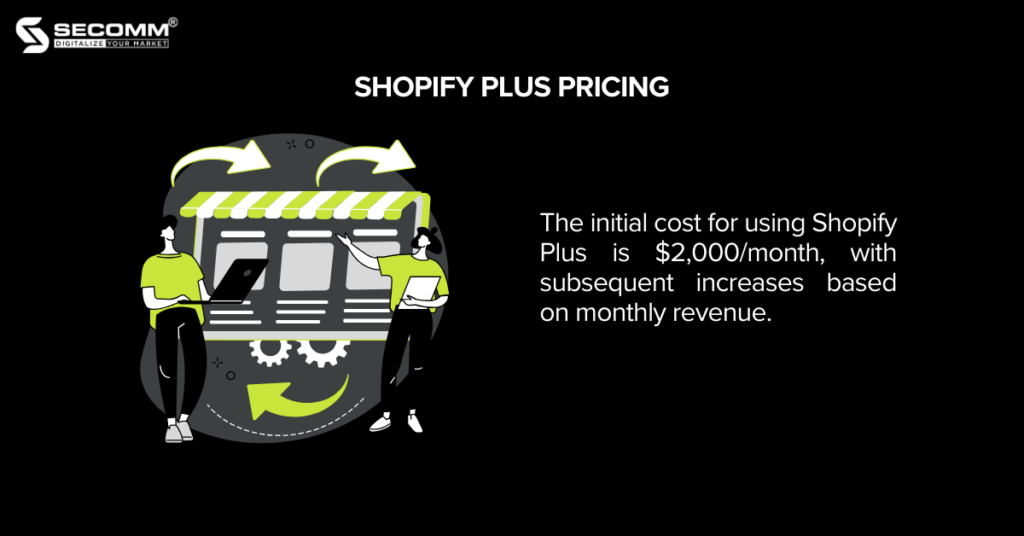
Similar to the Shopify pricing plans, Shopify Plus supports both Shopify Payments and third-party payment service providers. However, the transaction fees associated with Shopify Plus are lower compared to regular Shopify plans. If you don’t use Shopify Payments, you’ll incur a transaction fee of 0.15% on each transaction.
Shopify vs Shopify Plus: Feature
When it comes to features, Shopify Plus excels by providing a range of advanced features for you to customize your eCommerce websites, aiming to deliver a unique experience for customers.
Related Reading: 6 key Shopify Plus features
Custom checkout page & cart
Most Shopify businesses typically utilize either the available free or paid themes on Shopify, encountering several limitations when customizing the checkout or cart pages. However, with the implementation of Shopify Plus, you can leverage Shopify Scripts to tailor small code segments, enabling the creation of a personalized shopping experience for customers at the cart and checkout pages.
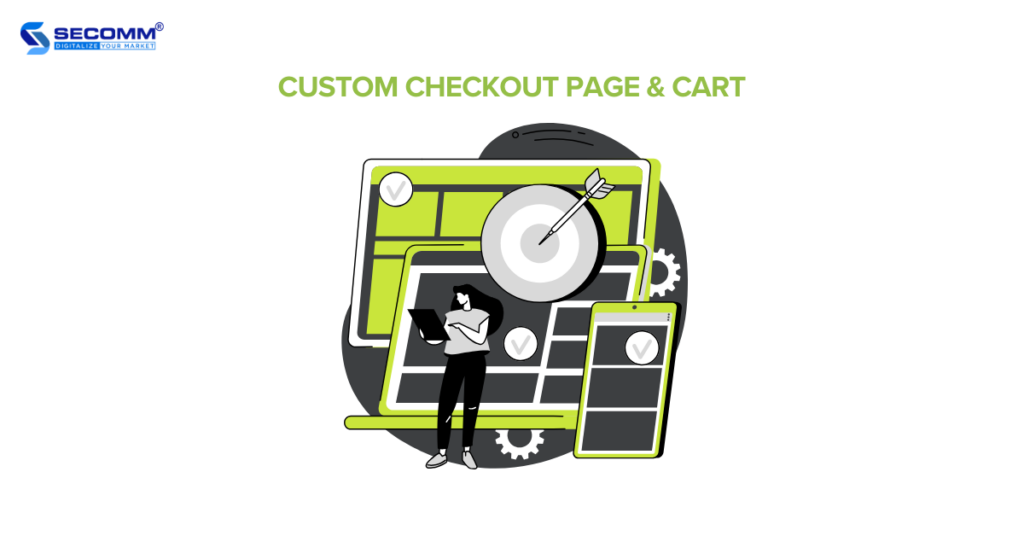
Automation
The Shopify pricing plans provide a set of built features for businesses to automate eCommerce and marketing operations. On the other hand, with the deployment of Shopify Plus, businesses can utilize specialized tools to automate eCommerce processes, such as:
- Shopify Flow: The most advanced eCommerce automation tool recommended by Shopify for all businesses implementing Shopify Plus.
- LaunchPad: An automated scheduling tool for running promotional campaigns, flash sales, or launching events for new product releases.
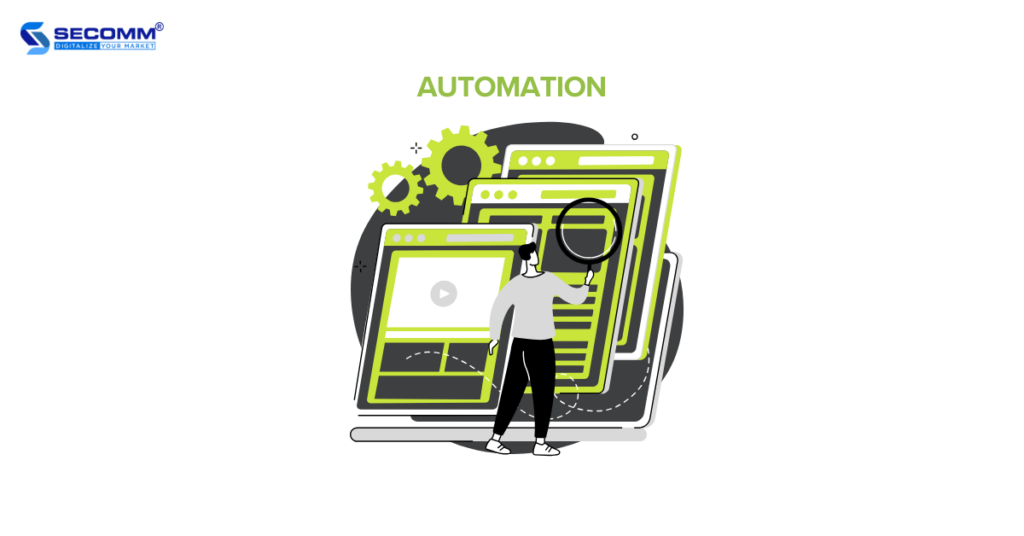
Shopify POS
For all Shopify businesses, the Shopify POS feature is included in the standard service package known as POS Lite, but it has limitations in terms of features and POS usage locations. To unlock more advanced features and extend the POS capabilities, Shopify businesses need to upgrade to the POS Pro package, priced at $89 per month per location.
On the other hand, Shopify Plus businesses enjoy free access to POS Pro for their initial 20 locations. This implies that businesses implementing Shopify Plus can leverage advanced POS features, including BOPIS deployment, unlimited user accounts, omnichannel selling, inventory management, and more.
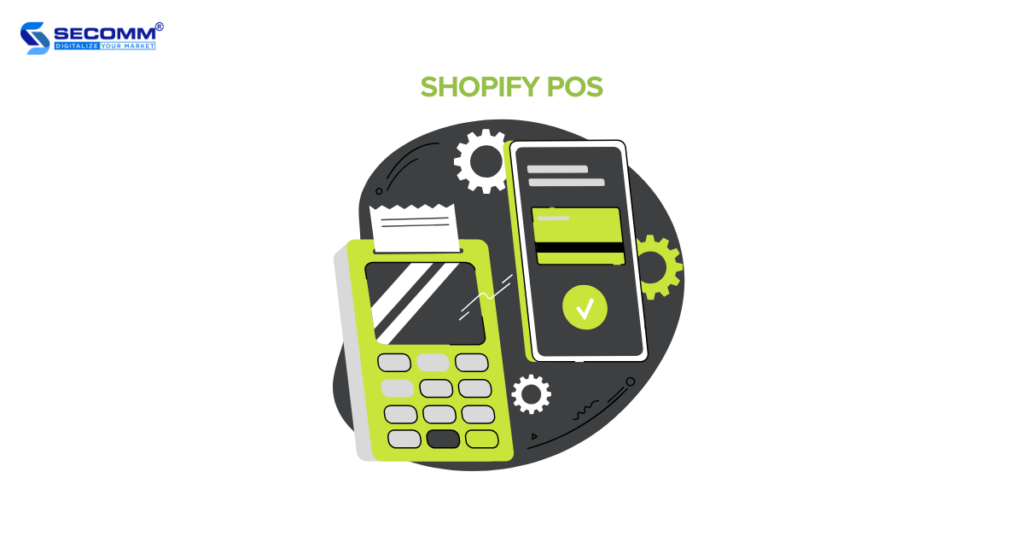
B2B Feature
This feature is specifically designed for Shopify Plus businesses, facilitating B2B transactions directly through the eCommerce website without reliance on third-party apps or alternative solutions. You can set up catalogs, payment terms, and company profiles, and customize prices specifically for B2B customers.
This provides the flexibility to develop a website that serves B2B and B2C customers or craft a specialized platform dedicated to B2B clients.
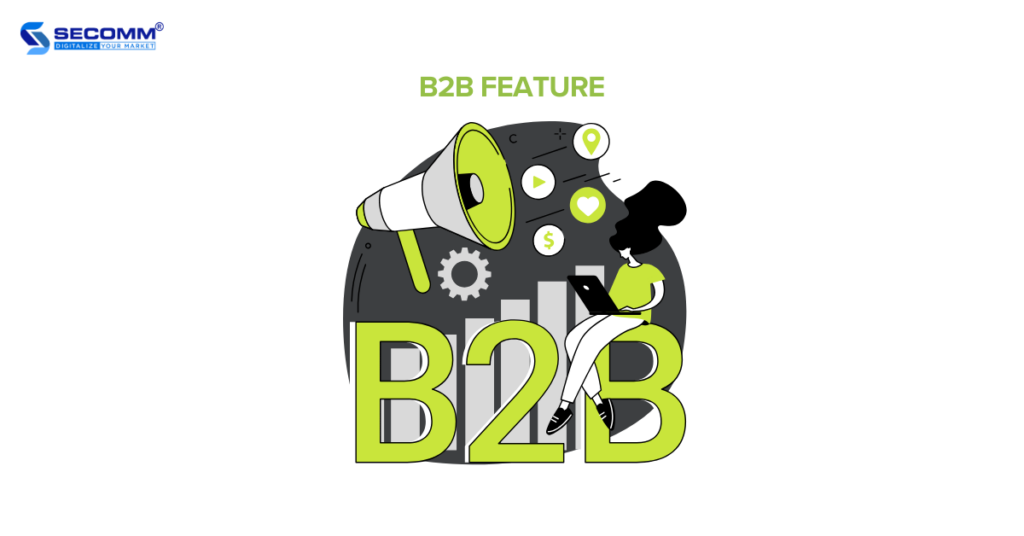
Wholesale feature
The wholesale feature is specifically designed for Shopify Plus merchants. This feature allows you to customize the wholesale website interface differently from the regular eCommerce site, adjust pricing, and establish a distinct ordering process specifically for wholesale customers. You can also choose to showcase products intended for wholesale transactions exclusively on the Shopify Plus wholesale website.
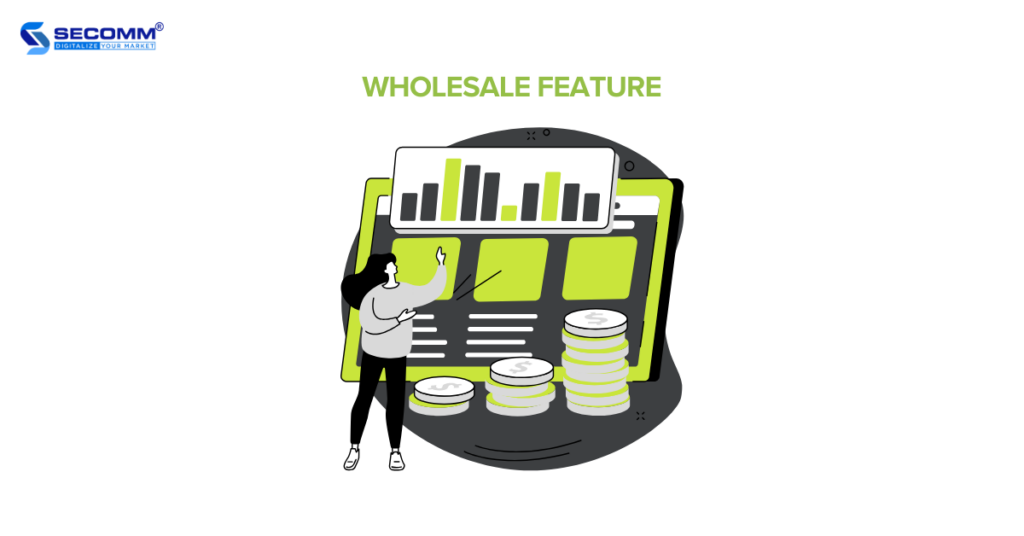
Shopify vs Shopify Plus: Resources
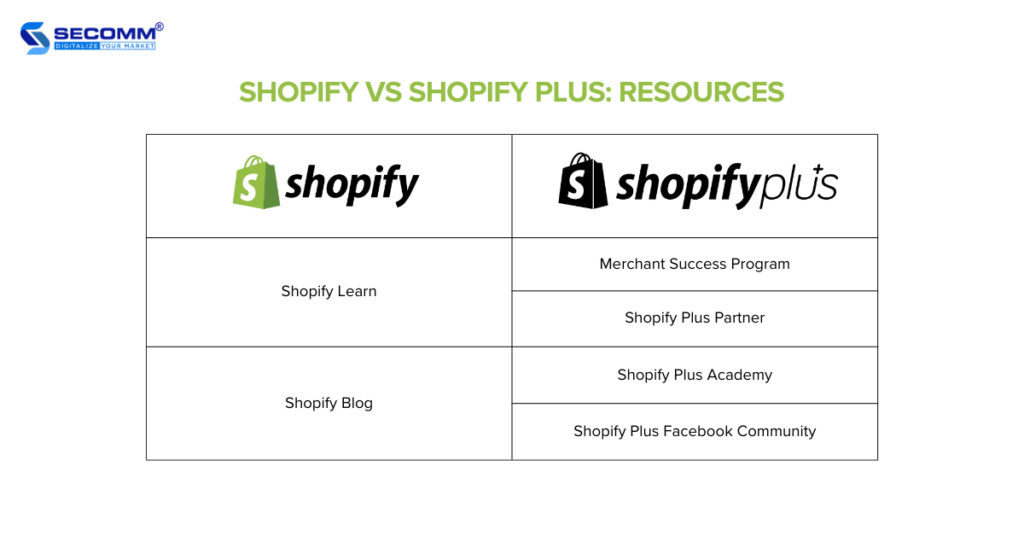
Shopify
For Shopify businesses, they can access support 24/7 throughout the entire process of building and advancing their eCommerce website through channels like the hotline, email, or chatbox. Additionally, Shopify provides resources for businesses to enhance their eCommerce operations, including:
- Shopify Learn: Numerous free online courses featuring leading experts in eCommerce, including Daymond John, a renowned figure from the popular TV show Shark Tank. The courses cover topics such as goal setting, effective marketing, sales strategies, and efficient customer care.
- Shopify Blog: The blog articles on Shopify delve into the latest trends in eCommerce marketing. These regularly updated posts, enriched by the unique perspectives of top experts, can prove valuable for startups or businesses venturing into the realm of eCommerce.
Shopify Plus
In addition to the support services available through the hotline, email, or chatbox, businesses utilizing Shopify Plus enjoy enhanced access to educational resources and support:
- Merchant Success Program: This program connects businesses with Shopify’s specialized team, offering assistance throughout the implementation of their eCommerce website, covering aspects such as customization and integration.
- Shopify Plus Partner: A collaborative platform for developers, solution providers, and technology experts, facilitating the deployment of eCommerce solutions specifically tailored for Shopify Plus.
- Shopify Plus Academy: Offering a variety of courses and webinars, this resource helps businesses optimize the development of their Shopify Plus website.
- Shopify Plus Facebook Community: A dedicated space for Shopify Plus businesses to connect, share practical insights, discuss business solutions, and explore potential collaborations.
Shopify vs Shopify Plus: Which version is right for you?
Here is an overview of the significant differences between Shopify and Shopify Plus platforms. The decision on which platform is most suitable depends on each business’s scale and deployment requirements.
For startups or small to medium-sized enterprises with minimal customization requirements and a desire for quick product launches, regular Shopify solutions may be more suitable.
On the other hand, large-scale enterprises with high integration and customization needs should prioritize Shopify Plus.
With years of experience deploying Shopify Plus eCommerce websites for leading businesses such as Vinamilk and Suzuverse, SECOMM boasts a professional team with exceptional technical skills and in-depth knowledge of the Shopify Plus platform.
Contact SECOMM or call the hotline at 028 7108 9908 to deploy Shopify Plus today!
 2
2

 3,770
3,770

 0
0

 1
1
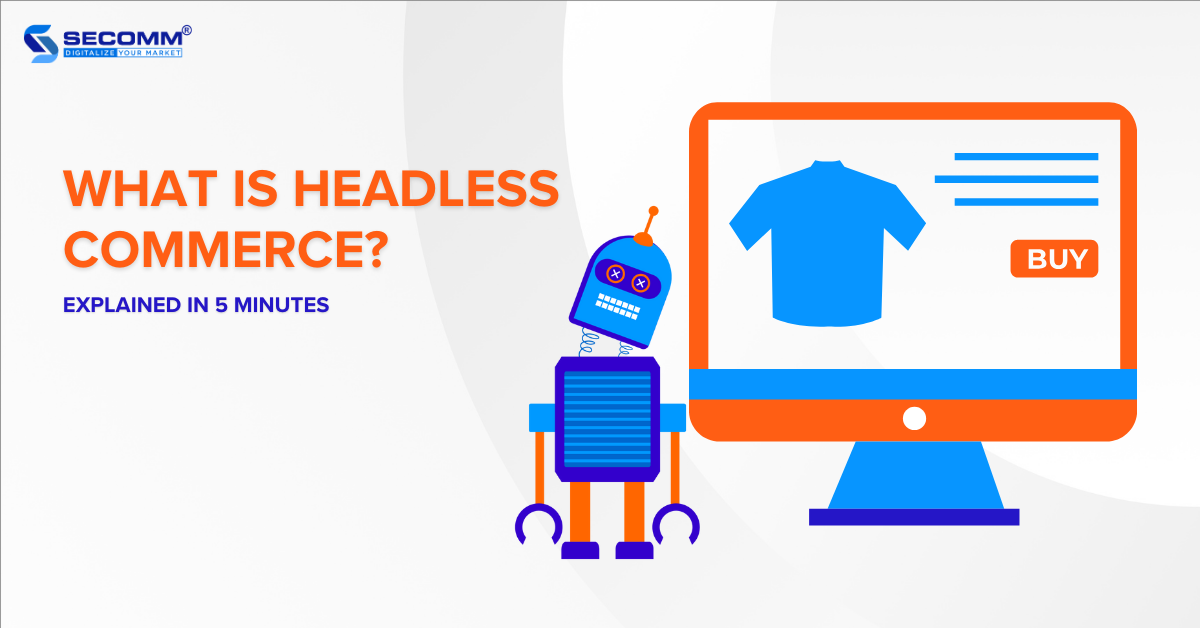
WHAT IS HEADLESS COMMERCE? EXPLAINED IN 5 MINUTES
When learning the significant changes in eCommerce over the past decade, one concept that cannot be ignored is Headless Commerce. It isn’t a mere trend; rather, it presents a revolutionary solution for how businesses implement eCommerce, aiming to provide flexibility and enhanced efficiency in delivering a seamless shopping experience for customers.
The following statistics contribute to proving that Headless Commerce is one of the fastest-growing trends in eCommerce:
- Headless Commerce deployment has increased by 50% in the past two years.
- By 2025, 35% of businesses plan to transition from the Traditional Commerce model to Headless Commerce.
- 60% of top retailers in North America are predicted to implement Headless by 2025.
- Headless Commerce platforms have seen a 40% increase in usage during the Covid period.
- Businesses implementing Headless report a 20% reduction in website loading time and an average revenue increase of 24%.
So, what is Headless Commerce, and why is it considered a modern and flexible approach to eCommerce deployment? Let’s explore this in the following article.
What is Headless Commerce?
Headless Commerce is an eCommerce architecture that separates the user interface (Frontend) from the data management and functionality (Backend) of an eCommerce website. This separation allows the frontend and backend to be built entirely independently and connected through eCommerce Application Programming Interfaces (APIs).
Going Headless allows you to use any technology or tool you prefer to design and customize the user interface without being dependent on the existing eCommerce platform. You can also update and modify the backend without affecting the frontend.
Learn more: Everything to know about eCommerce APIs
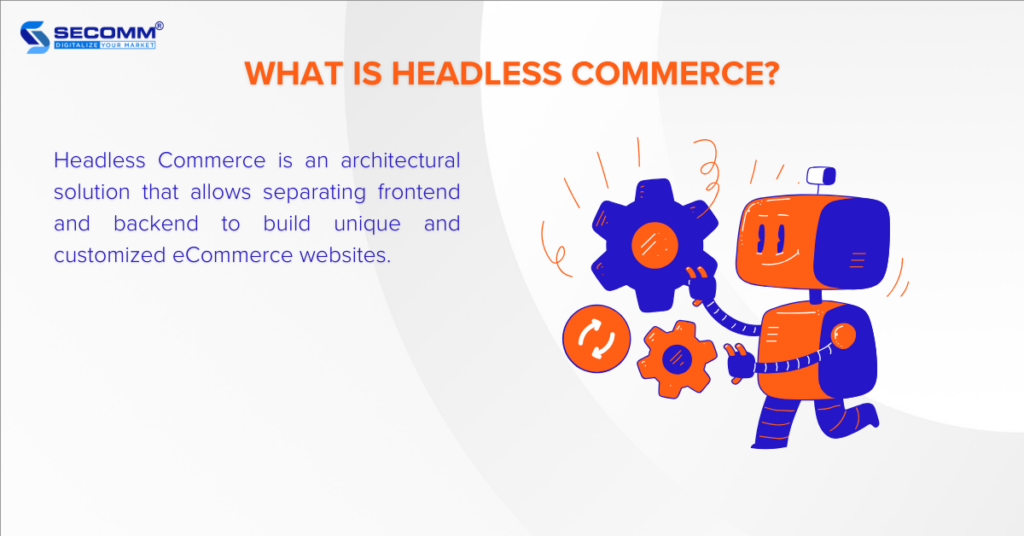
What is the difference between Headless Commerce and Monolithic Commerce?
Trước khi giải pháp Headless Commerce, hầu hết các website thương mại điện tử đều được xây dựng với kiến trúc Monolithic – tức là phần frontend và backend được liên kết chặt chẽ với nhau trong một hệ thống duy nhất. Đây là cách tiếp cận truyền thống và đơn giản, giúp doanh nghiệp dễ dàng xây dựng và quản lý website thương mại điện tử của mình.
However, Monolithic Commerce comes with several limitations, especially when you aim to develop and scale your eCommerce systems. Some common issues encountered when implementing Monolithic Commerce include:
- Limited Customizations: The tight integration between the frontend and backend in Monolithic Commerce imposes constraints when you want to redesign or modify features on your website. So, you have to customize both parts which leads to compatibility and performance issues.
- Limited Scalability: When an eCommerce website experiences a significant increase in the number of products, transactions, and traffic, you need to upgrade and expand the system to meet the growth requirements. The Monolithic architecture makes this process difficult and expensive, as you are required to update the entire system, potentially resulting in a temporary suspension of eCommerce website operations
- Lack of innovation and competition: In the digital age, you should update your eCommerce websites with new technological trends to innovate and enhance, aiming to attract and retain customers while gaining a competitive edge. However, the Monolithic Commerce model hinders this process, as any minor change can affect the entire system, potentially causing unintended errors or issues and requiring a slow and cautious approach.
In contrast to Monolithic Commerce, Headless architecture brings several benefits when developing eCommerce. Some of these include:
- Easy Customization: In the Headless Commerce model, you are free to use your preferred development technologies and tools to build a comprehensive eCommerce system from frontend to backend, aiming to deliver a unique and appealing shopping experience for customers. Plus, you can easily modify either the frontend or backend without affecting the other or the overall operation of the entire system.
- Easy Scalability: Headless Commerce provides you with a seamless way to scale your eCommerce website. You can effortlessly adjust or streamline integrations in the backend to meet demand or integrate with diverse sales channels, creating multiple frontends (websites, mobile apps, IoT) that operate seamlessly on a unified backend system through APIs. This flexibility allows you to reach a wider audience, boost conversion rates, and drive increased revenue.
- Boost Innovation & Competition: Going Headless allows you to swiftly and flexibly innovate and enhance your eCommerce websites. You can freely experiment with new features or integrate with diverse third-party systems without concerns about compatibility and performance issues. Moreover, you can integrate cutting-edge technologies like artificial intelligence (AI), machine learning (ML), and virtual reality (AR/VR) to deliver an optimized experience for customers.
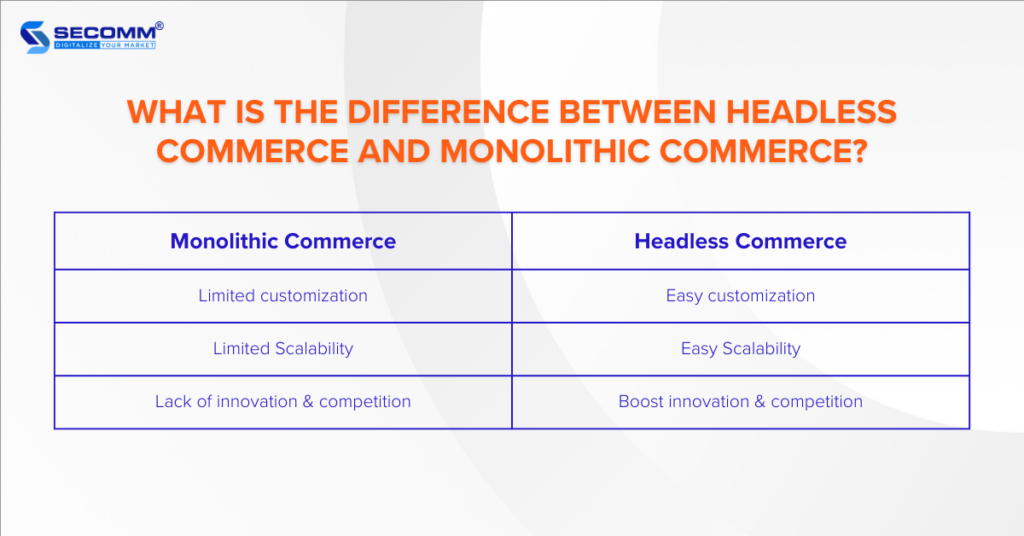
Top 5 Benefits of Headless Commerce
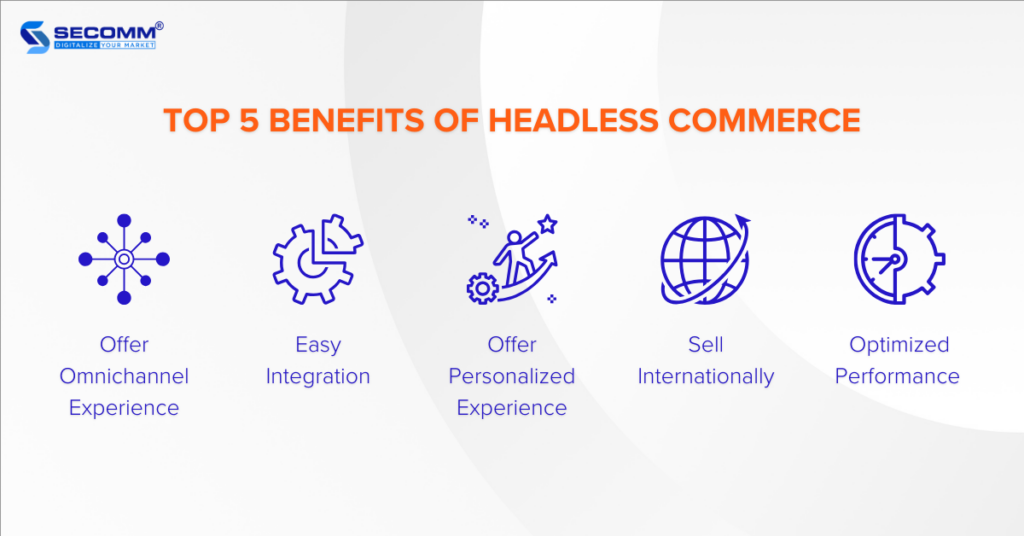
Offer Omnichannel Experience
The Headless Commerce model allows you to customize and create a unique user experience across various channels (website, mobile app, IoT). This not only avoids impacting the backend system but also helps you reach more potential customers and boost conversion capabilities.
Easy Integration
You can effortlessly integrate and merge various third-party systems (CRM, CMS, ERP, DXP) into the backend using APIs. This integration enhances the efficiency of managing and executing eCommerce activities, enabling you to leverage the superior capabilities of multiple services without concerns about website compatibility or performance issues.
Offer Personalized Experience
Through seamless integration with various systems, you can collect and consolidate customer data from various sources such as CRM, advertising campaigns, or data from previous shopping experiences.
Going Headless, you can create a customized interface based on customer data and personal information, displaying unique content, products, and messages for each customer based on their preferences, shopping behavior, and transaction history.
Sell Internationally
Deploying Headless Commerce enables you to expand your operations into international markets by adapting their activities to effectively cater to diverse markets. Specifically, you can customize the user interface, manage content, and offer distinct views for each customer segment in various markets.
Moreover, you can seamlessly integrate local options for payment, delivery, language, and currency to enhance the local customer experience.
Optimized Performance
In the Headless architecture, the frontend and backend operate independently through APIs, allowing businesses to optimize the performance of both parts. For example, you can enhance the navigation and page loading speed of frontends (website, mobile app, IoT) without heavily relying on the backend’s performance.
Similarly, you can optimize the backend to efficiently handle product requests, transactions, or inventory without impacting the page loading speed of the frontends
Does Headless Commerce suit all types of businesses?
Headless Commerce is a highly innovative eCommerce solution. However, that doesn’t mean this solution is suitable for every business. Therefore, before deciding to implement Headless for an eCommerce website, you need to consider the following factors:
- Business objectives: You need to clearly define your business objectives and determine whether Headless Commerce can help achieve those goals. If the objective is to establish a straightforward and efficient eCommerce website, the Monolithic architecture might be sufficient and a more fitting choice. However, if the goal involves delivering customers a distinctive and seamless shopping experience across diverse sales channels, going Headless is recommended..
- Budget & Resources: You should carefully assess your budget and resources when implementing Headless Commerce. Since deploying Headless requires utilizing eCommerce APIs to connect the frontend and backend, you will need an experienced and highly skilled technical team to design, develop, and maintain these APIs, as well as to handle complex customizations. You also need to allocate funds for API services, hosting, security, and the integrations in use. Without sufficient budget and resources, businesses may face difficulties and risks of failure when implementing this model.
- Deployment & Golive: The Headless architecture is quite complex, so it will take a considerable amount of time to build, customize, and perfect an eCommerce website, potentially extending the planned go-live time. To mitigate this risk, you should schedule a detailed deployment timeline for each task that needs to be completed. Plus, you need to regularly monitor and update the APIs, frontend, and backend to ensure the system operates smoothly. Therefore, if you require a quick website go-live and have minimal need for extensive system adjustments, it may not be necessary to implement Headless Commerce at this time.
Ready to go Headless?
Over time, Headless Commerce has played a crucial role in reshaping how businesses implement eCommerce. This model provides you with many benefits in terms of customization, scalability, and delivering a multi-channel experience for customers. However, before deciding to deploy Headless, you’ll need to consider issues related to business goals, budget and resources, development needs, and the go-live timeline.
When ready to implement Headless, you’ll choose top platforms supporting Headless Commerce. One of these platforms is Shopify, a renowned SaaS platform that has introduced several solutions for businesses to deploy Headless.
- Shopify Hydrogen + Oxygen: This superior solution includes the Hydrogen framework based on React and the Oxygen hosting. It helps quickly and efficiently deploy a Headless eCommerce website.
- Commerce Components: This groundbreaking tech stack is developed specifically for large enterprises deploying Headless Commerce or Composable Commerce. This solution allows you to combine independent components to customize and enhance the eCommerce experience.
With extensive technical expertise and high specialization in the eCommerce domain, SECOMM has successfully consulted and implemented Headless Commerce using one of Shopify’s three solutions for leading enterprises such as Vinamilk, Suzuverse, and more.
Contact SECOMM or call directly at the hotline (02871089908) to explore how we can support businesses in maximizing the potential of Headless Commerce and enhancing competitiveness in the eCommerce market.
 2
2

 4,940
4,940

 0
0

 1
1
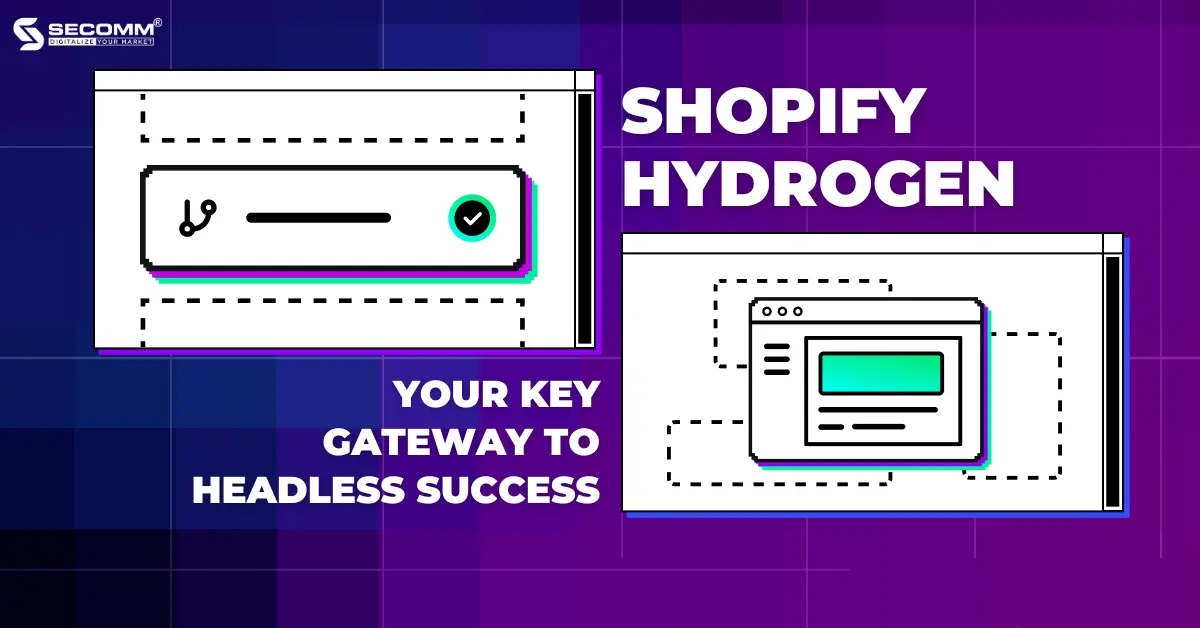
SHOPIFY HYDROGEN: YOUR KEY GATEWAY TO HEADLESS SUCCESS
Today’s eCommerce consumers are no longer confined to a single channel or device for their shopping needs. They have a ton of options, including mobile apps and social media platforms. As a result, businesses are striving to establish a robust multi-channel presence to swiftly engage with their customers. One highly effective approach to achieving this goal is through the implementation of Headless Commerce.
In recent years, investors have shown a significant interest in Headless Commerce platforms and associated solutions, recognizing their pivotal role in shaping the future of online commerce.
Forbes reports that between 2020 and 2021 alone, more than $1.65 billion in funding was directed toward Headless technologies. In response to this evolving landscape, Shopify unveiled the Hydrogen solution in June 2021, designed to facilitate the development of headless Commerce storefronts.
The following article aims to provide a comprehensive understanding of Shopify Hydrogen, shedding light on both its pros and cons.
Overview
Shopify offers businesses the Hydrogen framework solution, originally based on React but now being developed with Remix, in conjunction with the global hosting solution known as Oxygen.
What is Shopify Hydrogen?
In the past, Shopify website developers utilized the platform’s templating language known as Liquid, which often faced performance limitations. Consequently, to ensure top-notch website performance for headless commerce, Shopify businesses require a specialized solution.
Typically, businesses implementing headless projects on Shopify Plus opt for the React framework over Liquid due to its superior technical aspects. Moreover, headless stores on Shopify Plus offer heightened flexibility, customization, and scalability compared to standard headless stores on Shopify.
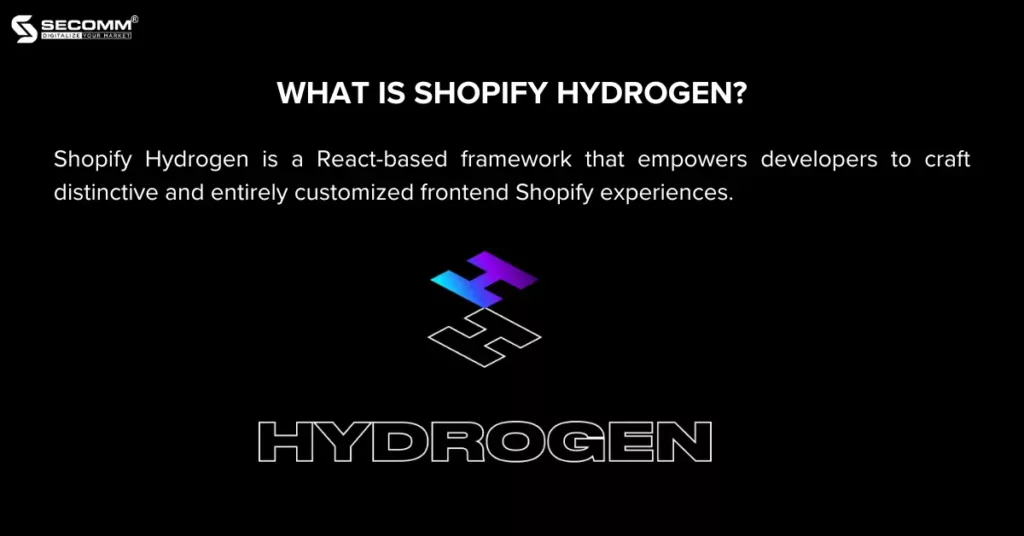
Therefore, Shopify has introduced a solution that allows both Shopify Plus and standard Shopify businesses to build and advance the most optimized headless eCommerce websites possible. This led to the creation of the Hydrogen framework solution and Oxygen hosting.
Shopify Hydrogen is a React-based framework that empowers developers to craft distinctive and entirely customized frontend Shopify experiences. This framework encompasses all the essential structures, components, and pre-built tools necessary for developers to swiftly create headless stores and deliver personalized user experiences.
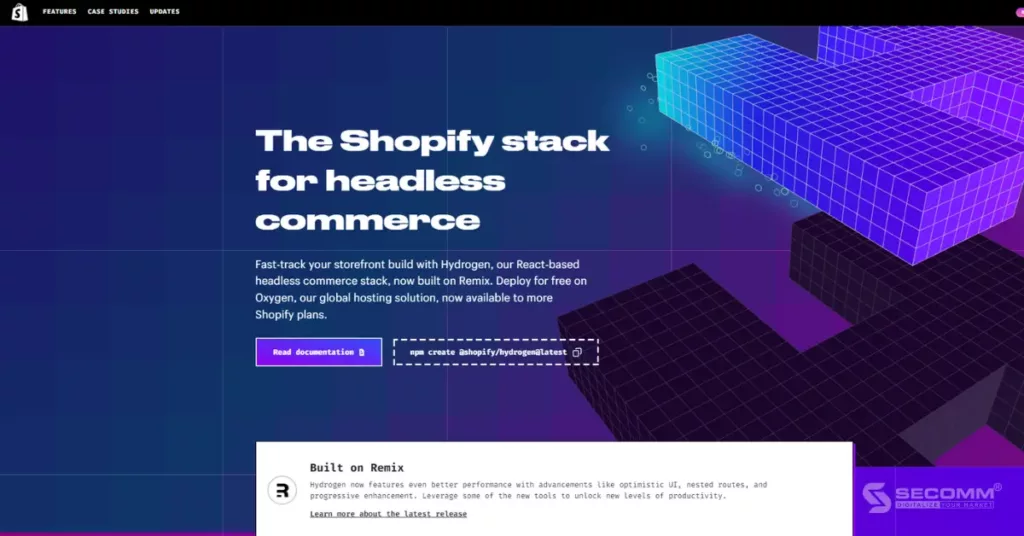
What is Shopify Oxygen?
Shopify Oxygen is a worldwide hosting solution designed to store custom content, like Hydrogen stores, directly within the Shopify platform. Previously, Shopify businesses seeking to develop Headless Commerce had to depend on third-party hosting providers (e.g., Netlify).
In contrast, Oxygen is supported by Shopify’s extensive global infrastructure, featuring over 100 server locations worldwide. Thanks to this, Hydrogen stores can seamlessly and directly integrate with Oxygen hosting through the Storefront API, eliminating the need for reliance on third-party providers.
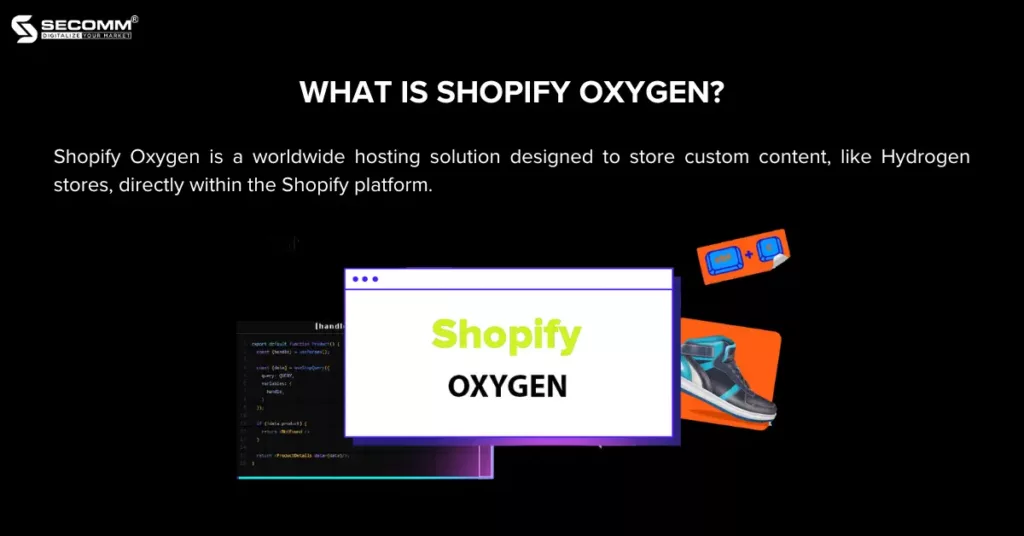
Remix – The New Highlight of Shopify Hydrogen
In the first quarter of 2023, Shopify unveiled Hydrogen v2, highlighting the web development tool called Remix. This tool has earned recognition from developers as one of the top React frameworks, trailing only behind Next.js. Consequently, Shopify acquired Remix and designated it as the cornerstone of the Shopify Hydrogen solution.

The reason for this lies in the fact that Hydrogen v1 faced performance-related criticisms after some time in operation. The acquisition of Remix is a part of Shopify’s efforts to rectify these issues, leading to the emergence of Hydrogen v2.
While developers tend to favor Next.js over Remix due to its open structure, allowing for greater customization and offering a more favorable developer experience, it doesn’t guarantee output quality and website performance.
Conversely, Remix employs a closed structure that mandates developers to adhere to the framework’s template. This approach closely aligns with Shopify’s SaaS model, providing a web development framework and enforcing developers to follow specific principles during deployment.
This adherence ensures website performance and significantly enhances conversion rates. Therefore, Remix is the ideal solution chosen by Shopify to address the existing performance gaps in Hydrogen stores and enhance the eCommerce experience for customers.
Pros of Shopify Hydrogen
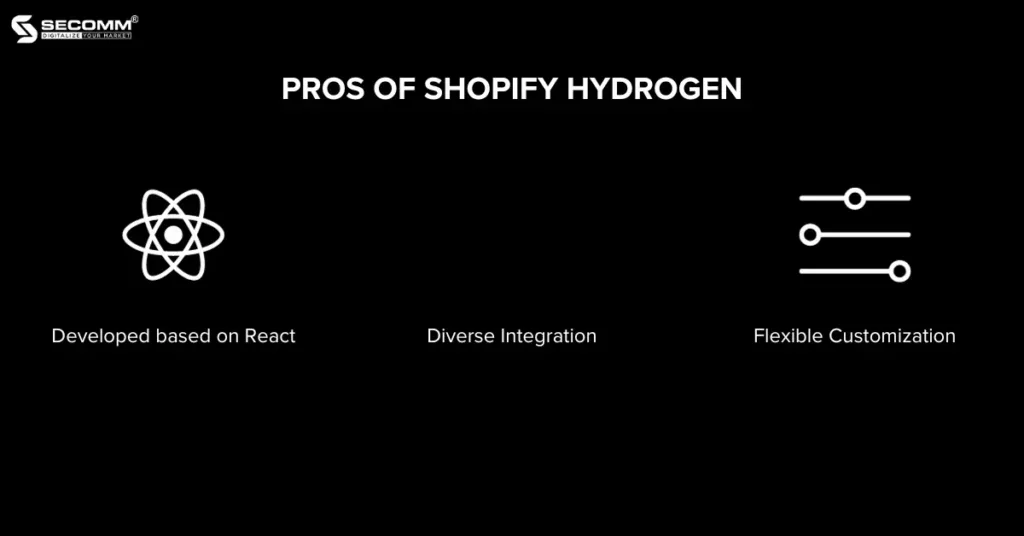
Developed based on React
Hydrogen represents Shopify’s investment in the development of Headless eCommerce. Therefore, it’s fair to classify any Shopify store using the Hydrogen framework and Oxygen hosting as a Headless Shopify store.
The Headless architecture has consistently garnered praise from industry experts, who anticipate its continuous evolution. Shopify’s decision to incorporate React – the JavaScript library for frontend interface development – as the cornerstone of the Hydrogen solution underscores this platform’s forward-looking perspective on the future of eCommerce, firmly rooted in the Headless trend.
Diverse Integration
The launch of Shopify Hydrogen aims to assist businesses in building professional Headless eCommerce websites and providing customers with a seamless multi-channel experience.
Therefore, Shopify extends the capability to seamlessly integrate Hydrogen stores with various third-party applications and platforms like Klaviyo, Gorgias, and Rebuy (to enhance the customer experience), as well as Sanity, Contentful, and Builder.io (for Headless CMS implementation).
Learn more about Headless CMS:
- What is Headless CMS?
- 10 Enterprise Headless CMS Platforms (Pt.1)
- 10 Enterprise Headless CMS Platforms (Pt.2)
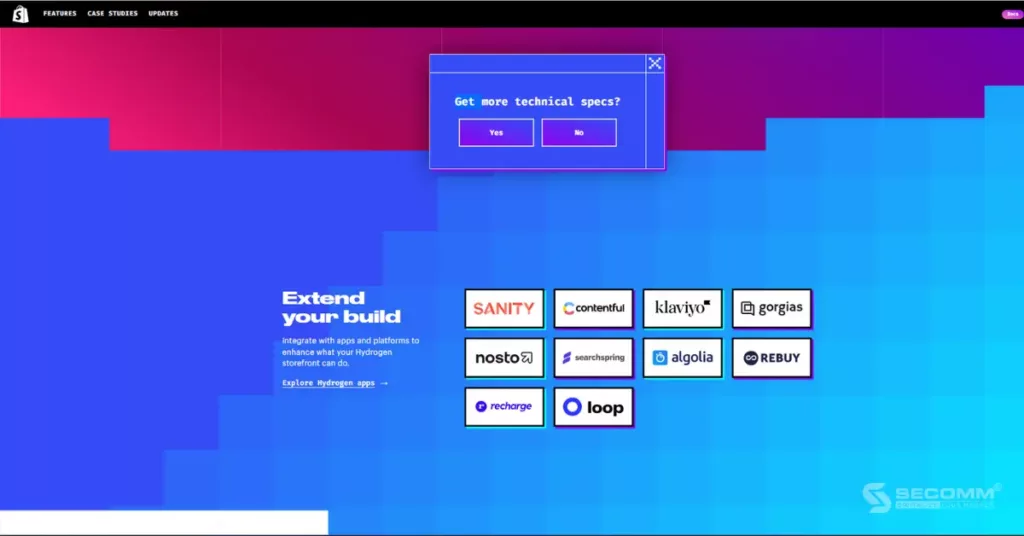
Flexible Customization
Numerous enterprises choose to implement Headless eCommerce because it grants them full control over the development of the frontend interface, free from the limitations of specific platforms. Shopify Hydrogen also empowers businesses to construct entirely personalized headless website interfaces and integrate essential features for expansion.
Cons of Shopify Hydrogen
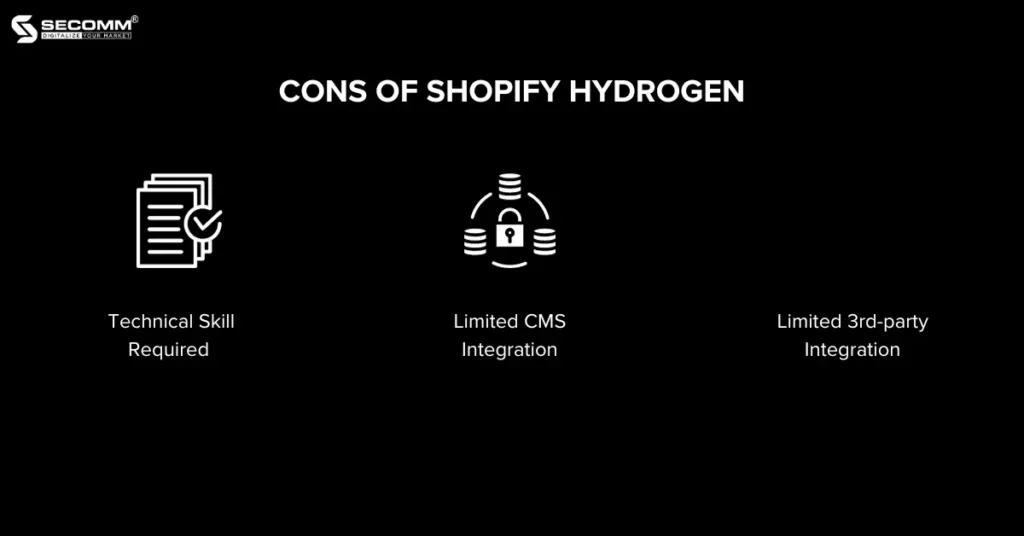
Technical Skill Required
Hydrogen solution empowers businesses to leverage the potential of Headless eCommerce, but it’s predominantly a technically-driven endeavor without a user-friendly drag-and-drop interface for non-technical users to easily access and modify.
Hence, the development process necessitates the engagement of highly proficient developers with programming expertise and a specific comprehension of Hydrogen and Oxygen. In this scenario, businesses have two choices: establish an in-house team of developers or partner with an external specialized entity for swift deployment.
Limited CMS Integration.
Because it relies on the React framework, Hydrogen can assist developers in creating custom frontends, but the backend CMS functionality must be connected to enable the headless eCommerce website’s operation.
However, as of now, Hydrogen is limited to integrating with specific CMS platforms like Sanity, Contentful, and Builder.io, leaving businesses responsible for connecting with others independently.
Limited 3rd-party Integration
Much like CMS platforms, Hydrogen supports businesses in integrating with third-party provider applications, but it has rather limited options. Currently, there are only 13 available applications that businesses can incorporate into their Hydrogen store.
In the many years of implementing Headless eCommerce for numerous clients across various countries, SECOMM has noticed an increasing demand for creating Headless websites using the Shopify platform. Now, businesses have a choice: they can either leverage Shopify’s tech stack (Hydrogen and Oxygen) or build a custom stack tailored to their unique requirements.
This further solidifies Shopify as one of the most flexible eCommerce platforms today, leading the way towards the next generation of eCommerce experiences.
Contact us or call SECOMM’s hotline (02871089908) for a free consultation.
 2
2

 10,842
10,842

 0
0

 1
1
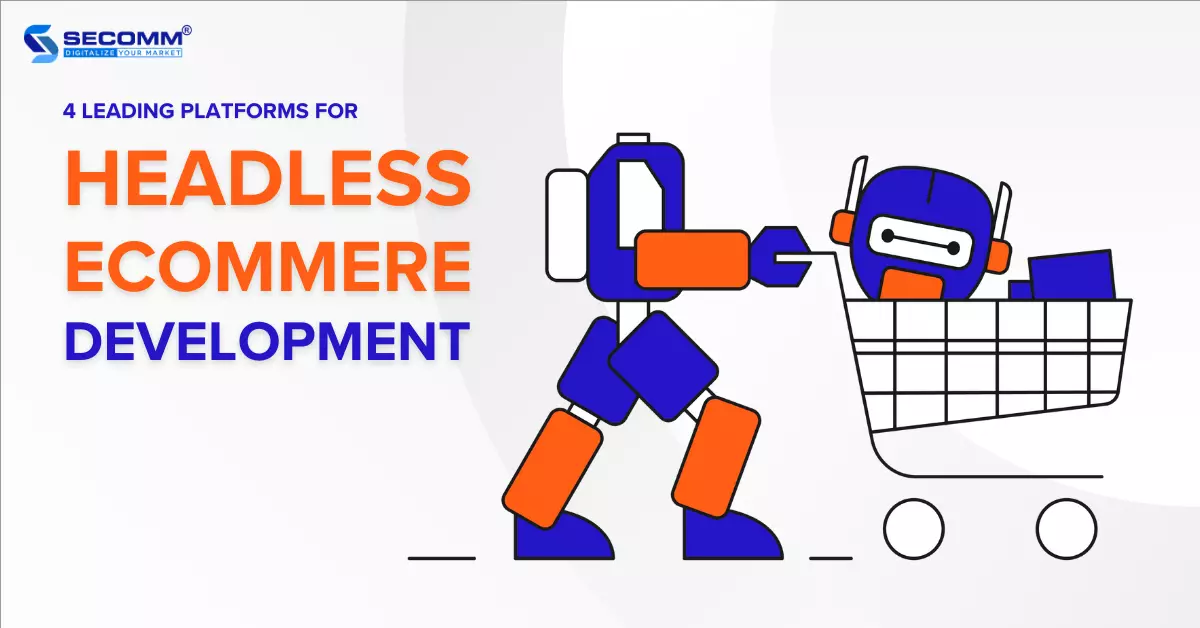
4 LEADING PLATFORMS FOR HEADLESS ECOMMERCE DEVELOPMENT
In Headless eCommerce architecture, the user interface (frontend) is separated from the business logic and database (backend), operating independently and communicating with each other through Application Programming Interfaces (APIs). The backend of the eCommerce system can be linked to multiple frontends to deliver a seamless omnichannel experience for customers.
This omnichannel capability has driven many businesses to adopt Headless eCommerce to adapt to market trends and attract a large customer base across all potential channels.
However, from the planning stage to achieving the goals, it’s a long journey with several crucial steps that require dedicated efforts from businesses. Among them, selecting the right platform for Headless eCommerce development is essential. Currently, there are four prominent platforms in the market: Adobe Commerce, Shopify Plus, BigCommerce Enterprise, and Commercetools.
This article will focus on helping you as a business make the right decision by listing the selection criteria and pros and cons of each platform.
Things to Evaluate When Choosing Headless eCommerce Platform
Headless Architecture
You need to ensure that the chosen platform supports the Headless architecture, allowing the separation of the frontend user interface from the backend system. The separation provides omnichannel capabilities, enabling you to deliver seamless and consistent customer experiences across all channels (e.g., websites, mobile devices, IoT devices, etc.).
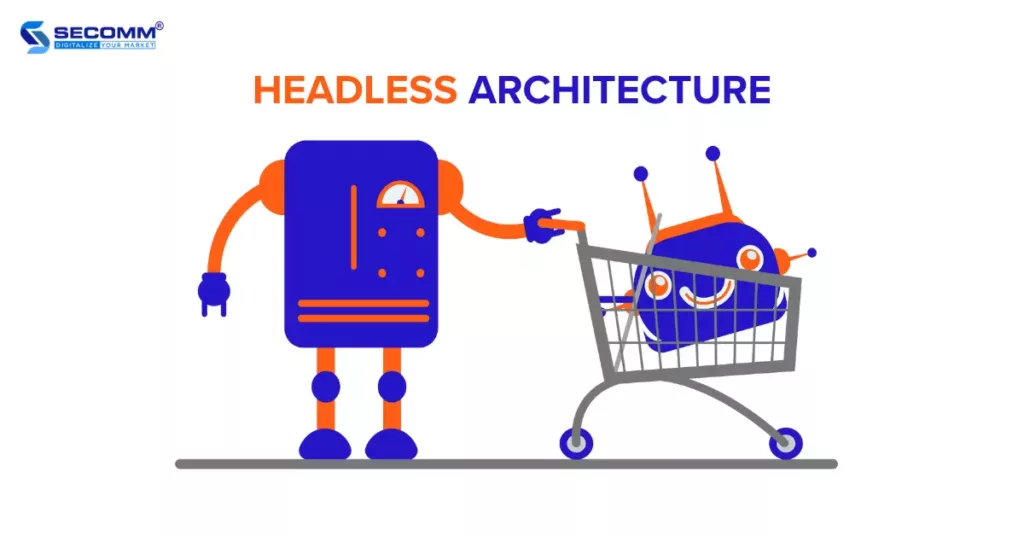
API Capabilities
APIs are crucial for integrating with various different user interfaces. Therefore, you should seek a platform with the ability to provide customizable APIs for seamless data exchange.
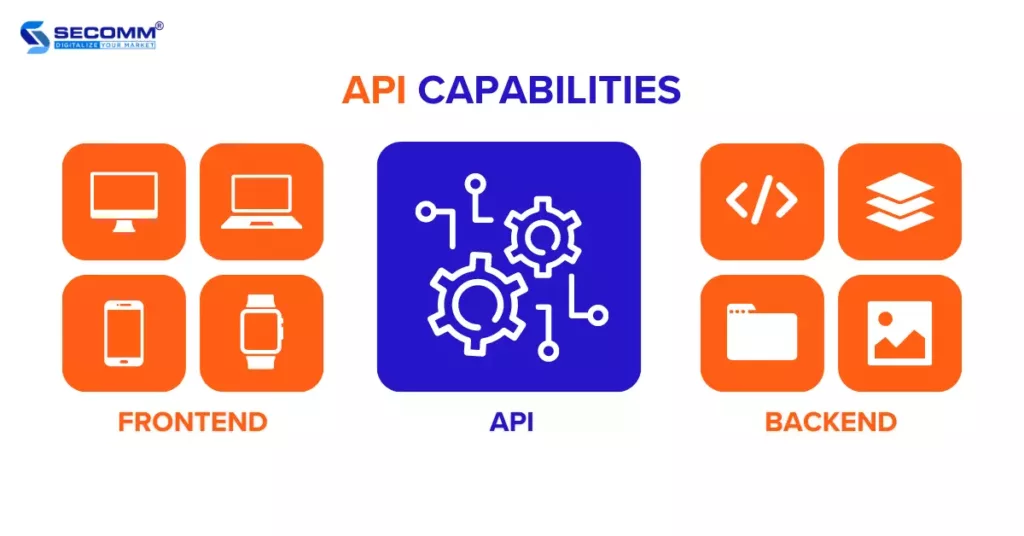
Performance & Scalability
Next, you need to consider the scalability of the platform, especially for large-scale enterprises with extensive and complex product catalogs or significant inventory management needs. A highly scalable platform can easily adjust its size based on requirements, handle high traffic, and ensure top-notch performance even during peak shopping seasons.
The ability to integrate with third-party solutions is also crucial when selecting a platform. Third-party tools serve specific business needs and drive eCommerce efficiency. You can prioritize platforms with strong integration capabilities and compatibility with a wide range of third-party tools and services, including payment gateways, shipping, content management systems (CMS), analytics tools, and more.
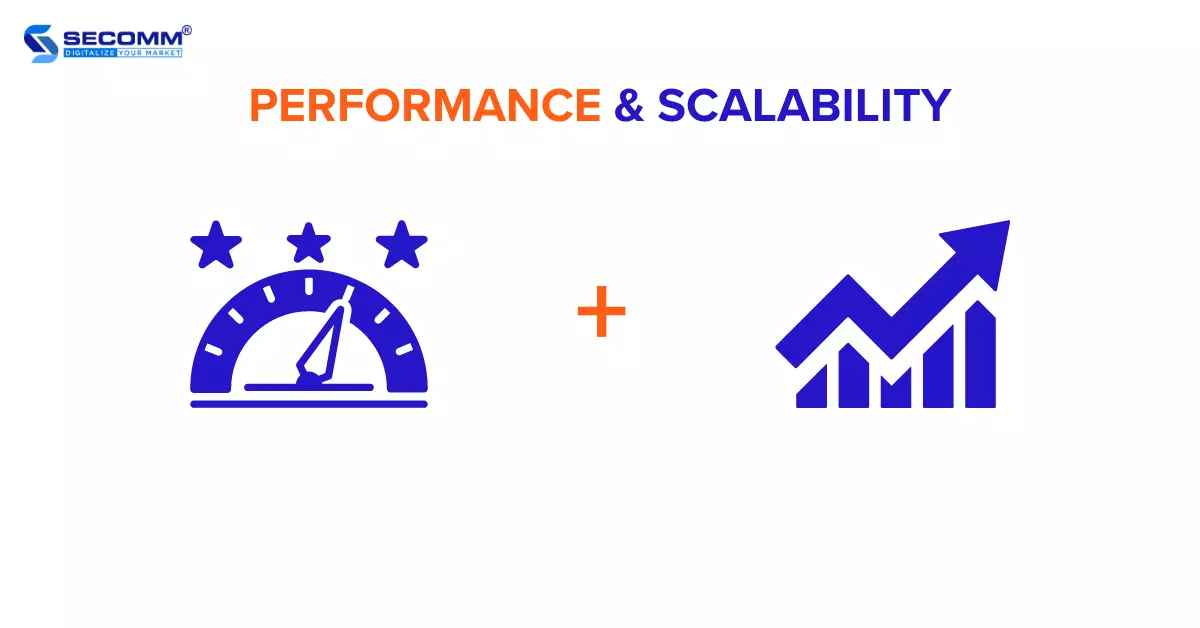
Flexibility & Customizability
Alongside performance and scalability, customization capability holds great significance for any business pursuing a platform to deploy Headless eCommerce. Evaluating the platform’s flexibility in design and user experience becomes crucial, ensuring effortless customization of frontend to meet specific business needs.
Security
Security is of utmost importance for any eCommerce platform. When choosing, you must ensure the platform adheres to standard security measures, such as secure payment PCI DSS, SSL encryption, and more.
Analytics & Reporting
Data analytics and reporting play a vital role in optimizing eCommerce operations and making informed decisions. Therefore, you should seek a platform with powerful analytics and reporting capabilities to provide comprehensive insights into customer behavior, sales effectiveness, conversion rates, and other essential metrics.
Customer Support
Opting for a Headless eCommerce development on a platform that provides valuable support resources like developer documentation, forums, and support communities, or responsive customer service directly from the platform, can bring significant benefits. You should ensure they have access to necessary assistance throughout the entire implementation process.
Total Cost of Ownership
Ultimately, the cost is a determining factor for any eCommerce business’s choice. These costs may encompass licensing fees, hosting, development, maintenance, or integration expenses with third-party services. You must assess these costs in relation to the platform’s capabilities, ensuring they align with your budget and long-term business goals.
By considering these criteria, you can select an appropriate Headless eCommerce platform that meets their business needs, provides a seamless customer experience, and supports their long-term growth objectives.
The Best 4 Platforms for Headless eCommerce Development
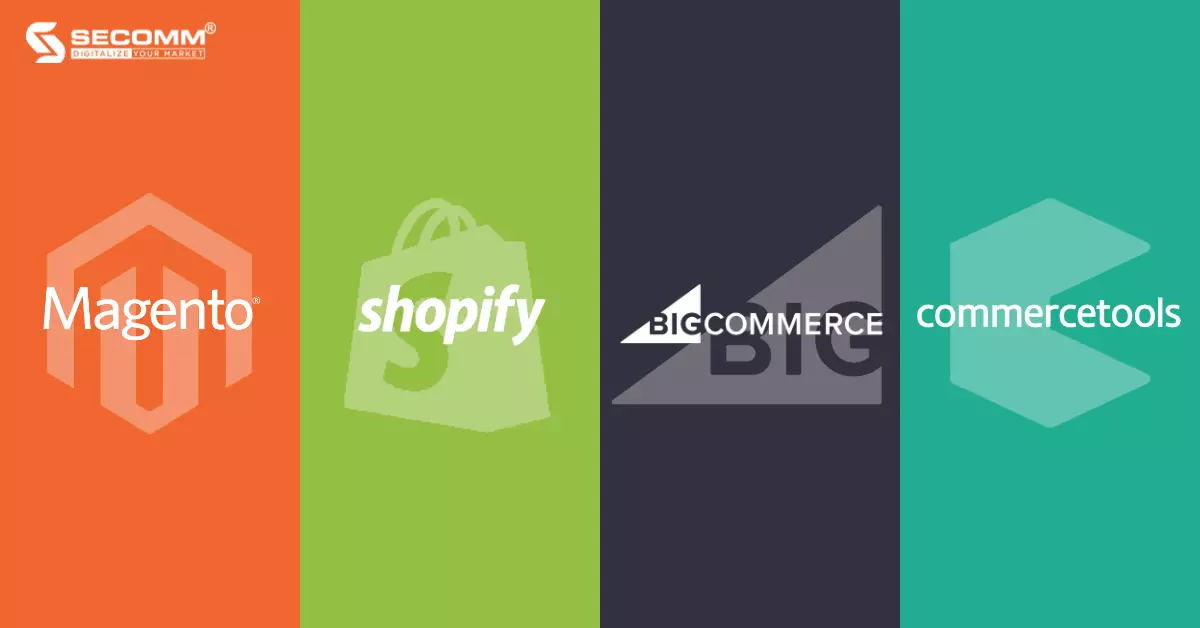
Magento (Adobe Commerce)
Magento is renowned as the world’s leading open-source eCommerce platform and currently ranks third in the market share among eCommerce platforms, following WooCommerce and Shopify
Magento has 2 editions:
- Magento Open Source: a free-to-use edition, but users still need to pay for hosting, domain, extensions, and development fees when hiring specialized Magento developers.
- Adobe Commerce: a paid edition with superior eCommerce solutions, suitable for large businesses with high development and expansion needs. It includes 2 versions: Adobe Commerce on-premise and Adobe Commerce on-cloud.
Pros
- Being open-source allows you to have complete control over the source code and infrastructure.
- With high flexibility and strong customization capabilities, it meets the needs of complex eCommerce requirements.
- Its excellent scalability is suitable for large-scale business operations.
- The powerful multi-store support enables seamless management of numerous stores across various locations from a single admin panel.
- Unified APIs and technologies across all channels enhance Omnichannel capabilities.
- From fundamental to advanced features, with a wide range of available extensions and integrations, it optimizes eCommerce functionality.
- Magento supports the creation of Progressive Web Apps (PWAs) with PWA Studio features
Related Reading: What is PWA? 4 Key Benefits of Developing PWA
Cons
- Complex development, security, and maintenance processes necessitate extensive technical expertise.
- High development costs and lengthy development timelines.
Shopify Plus
Shopify stands out as a leading SaaS eCommerce platform in the market, boasting over 3.75 million active stores in 2022.
Presently, Shopify provides two main editions:
- Shopify: Including standard packages (Basic, Shopify, Advanced) with different fees and features, catering to the requirements of small and medium-sized businesses.
- Shopify Plus: A comprehensive eCommerce solution at reasonable costs, tailored for medium to large enterprises, equipped with advanced features and tools to optimize business operations.
Pros
- The platform is designed to be user-friendly and accessible even for non-technical users.
- It boasts impressive performance and scalability, effortlessly handling high web traffic and numerous transactions.
- With the GraphQL Storefront API, you can deliver unique customer experiences across various channels like websites, mobile apps, and IoT devices.
- The Shopify App Store offers a wide range of powerful applications, extensions, and integrations exclusively tailored for Shopify Plus.
- Customizing the frontend is made simple with a user-friendly visual editor and direct code access.
- It facilitates omnichannel sales and automates eCommerce processes, resulting in operational resource savings.
- It seamlessly integrates with various third-party tools and systems, including ERP, CRM, CMS, and more.
Cons
- The customization capabilities of Shopify Plus are good, but they still cannot be compared with open-source platforms. For example, regarding payment gateways, it only allows integration with Shopify’s partner gateways such as PayPal, 2Checkout, PayDollar, Skrill, etc. Businesses aren’t permitted to integrate with other gateways outside this list.
- The eCommerce data of businesses using Shopify Plus is locked into Shopify Plus’s database. This dependency poses risks from the provider (Shopify Plus) and limits the business’s ability to access its entire data.
- While Shopify Plus supports creating multiple stores alongside the main store, compared to Adobe Commerce, the capabilities of Shopify Plus are somewhat limited. The platform restricts the number of stores and locations businesses can add, and businesses cannot manage multiple stores within the same Shopify Plus account.
- The cost is not fixed and increases based on revenue, development, and integration needs.
Usage cost: Starts from $2,000/month and increases based on revenue.
Related Reading: What is Shopify Plus? The Pros and Cons of Shopify Plus
BigCommerce Enterprise
Similar to Shopify, BigCommerce is also one of the leading SaaS eCommerce platforms with notable features that help businesses establish a fast and easy online presence.
The BigCommerce Enterprise edition serves large-scale enterprises with various optimized business operation solutions. Among them, the BigCommerce Headless eCommerce solution stands out, enabling businesses to create a consistent customer experience along with many other supportive solutions that ensure quick website launch and easy customization.
2.3.1 Pros
- An easy-to-use and intuitive platform.
- A powerful API architecture for building custom user interface solutions to meet complex requirements.
- Create and manage multiple headless storefronts within a single dashboard.
- High scalability and fast web performance.
- Robust Headless features that can integrate with frontend frameworks (Next.js, Gatsby.js, and Nuxt.js), CMS, DXP, ORM, etc.
- Capable of handling up to 600 SKUs per product.
- Drive omnichannel sales.
- Excellent support for building PWAs
2.3.2 Cons
- Similar to Shopify Plus, the customization capabilities of BigCommerce Enterprise are good, but still cannot be compared with Open-Source platforms.
- There are limitations in controlling the backend infrastructure and accessing the database.
- The payment process still utilizes the BigCommerce domain, leading to authentication and security issues.
- High deployment costs.
Usage cost: Starts from $400/month and can go up to $20,000/month
commercetools
commercetools is a pioneering platform for Headless eCommerce worldwide. Developed based on MACH principles (Microservice-based, API-first, Cloud-native, and Headless), Commercetools supports businesses in building and customizing eCommerce solutions tailored to their needs and their customers’ needs.
Pros
- High scalability and customization capabilities.
- Drive omnichannel sales.
- Powerful features and functionalities: category management, unified shopping cart, order management, machine learning, etc.
- Pre-built building blocks enable businesses to create their own backend structure.
- The API-first approach promotes flexibility and scalability, optimizing development time and ensuring compatibility between functionalities.
- Free 60-day trial.
Cons
- Requires technical expertise and experience for development.
- Limited advanced features for large enterprises, requiring specific custom development.
- Smaller user base and community support compared to more established platforms, making it challenging to find assistance.
- The initial development cost with Commercetools is quite high and depends on annual revenue, integration needs, scalability, etc.
Usage cost: The pricing is not publicly available, and businesses need to contact Commercetools for further discussion. However, here are some reference points. The implementation cost starts from $300,000, and the licensing fee begins at $200,000 per year.
With extensive experience in advising platform selection and supporting eCommerce implementation for numerous businesses worldwide, SECOMM always emphasizes that choosing the right platform is the first step towards success.
Contact SECOMM or call directly at the hotline number (02871089908) now for a free consultation.
 2
2

 8,929
8,929

 0
0

 1
1
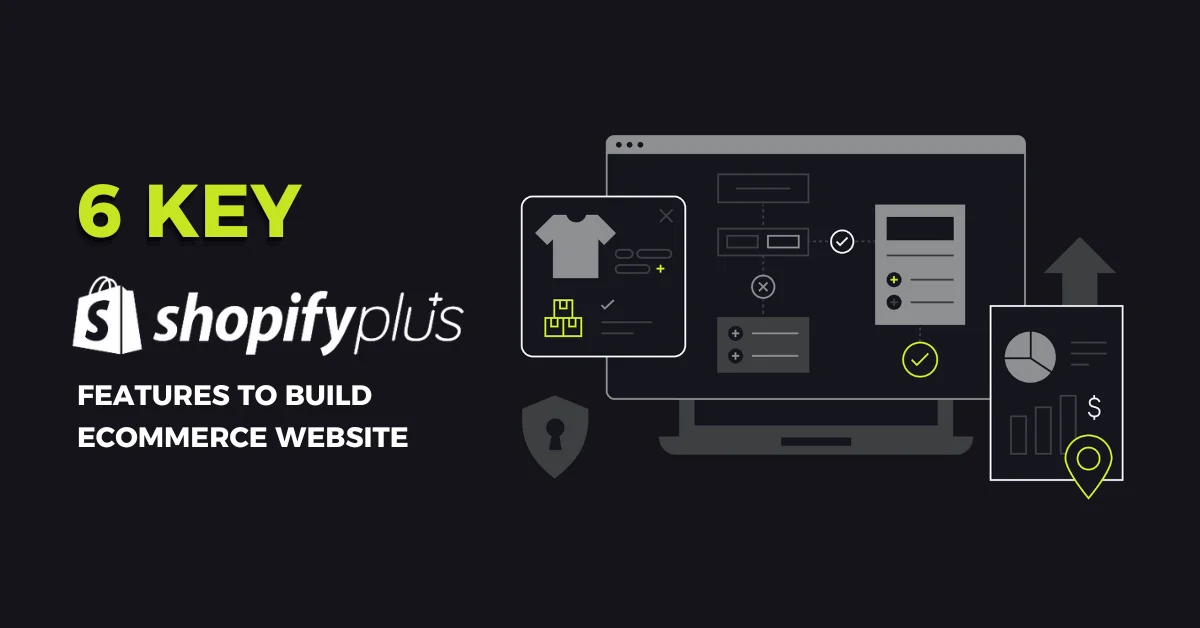
6 KEY SHOPIFY PLUS FEATURES TO BUILD ECOMMERCE WEBSITE
Shopify Plus is a platform designed for high-growth eCommerce businesses. Over the years, Shopify Plus has been the top choice for leading global brands such as GymShark, Fashion Nova, Kylie Cosmetics, and more.
Simply because the platform successfully provides its customers with exceptional features to optimize the customer experience and enhance the effectiveness of sales and marketing strategy.
Here are the top 6 core Shopify Plus features that benefit enterprise-level brands in eCommerce website development.
Related Readings: Top 10 Most Successful Shopify Plus eCommerce Websites
Multi-store management
For retailers targeting sales in the global market, Shopify Plus is the go-to choice platform.
The platform provides a multi-store feature that allows businesses to create up to 9 additional stores in 20 different locations apart from the main store to track inventory and fulfill orders.
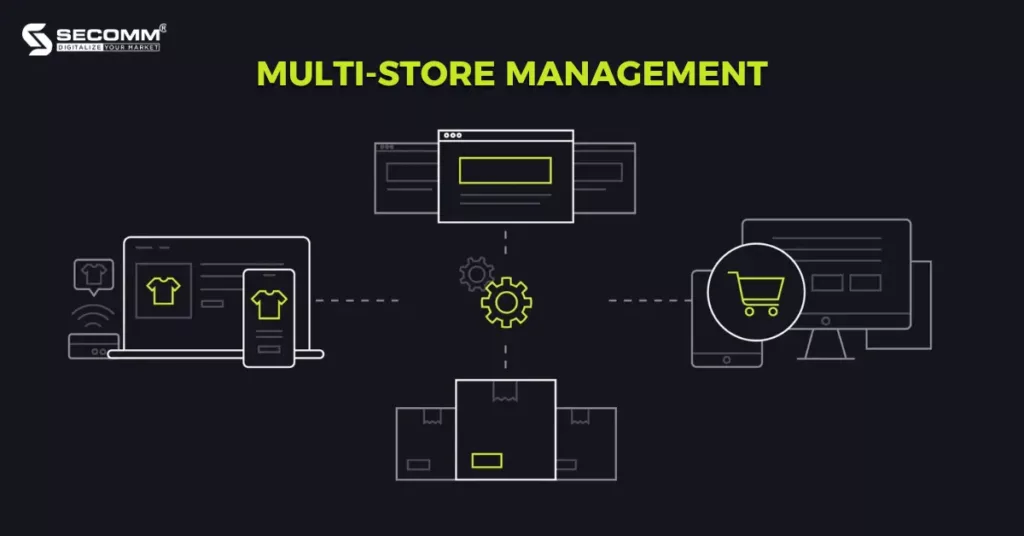
Each additional store will have its own domain, design, products, and customer data which can be managed from a single Shopify Plus account. This means businesses can easily switch between stores and manage everything from a single dashboard.
Omnichannel Capabilities
Not only Shopify Plus supports businesses in building a comprehensive eCommerce website while also facilitating Omnichannel implementation. The platform also allows businesses to provide their customers with a consistent shopping experience across channels, including websites, mobile apps, online marketplaces, social media, and physical stores.
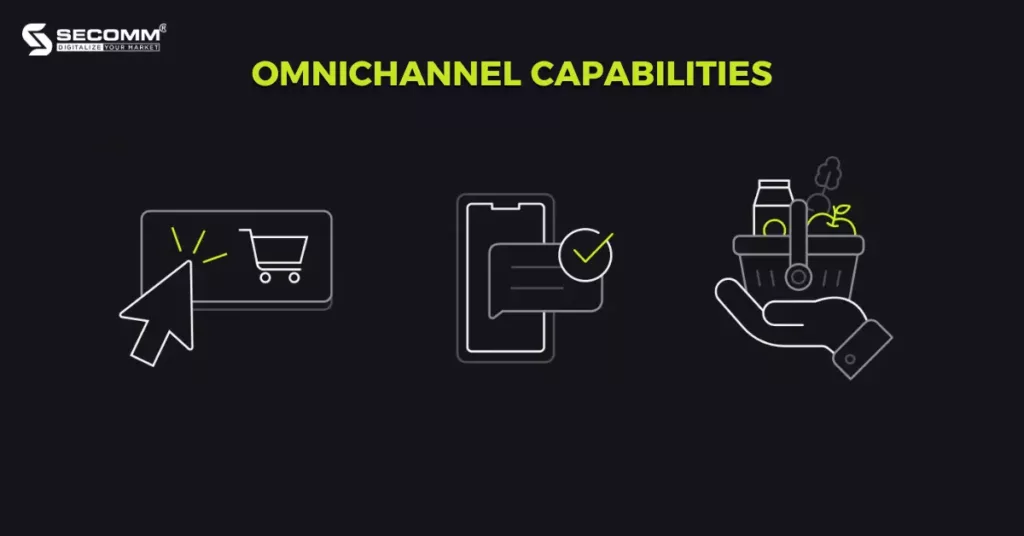
The Shopify POS feature helps seamlessly integrate sales points from online to offline. Businesses can use Shopify POS to track orders and inventory at all active sales channels.
Automatic Workflows
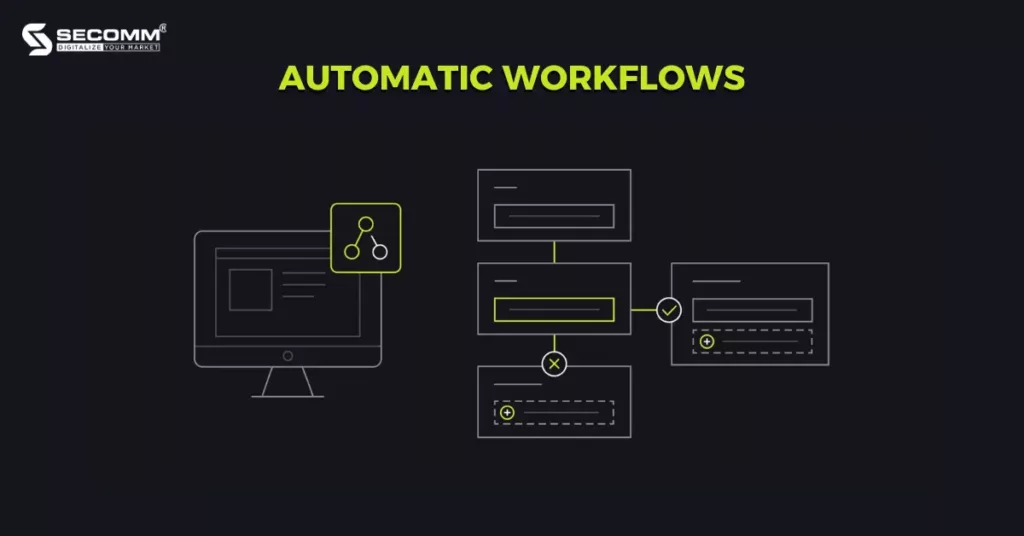
Shopify Flow
Shopify Flow is an eCommerce automation solution encouraged by Shopify for business implementing Shopify Plus.
Shopify Flow helps businesses handle repetitive tasks such as inventory management, fraud prevention, setting up loyalty programs, and fulfillment management quickly and automatically. This allows businesses to focus more on their core operations.
With Flow, businesses can rapidly build customized eCommerce automation workflows using visual, code-free blocks called triggers, conditions, and actions.
For example, an automated workflow to add customers to a loyalty program could unfold as follows:
- Trigger: An order has been placed
- Condition: If the order is equal to or exceeds $500
- Action: Tag the customer as VIP
LaunchPad
LaunchPad allows businesses to set up and automate the essential processes for organizing promotional events, flash sales, and product launches.
Using LaunchPad, businesses can:
- Create, and schedule automated tasks such as product uploads, price adjustments, image changes, and banners tailored to specific events.
- Set up complex scripts, such as providing free gifts with certain items, offering free shipping based on the type and value of the order, and evaluate sales performance between different periods and making adjustments to achieve set goals.
- Monitor campaigns to compare, analyze, and evaluate sales performance between different periods and make adjustments to achieve set goals.
Customize Checkouts Experience
If standard Shopify businesses need to leverage apps or alternative solutions, Shopify Plus businesses have access to Shopify Scripts.
This feature is exclusively available for Shopify Plus merchants and allows for personalized customer experiences at the cart and checkout stages. Businesses can use the Script Editor app to gain more control over how customers interact with their eCommerce website by creating special offers, and discounts, adding upsells, cross-sells, and customizing the checkout experience.
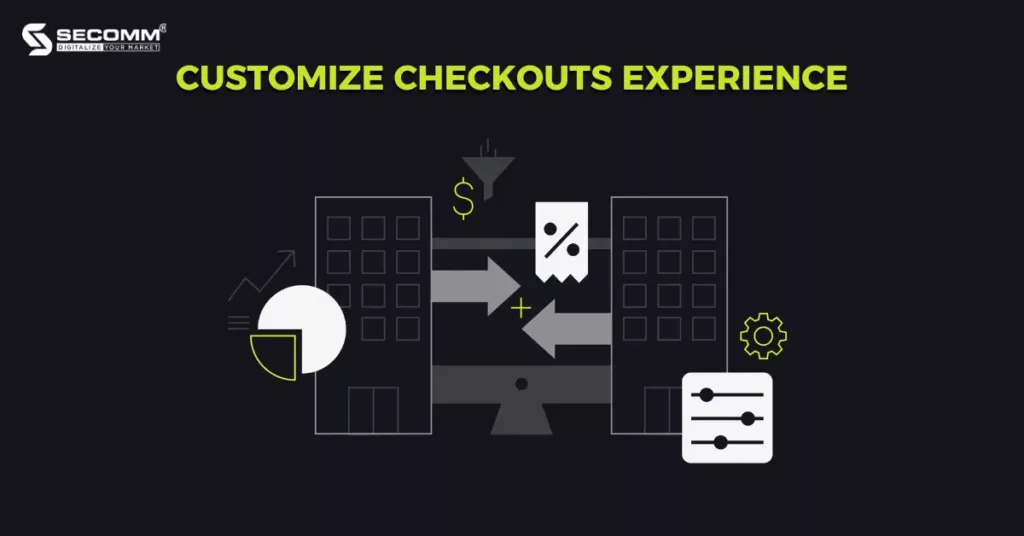
With Shopify Scripts‘ high level of autonomy, businesses can freely experiment to deliver unique experiences for their customers.
Three types of scripts include
- Line Item Scripts: These scripts can adjust the price of a specific product whenever it is added or removed from the cart.
- Shipping Scripts: These scripts can be used to modify shipping methods and fees.
- Payment Scripts: These scripts can rename, hide, and reorder payment gateways and will run every time a customer accesses the payment method page during checkout.
Here are some examples of scripts that can be customized:
- Percentage (%) discount for products.
- Dollar ($) discount for products.
- Bulk discounts.
- Buy One Get One (BOGO).
- Modify shipping fees.
- Rearrange payment gateways.
- Hide payment gateways.
Advanced Security
Shopify Plus meets the highest standards of online security, and all Shopify Plus businesses have SSL certificates used to encrypt sensitive information, such as credit card details.
Moreover, Shopify Plus provides two-factor authentication and account recovery features to protect websites from unauthorized access.
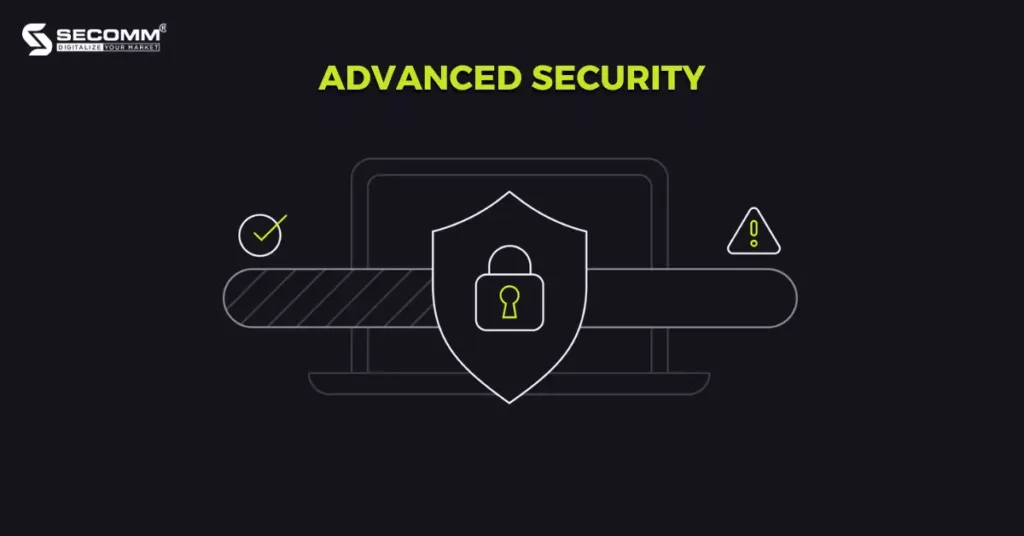
In particular, businesses can obtain an Extended Validation SSL certificate, which offers the highest level of protection available on Shopify Plus. In this case, a green padlock icon will be displayed in the browser’s address bar, assuring customers that the business’s website is secure to use.
Shopify Plus also offers fraud analysis tools that allow businesses to monitor their website for detecting any suspicious activities. For example, when any fraudulent orders are detected, the tool will flag them for the business to decide whether to cancel or fulfill the order.”
B2B Support
Shopify Plus offers a range of features to support B2B eCommerce operations, including:
- Flexible payment options
- Order and reorder management
- Customized pricing
- Integration with ERP, OMS, and CRM systems.
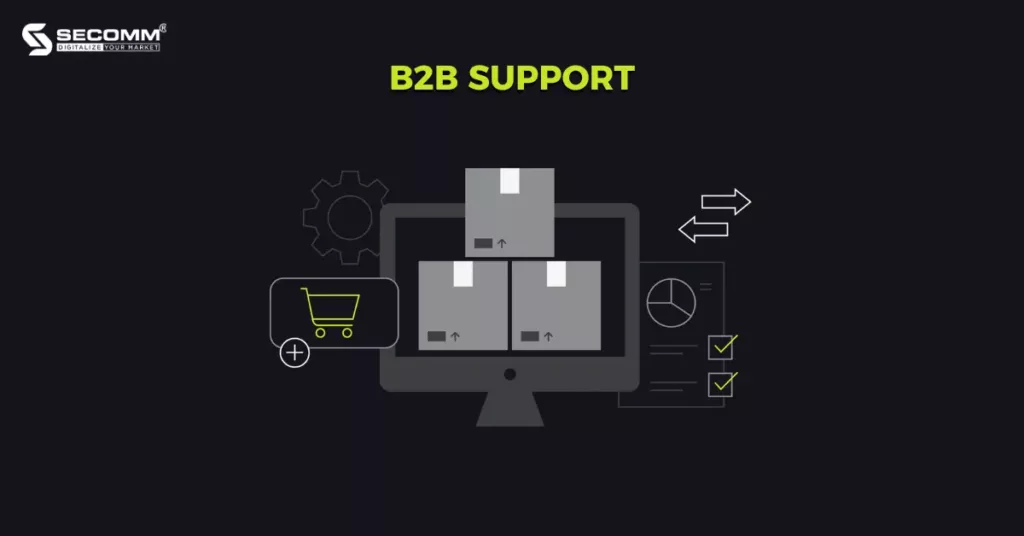
Additionally, businesses can set up wholesale channels to cater to customers with bulk purchasing needs.
Those are the 6 core features of Shopify Plus that you can leverage to boost your business operations efficiency and give your customers the best shopping experience.
Contact or call directly to the SECOMM hotline (02871089908) for a free consultation.
 2
2

 7,358
7,358

 0
0

 1
1
